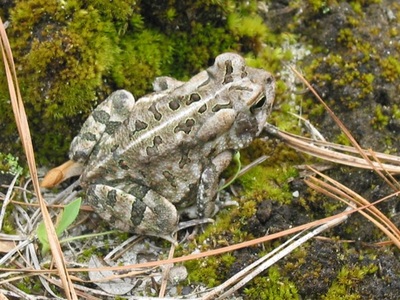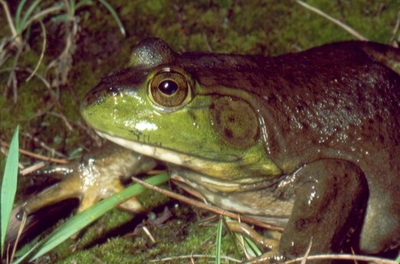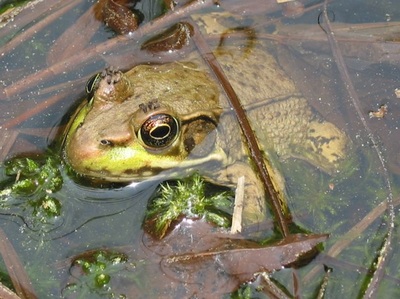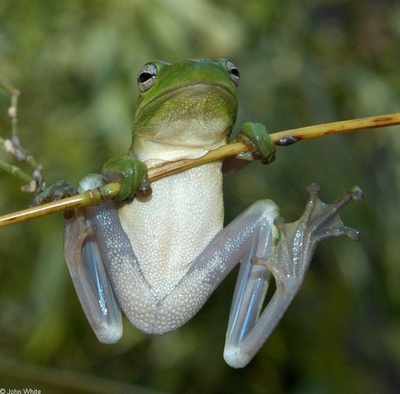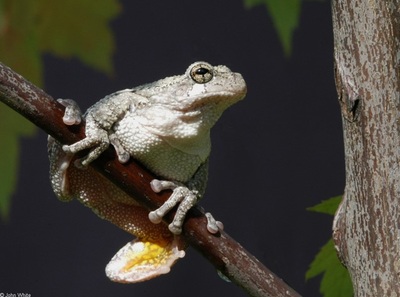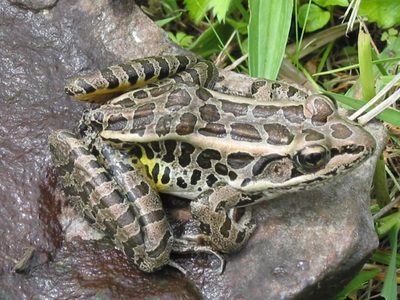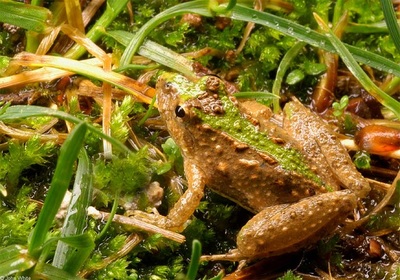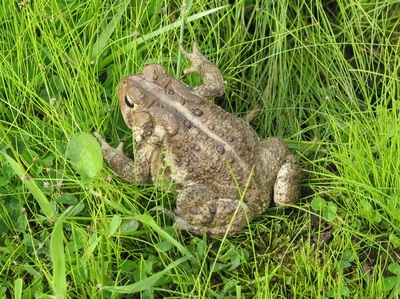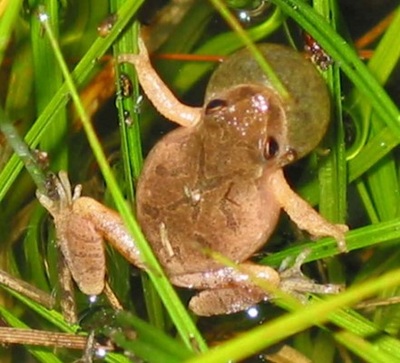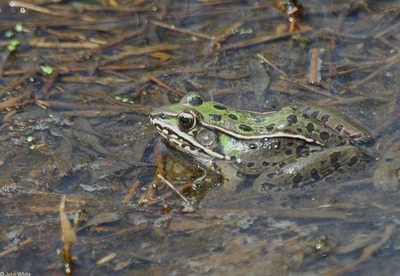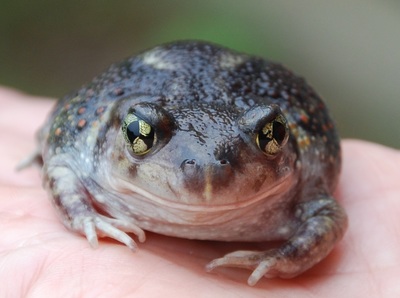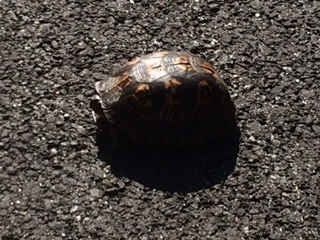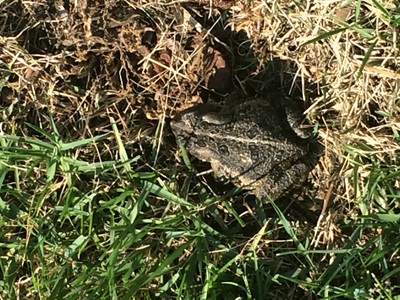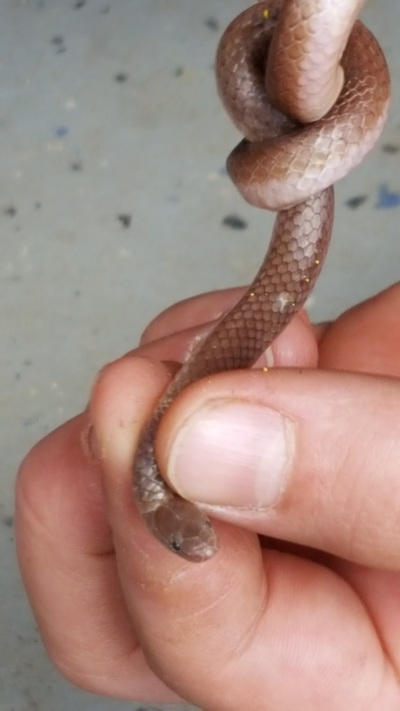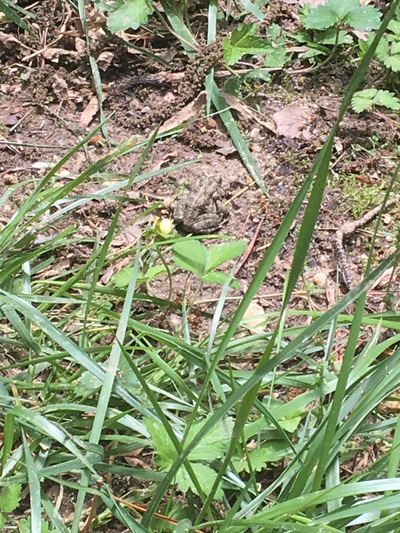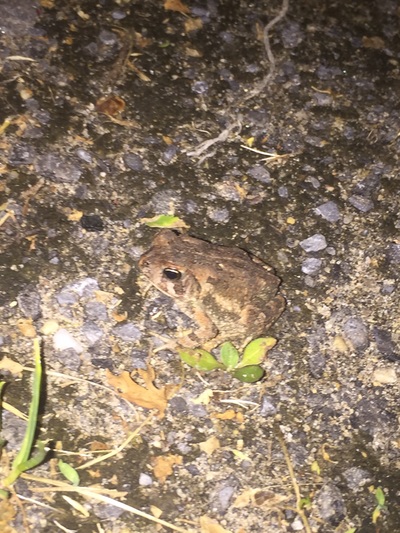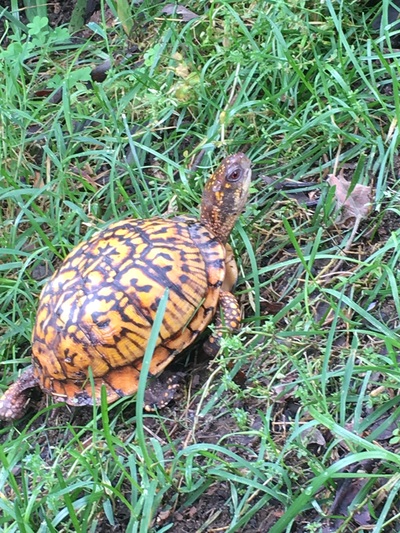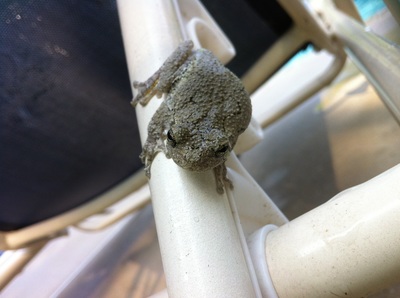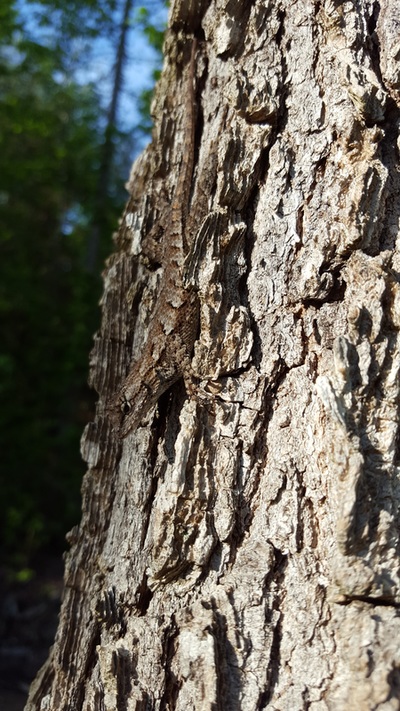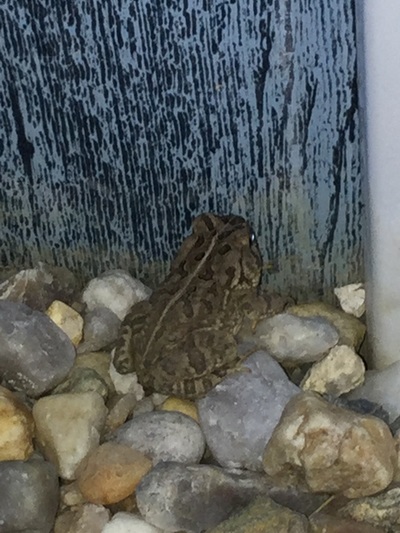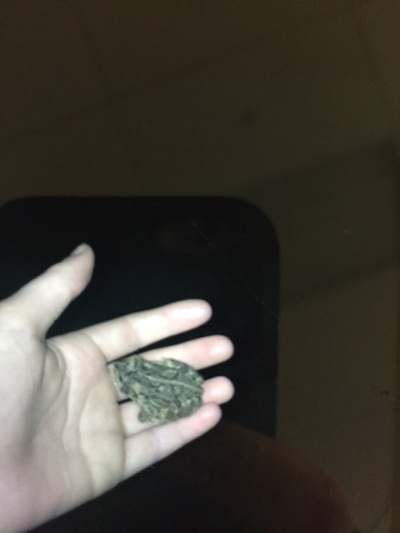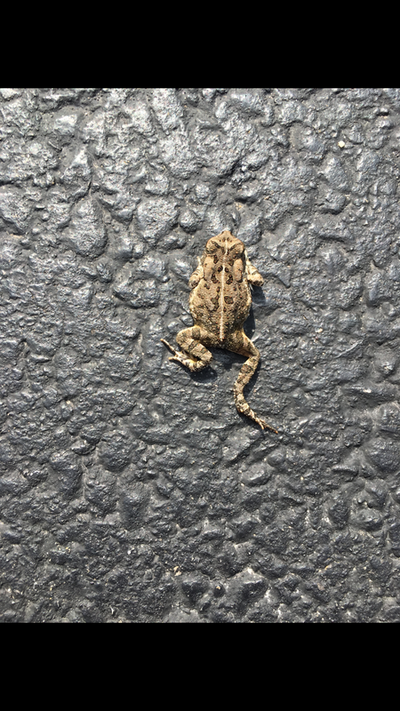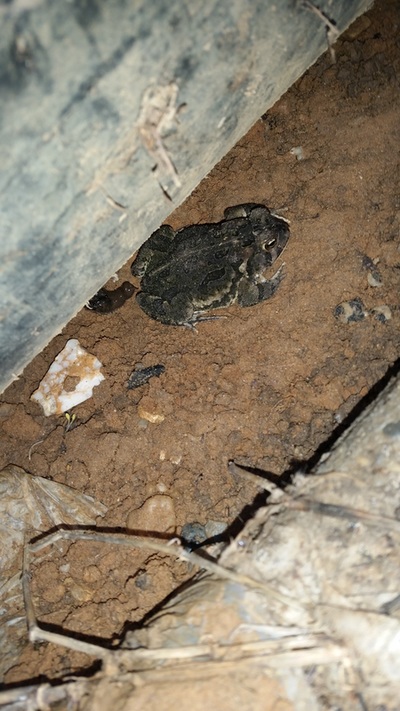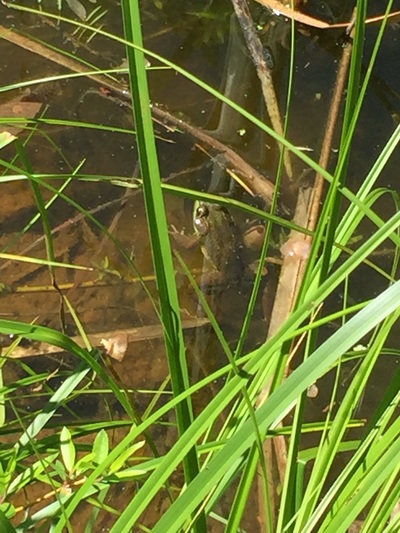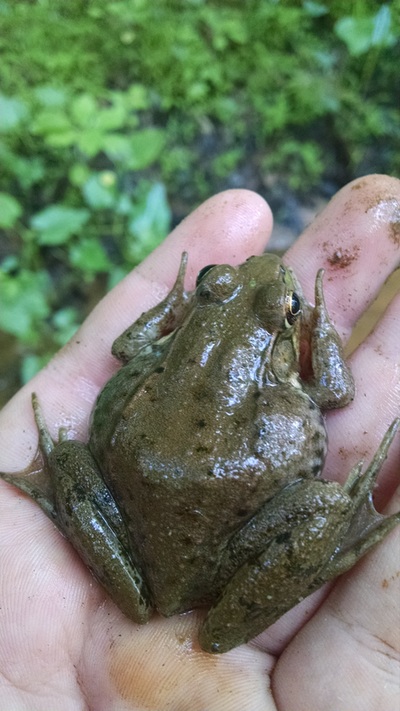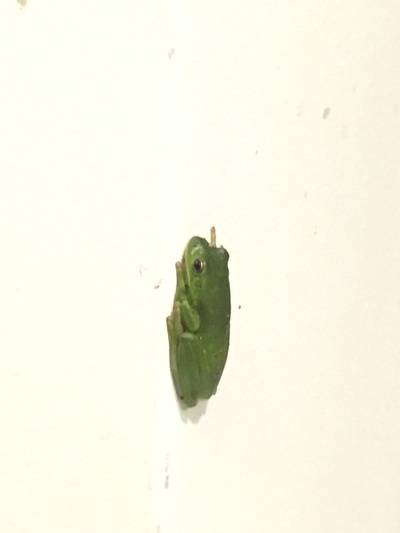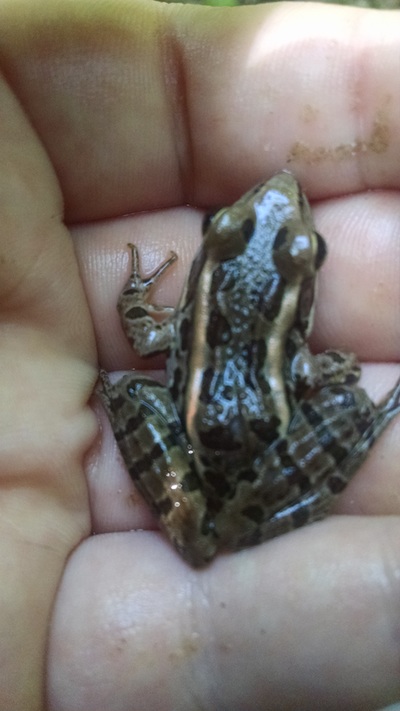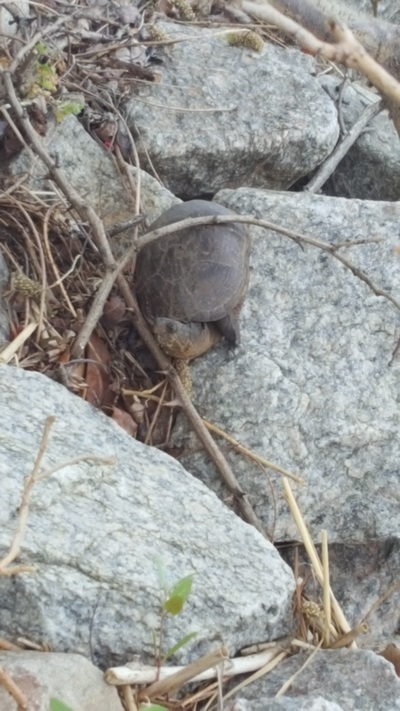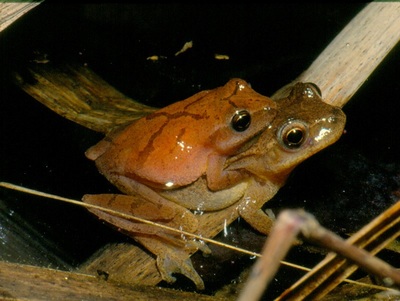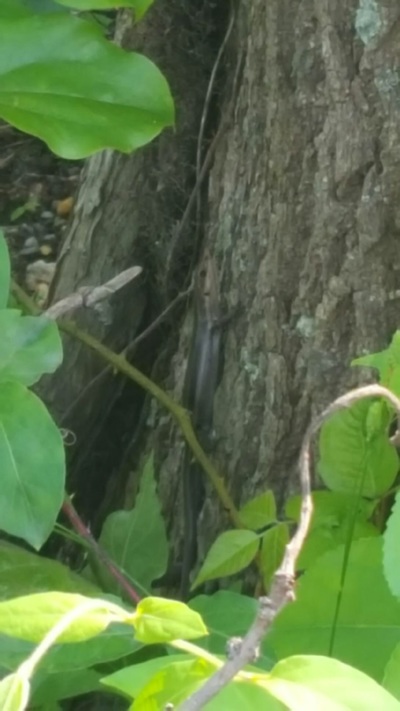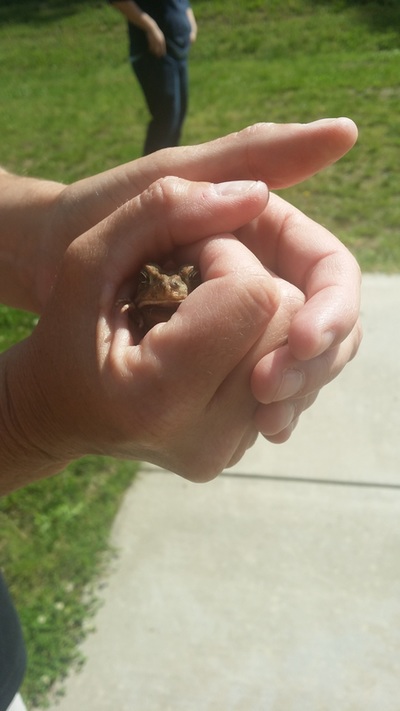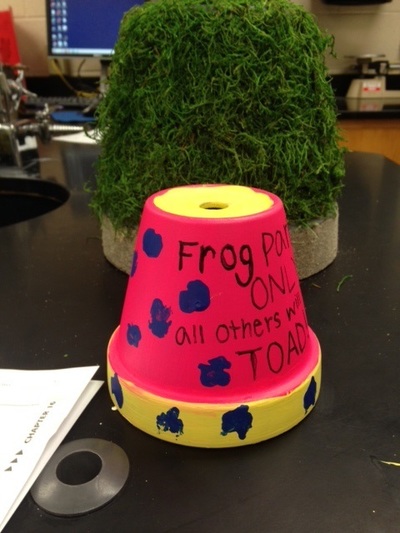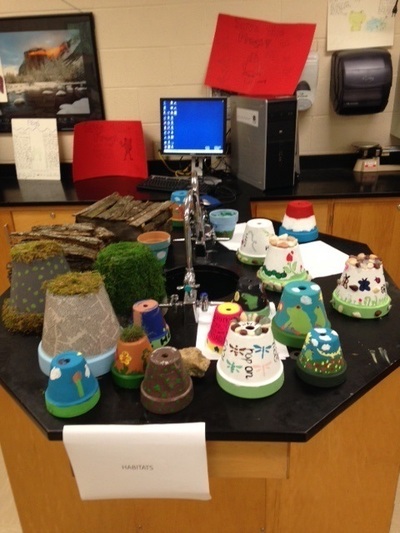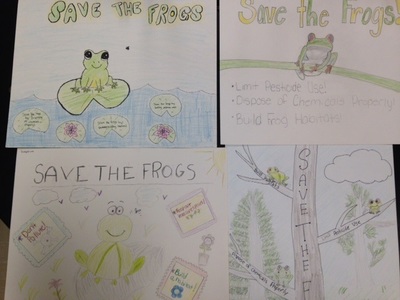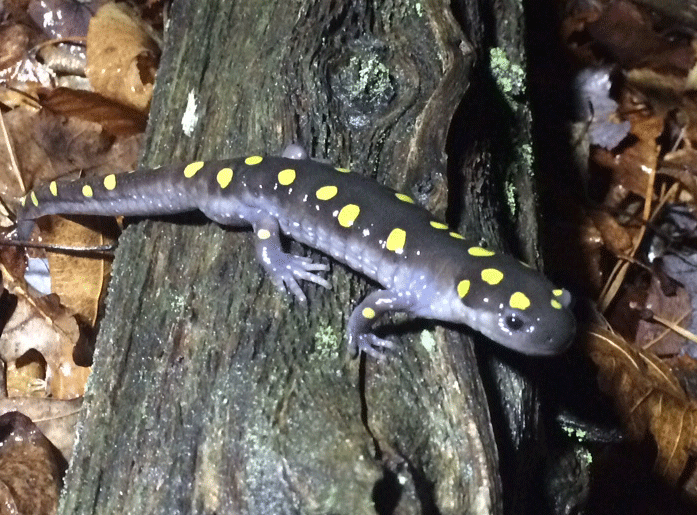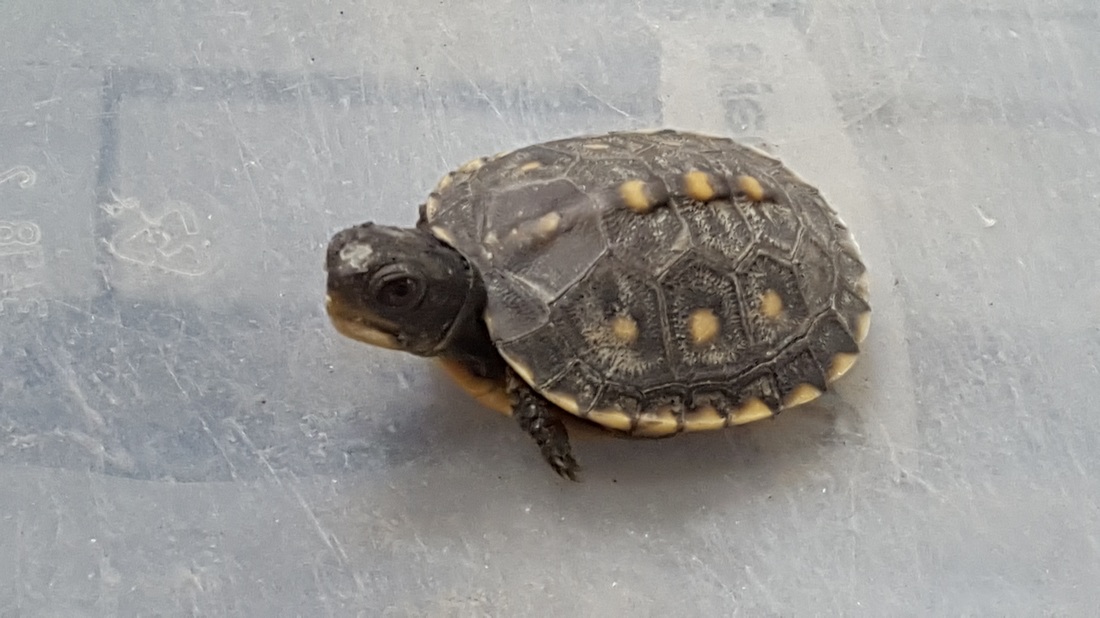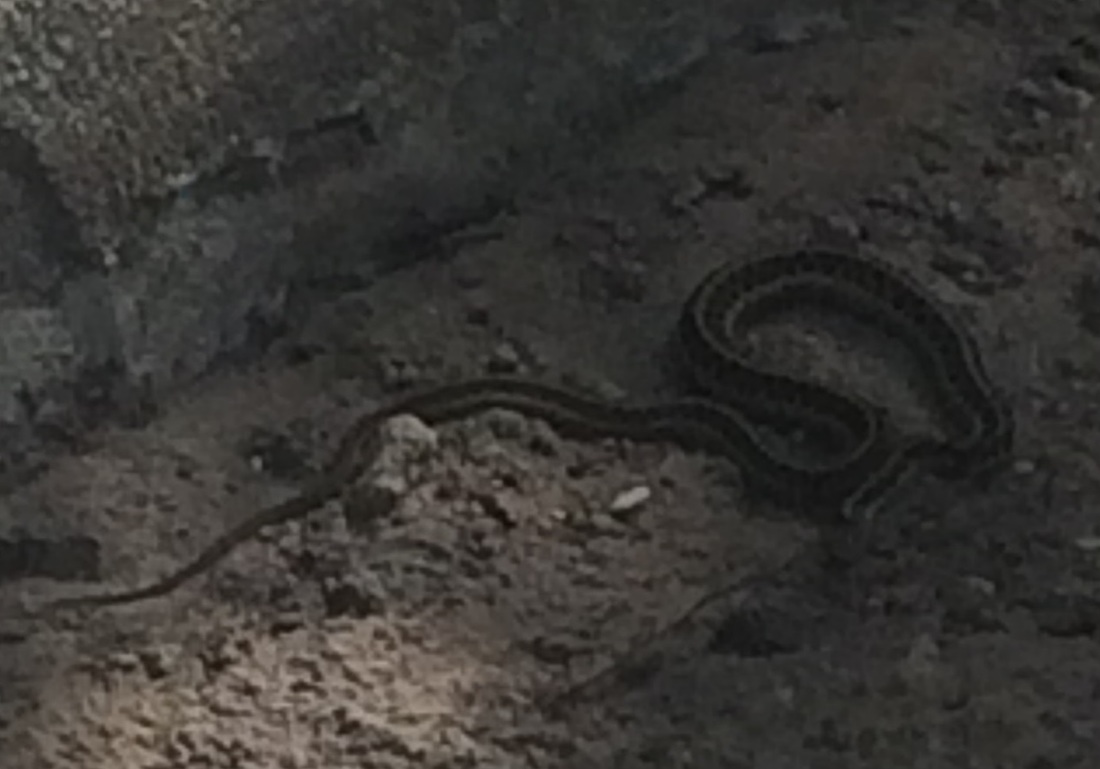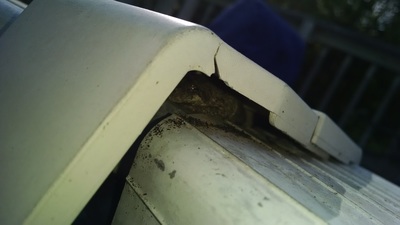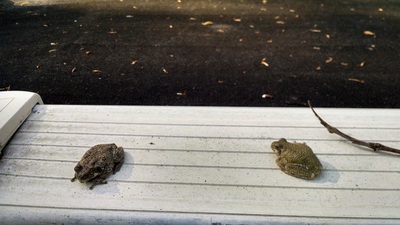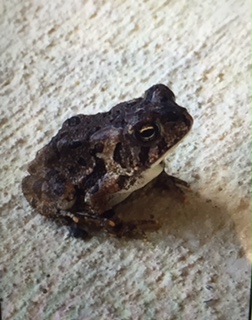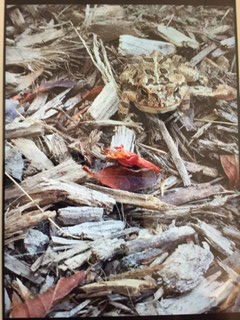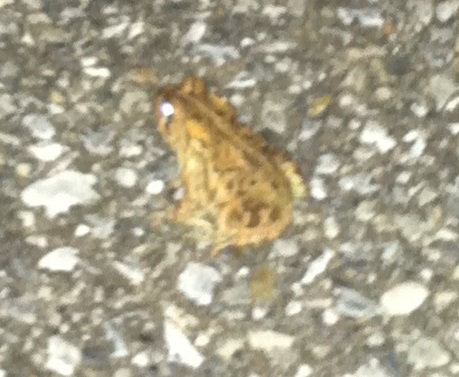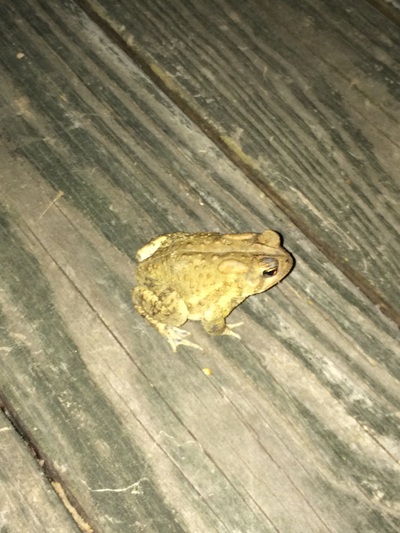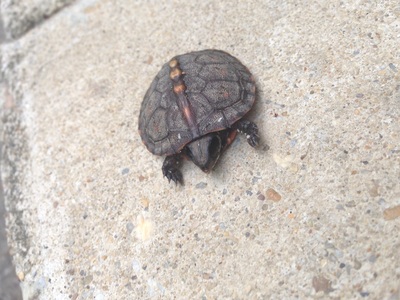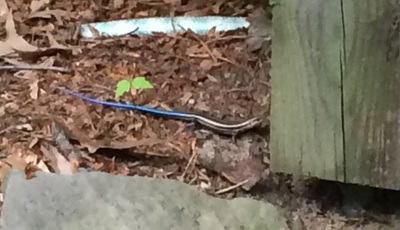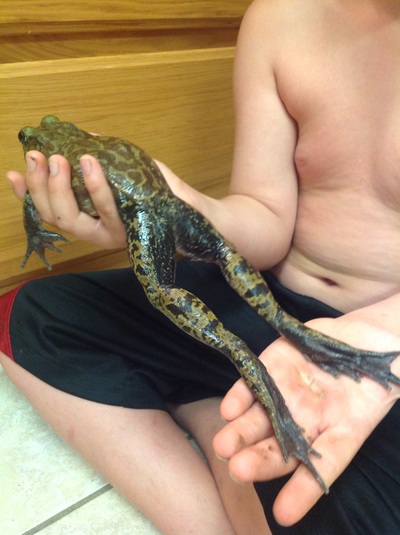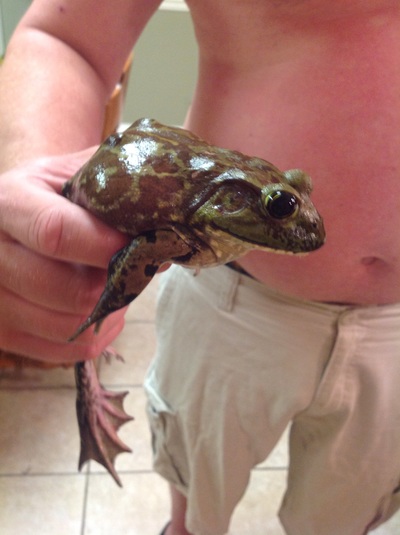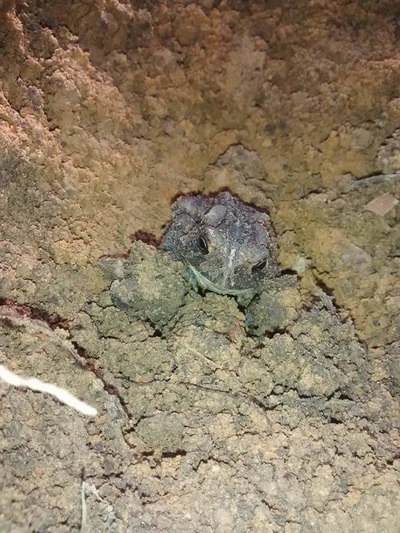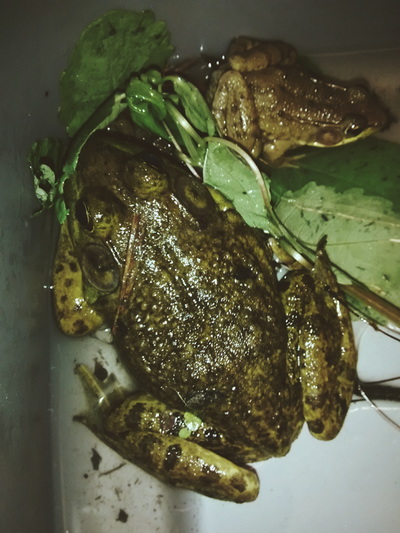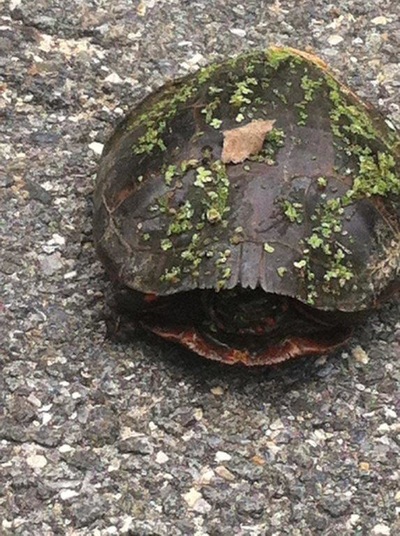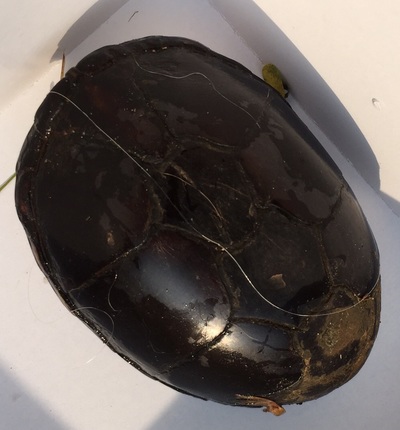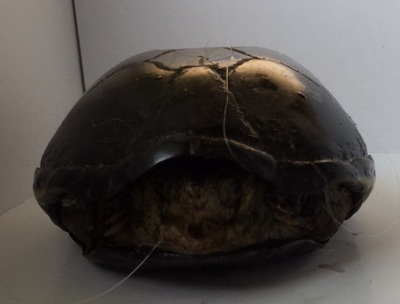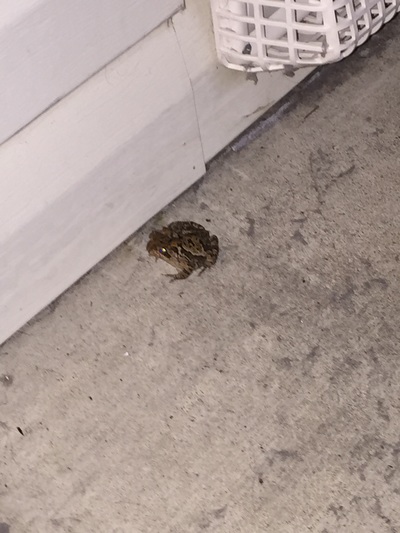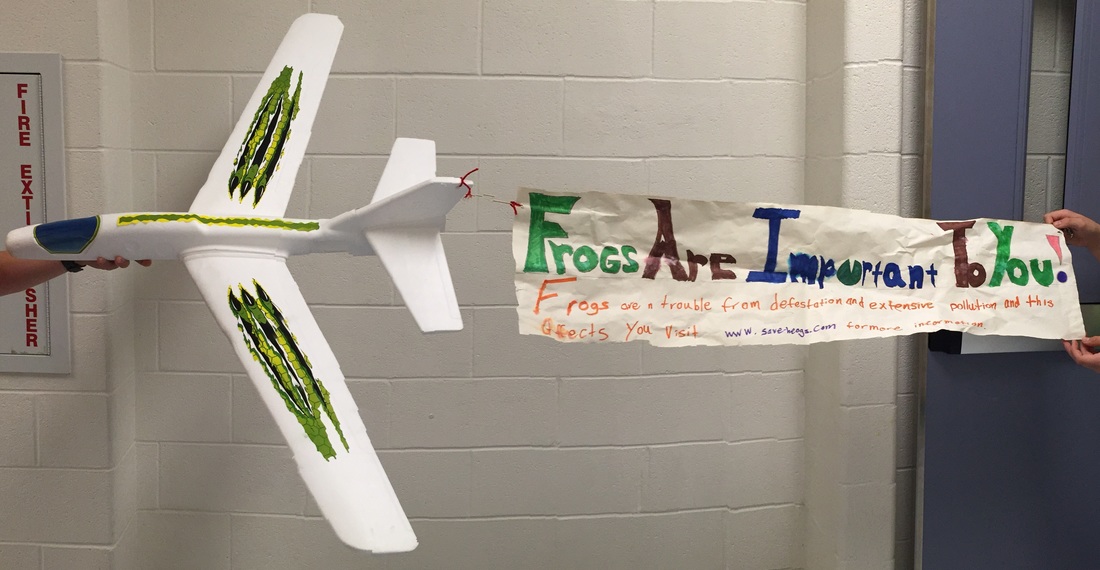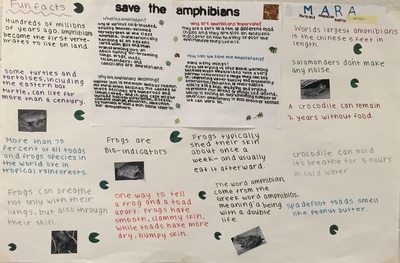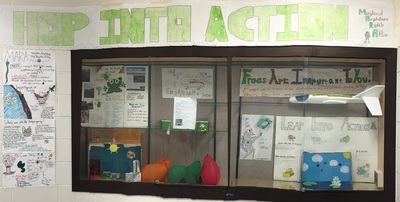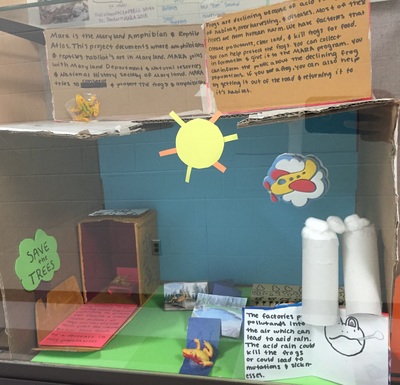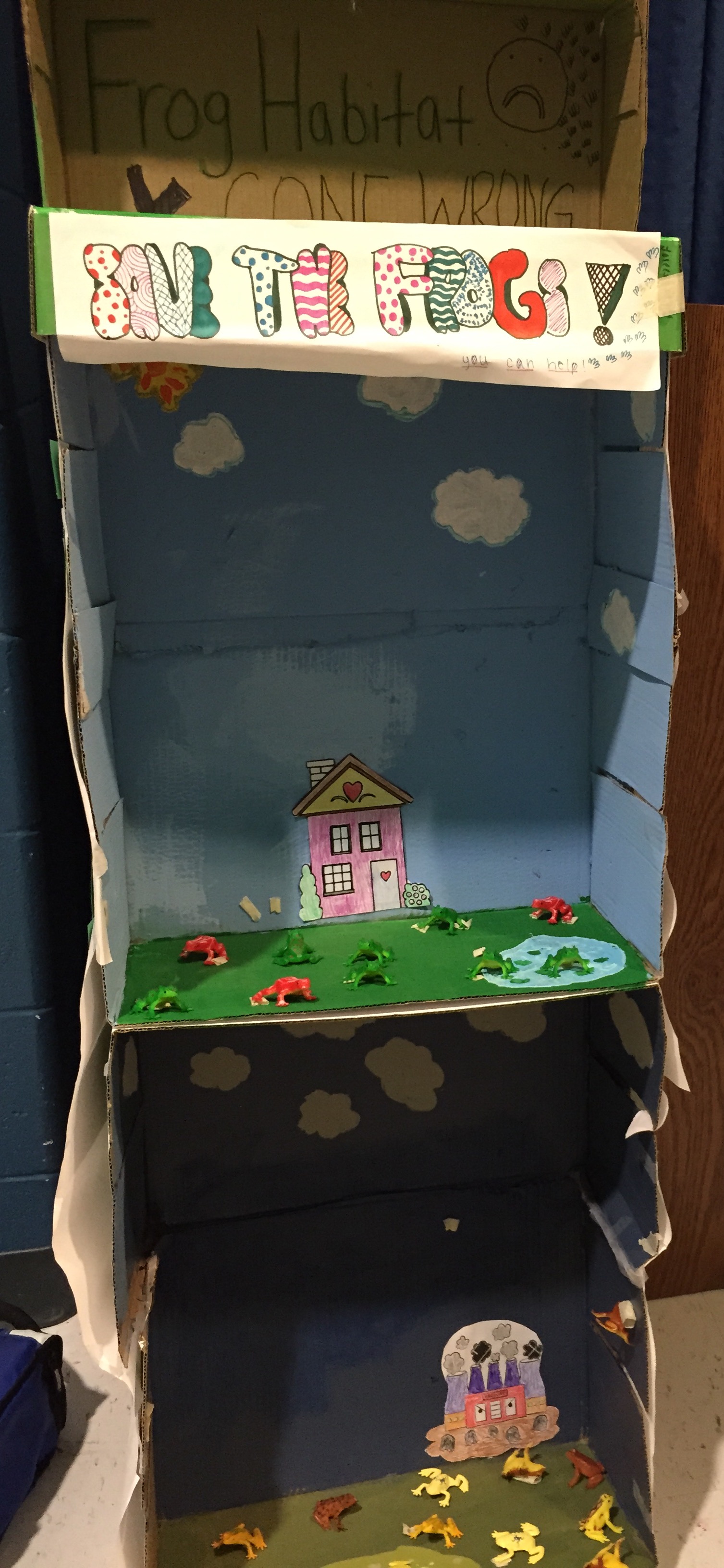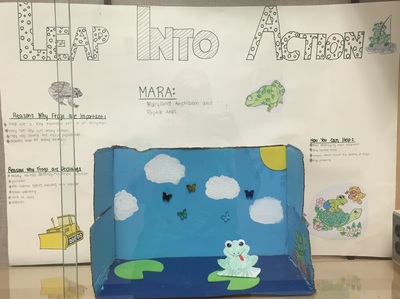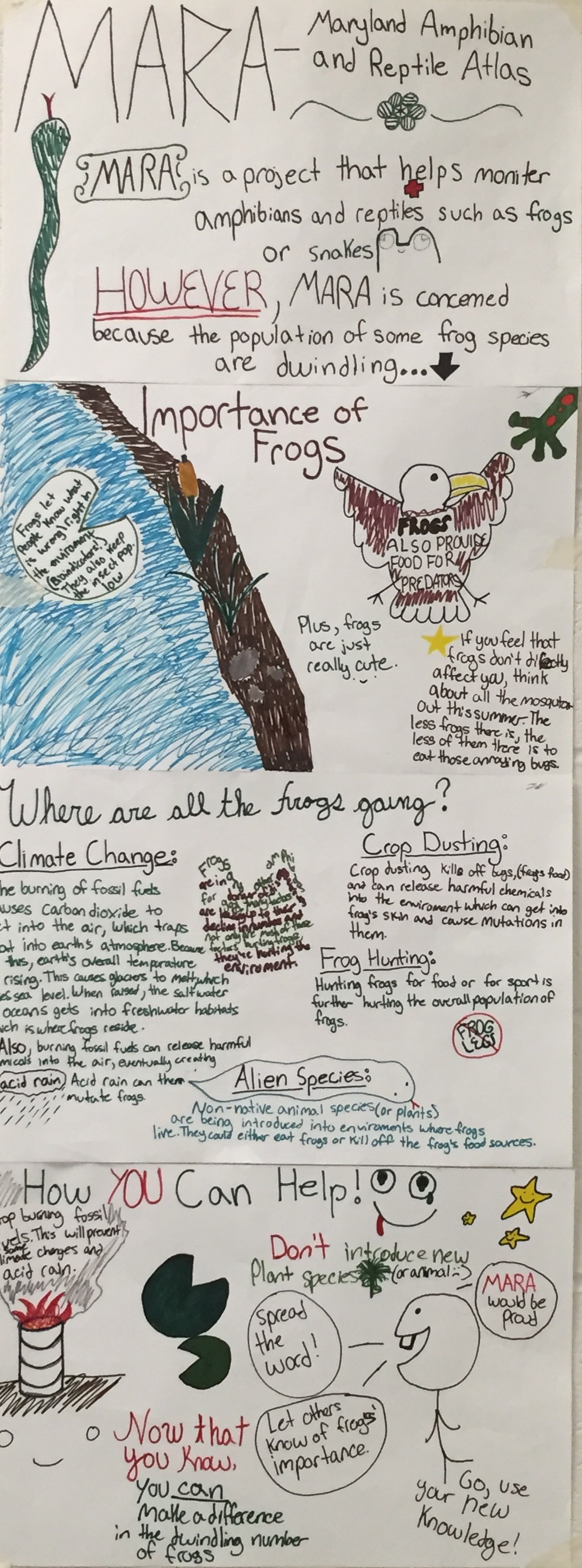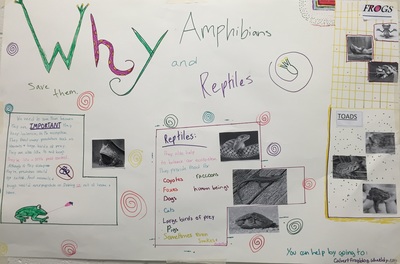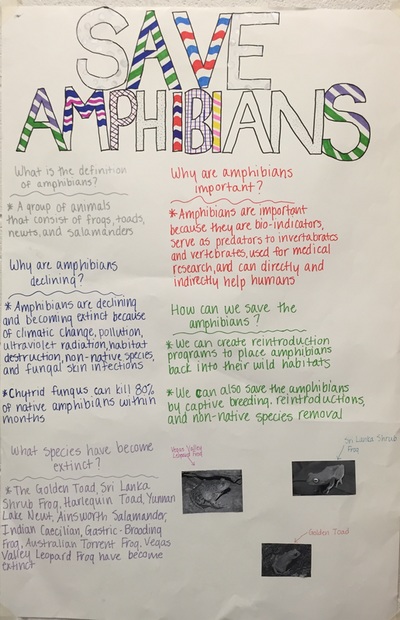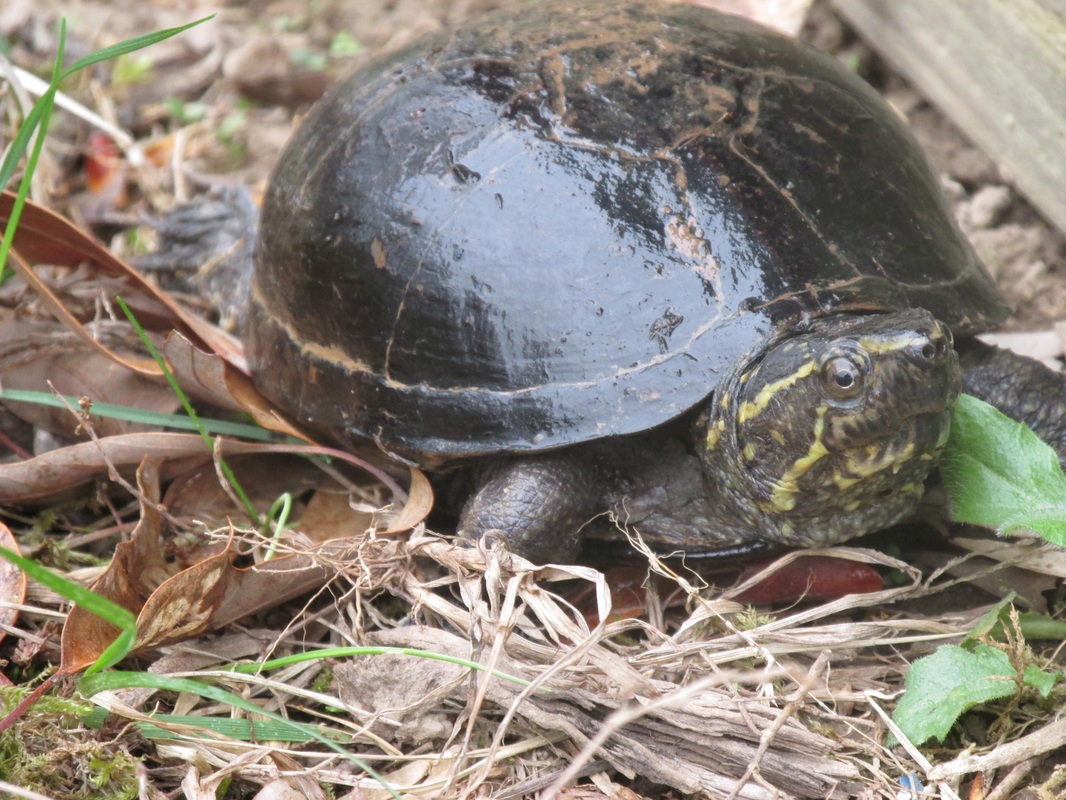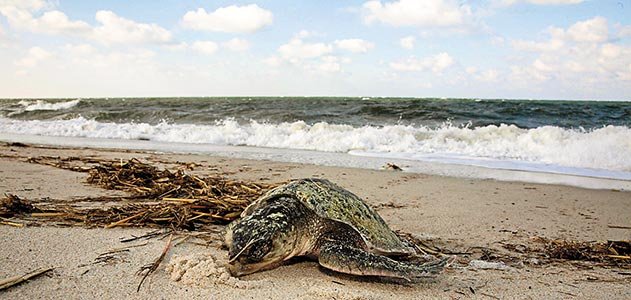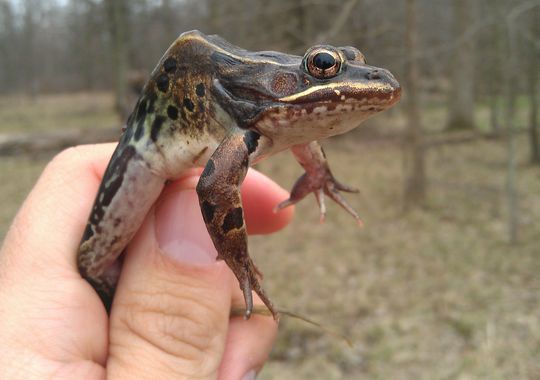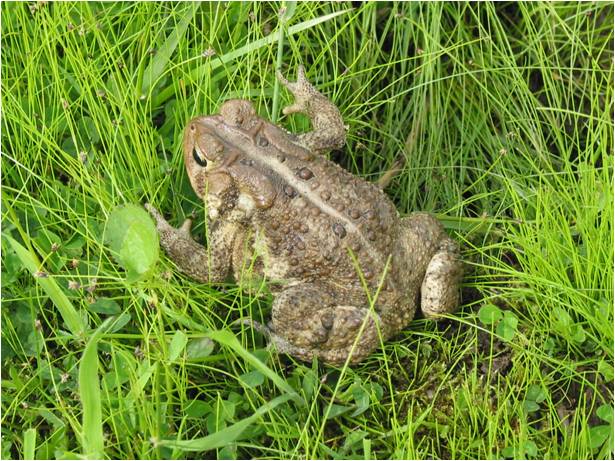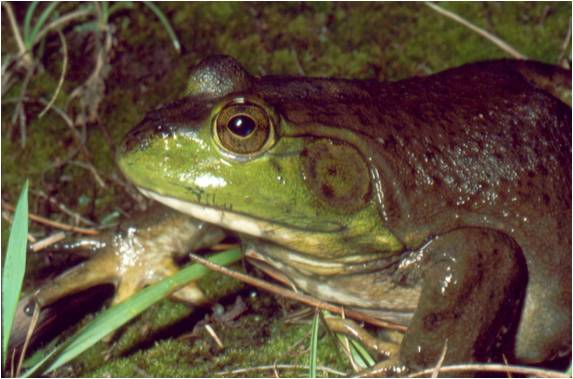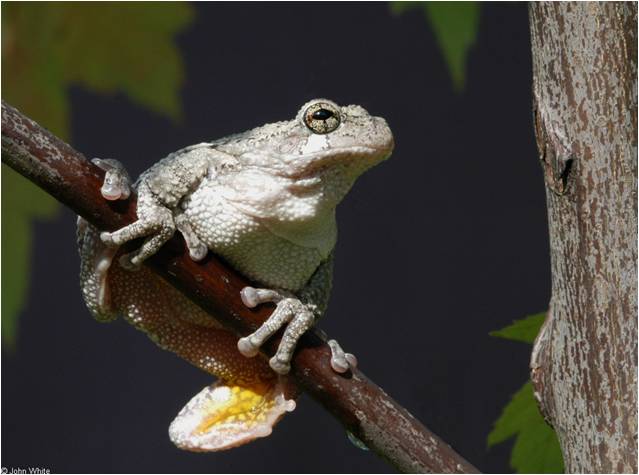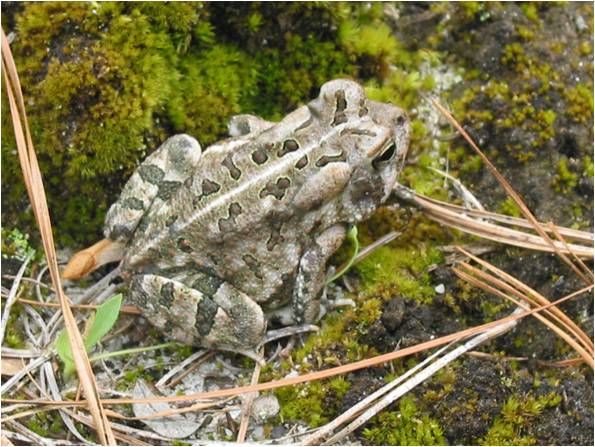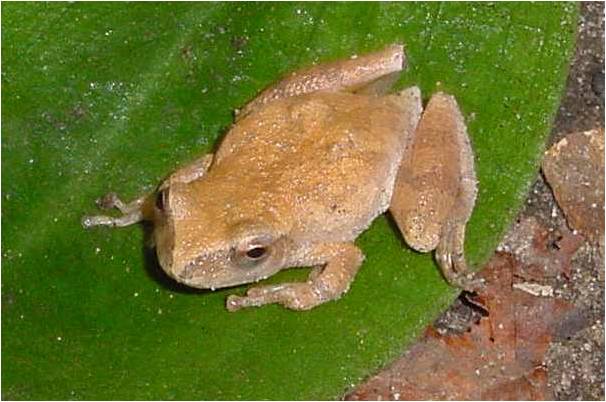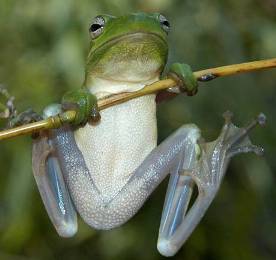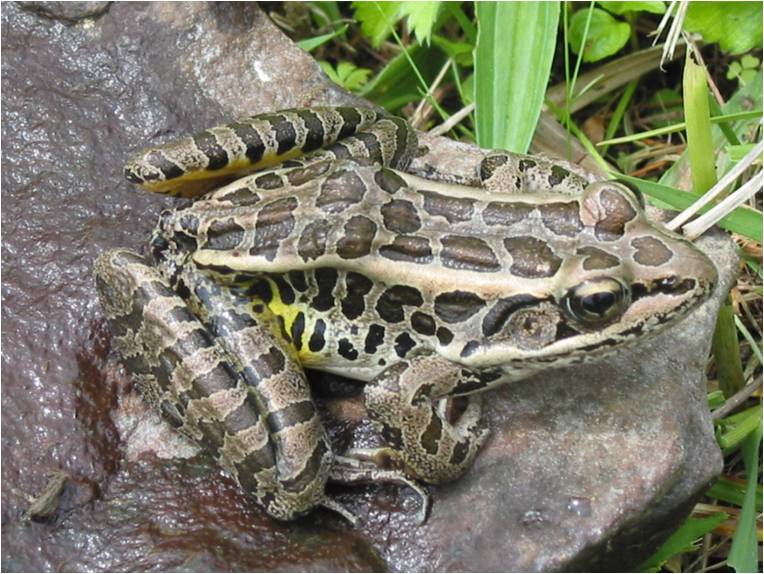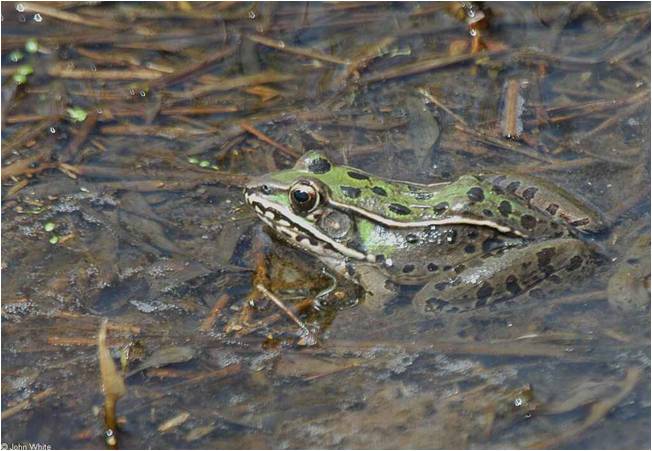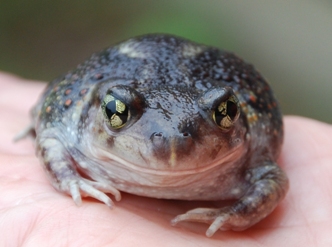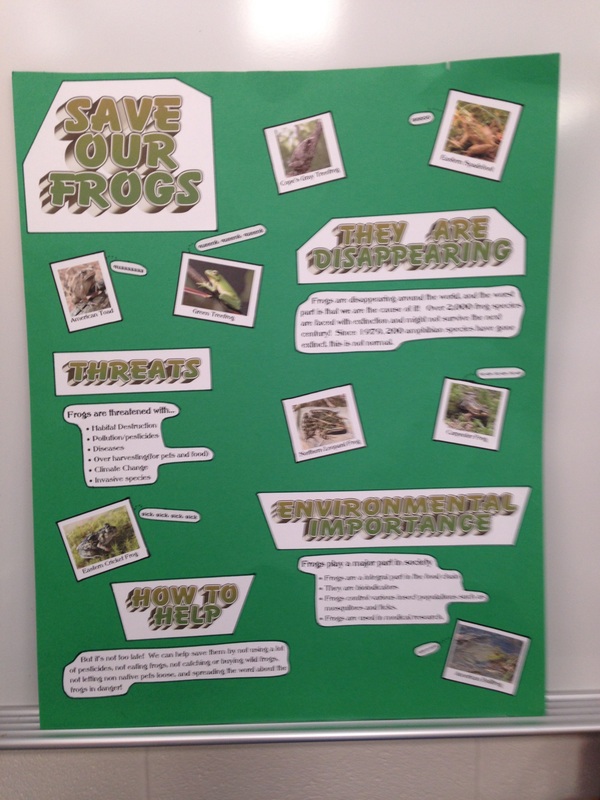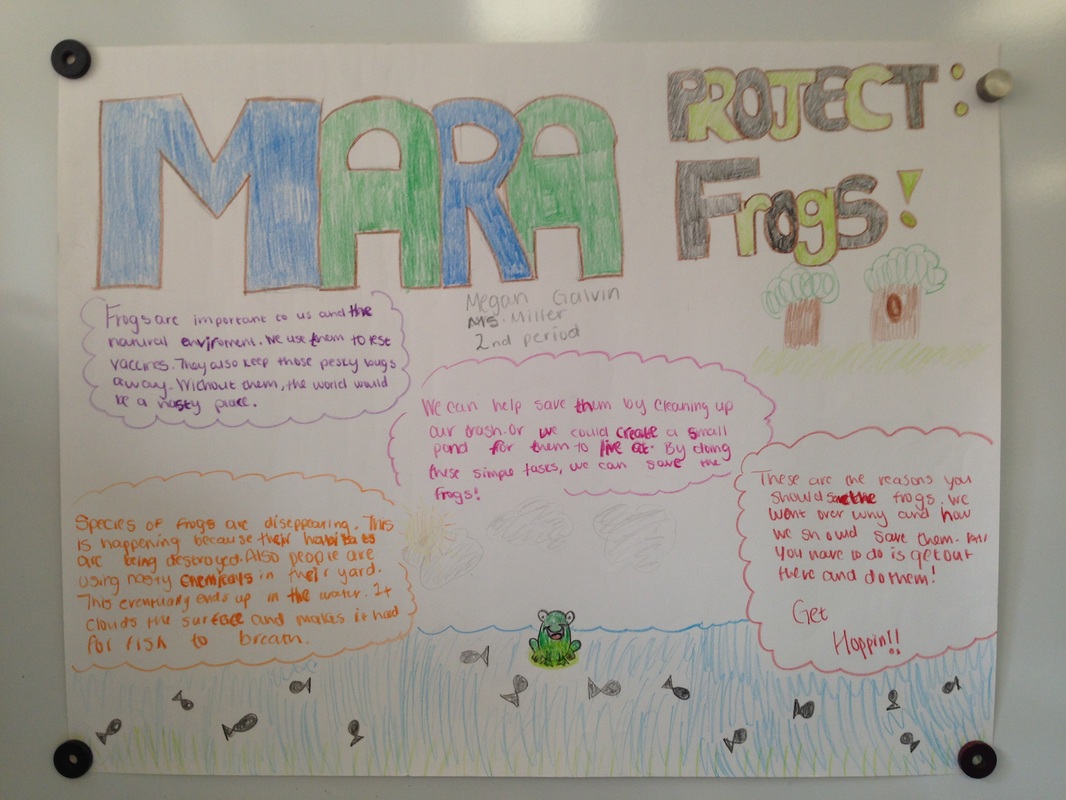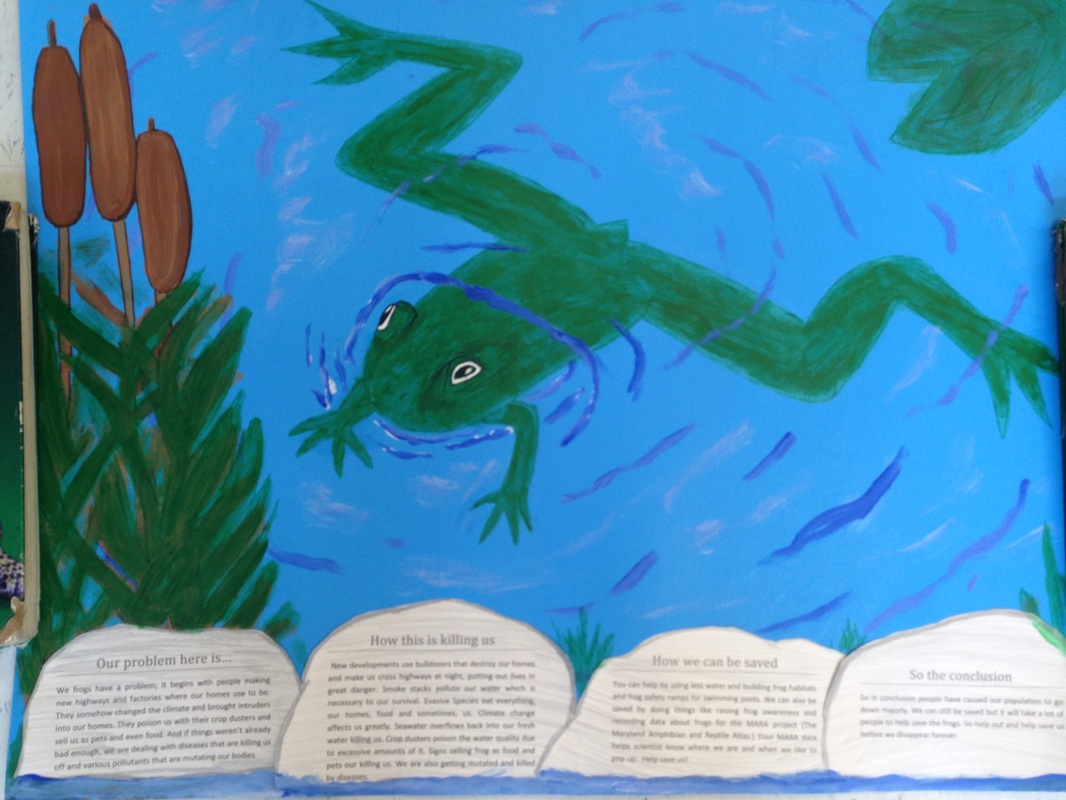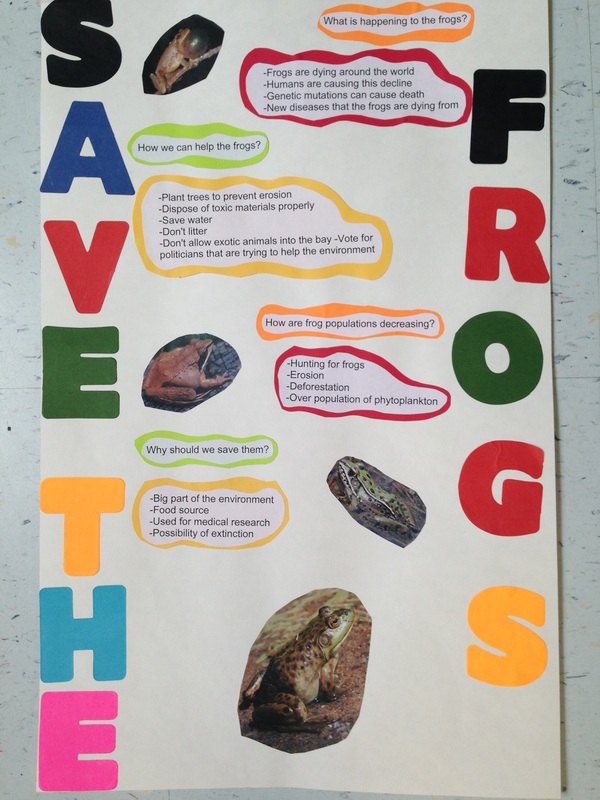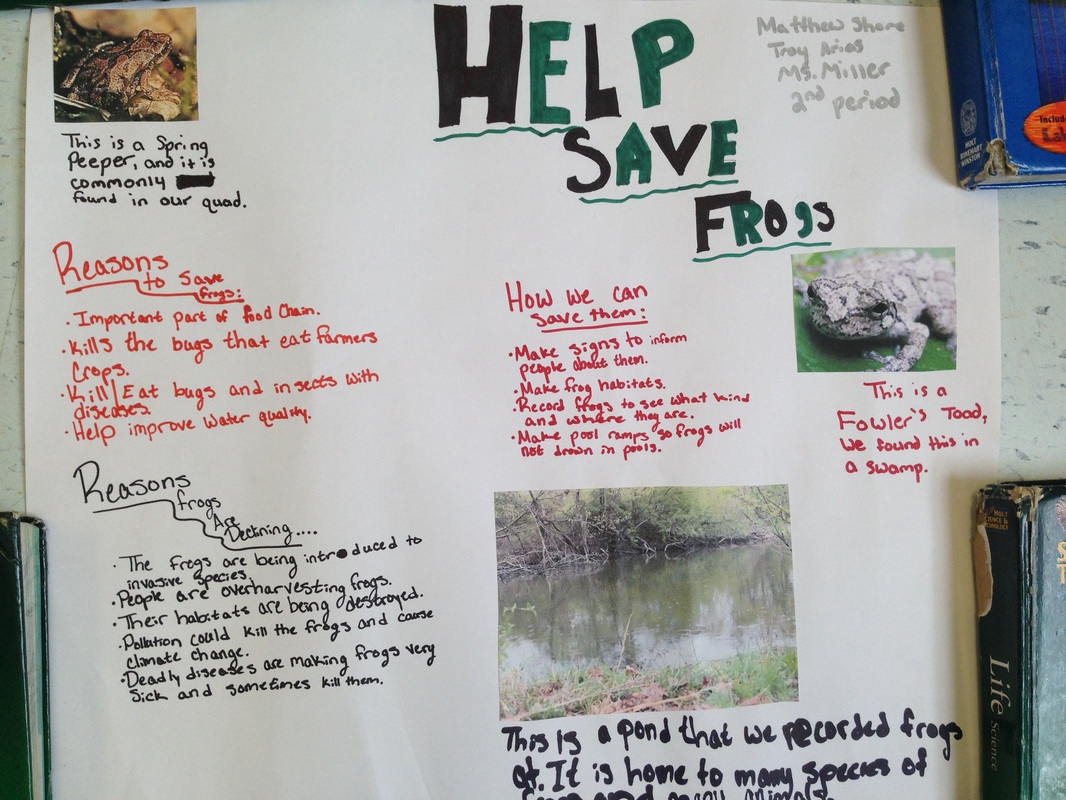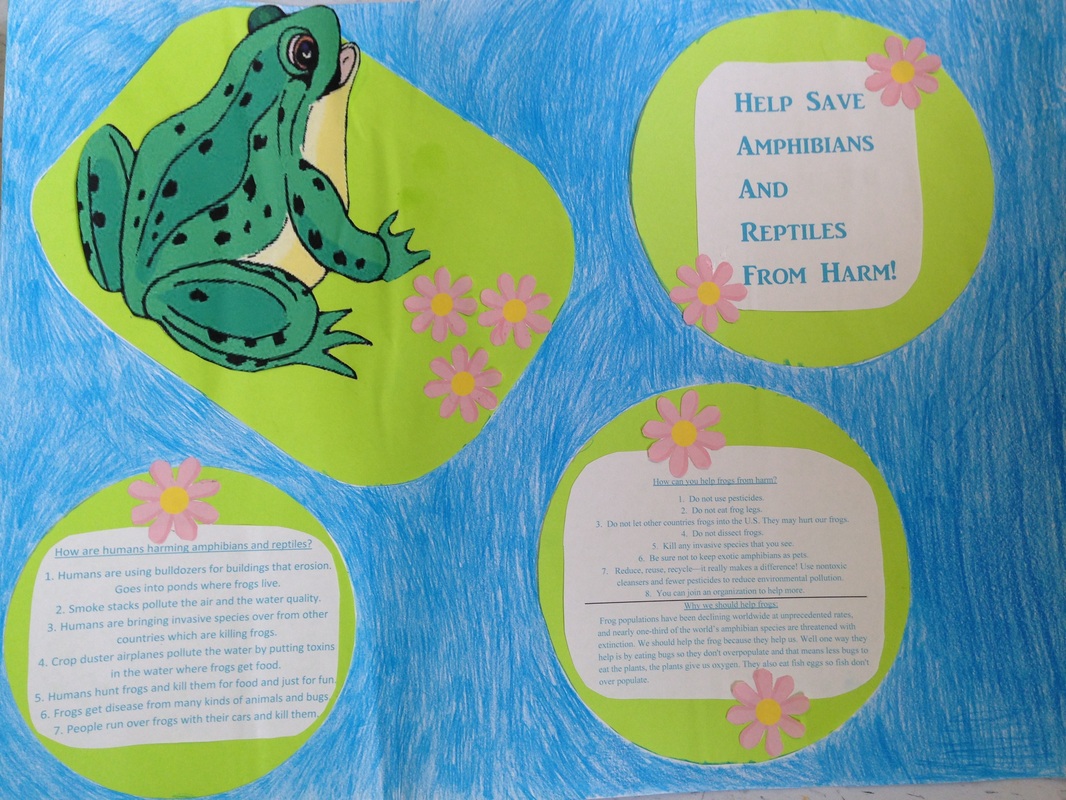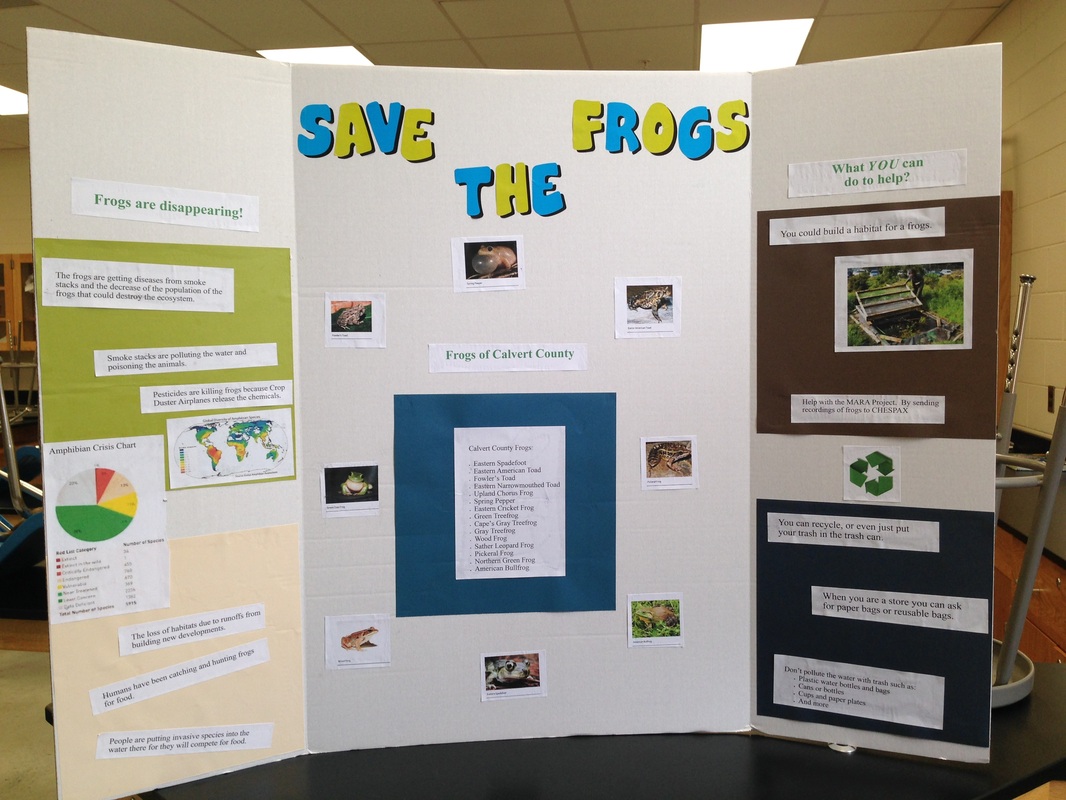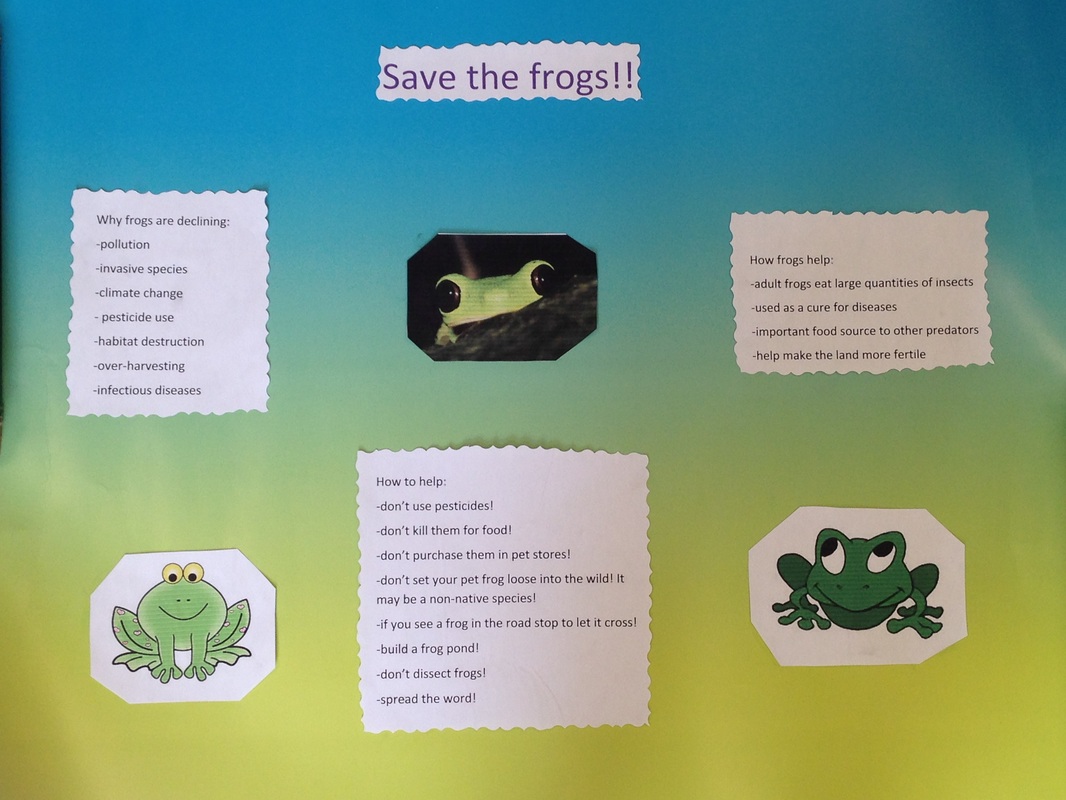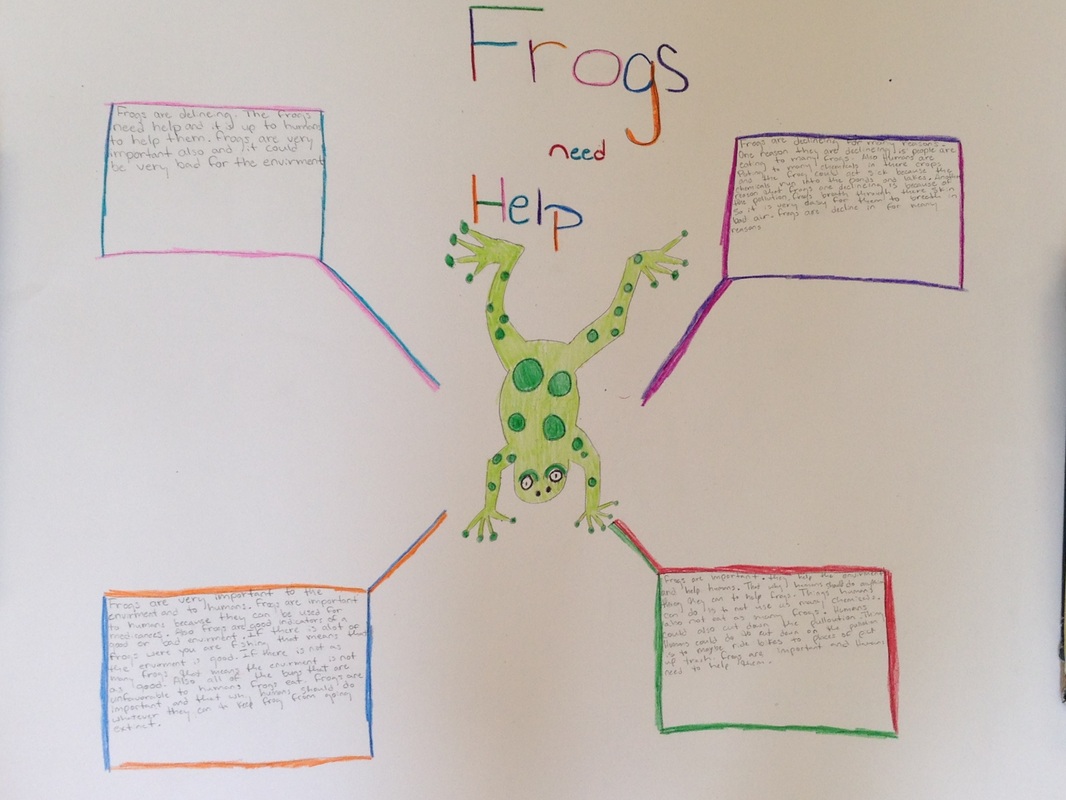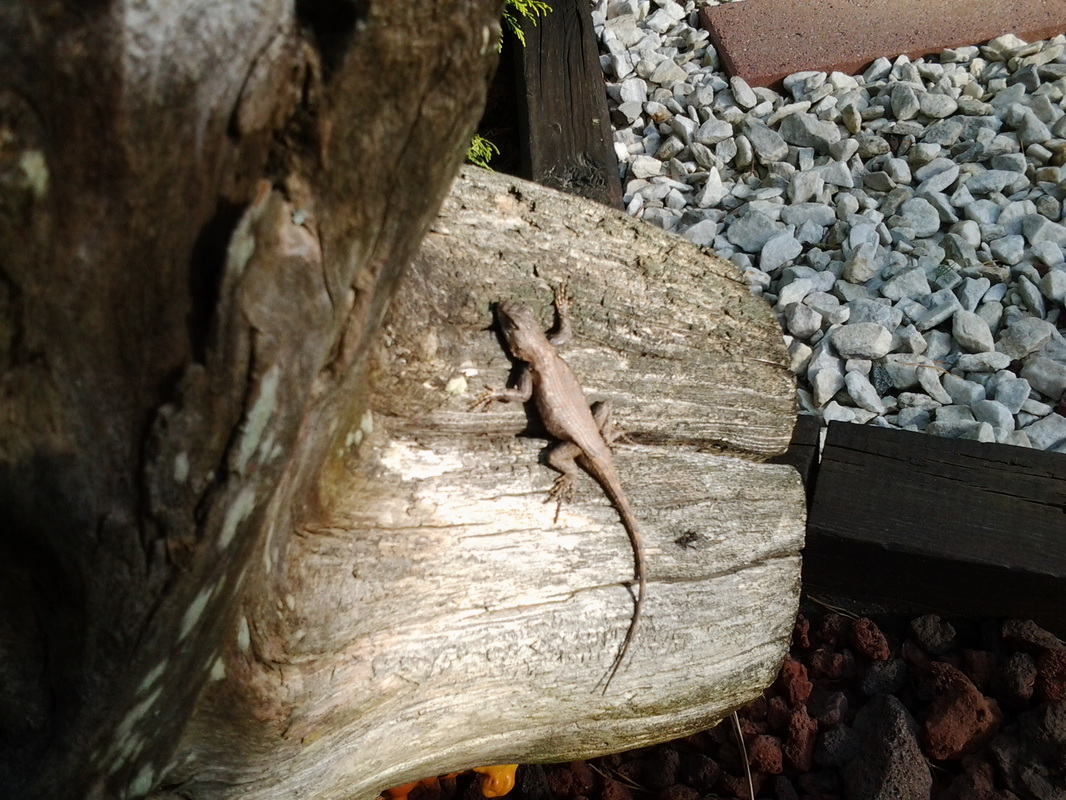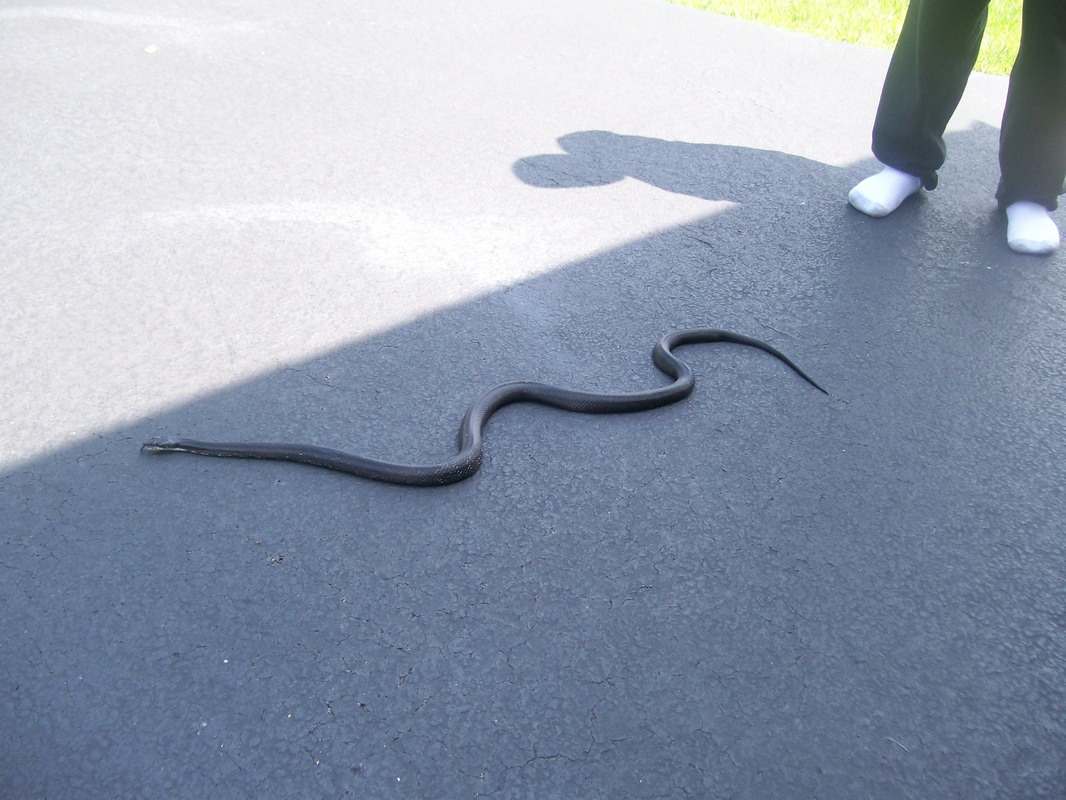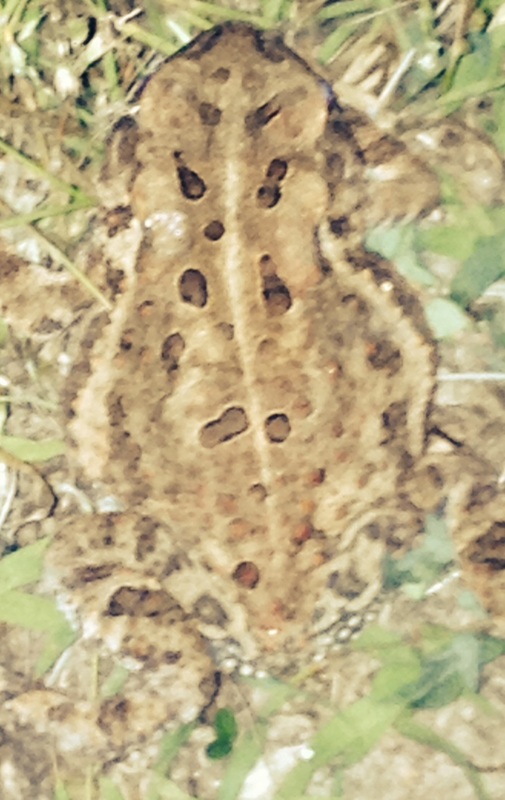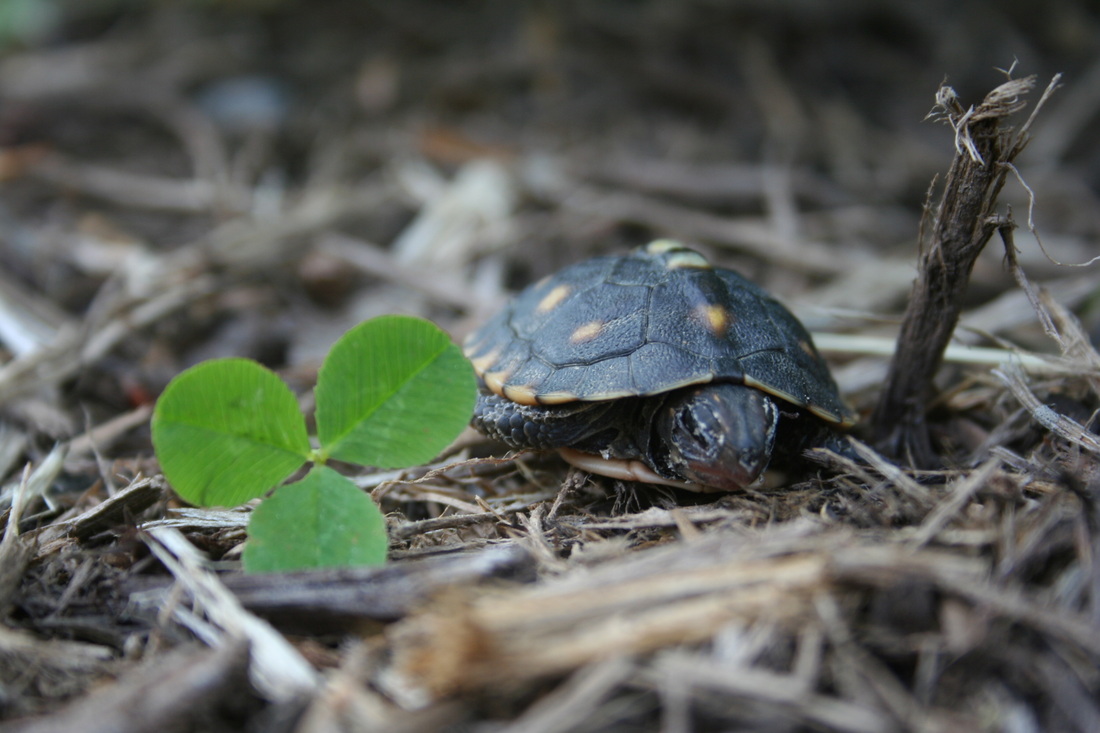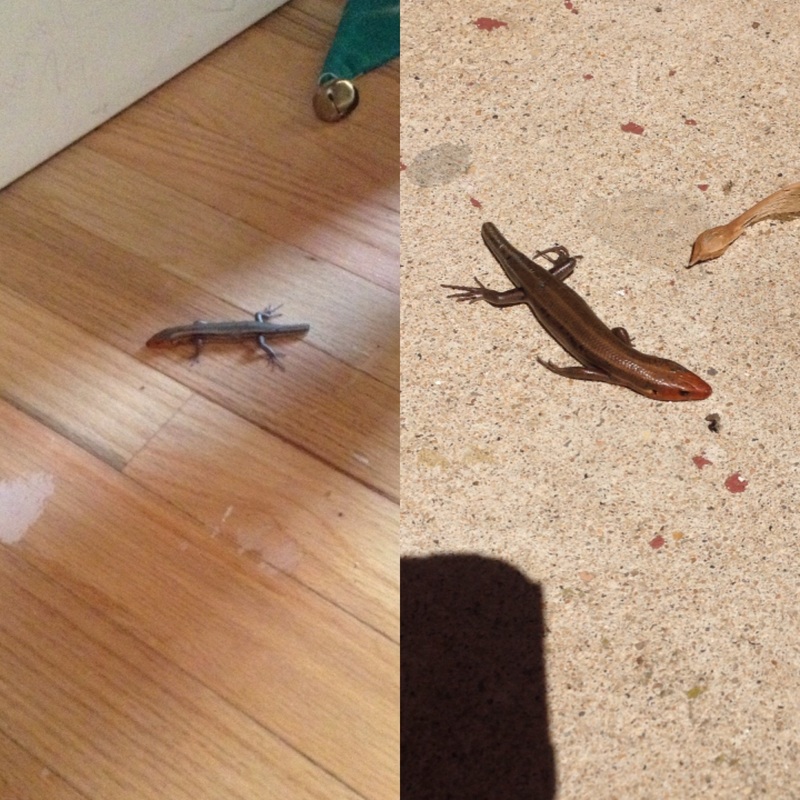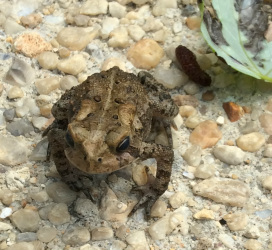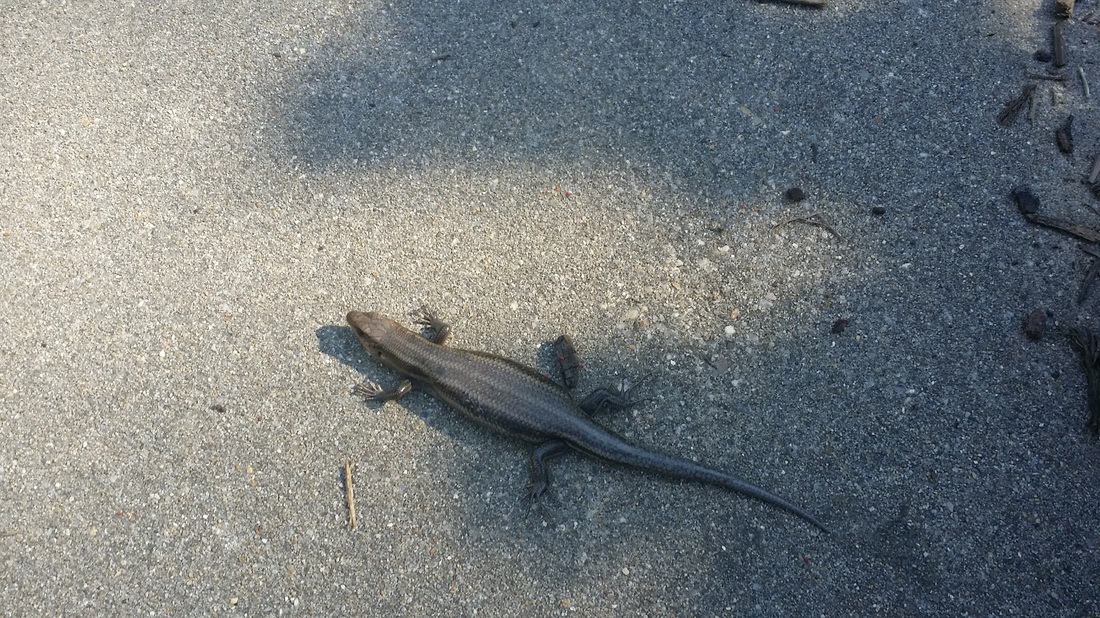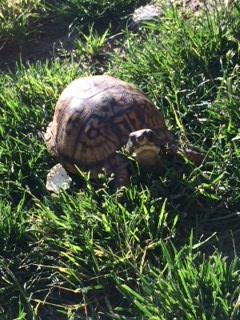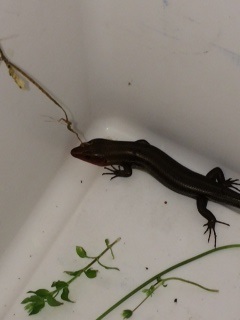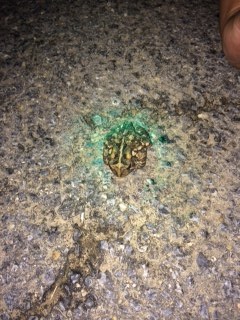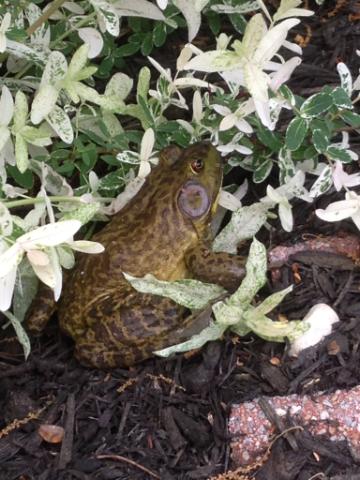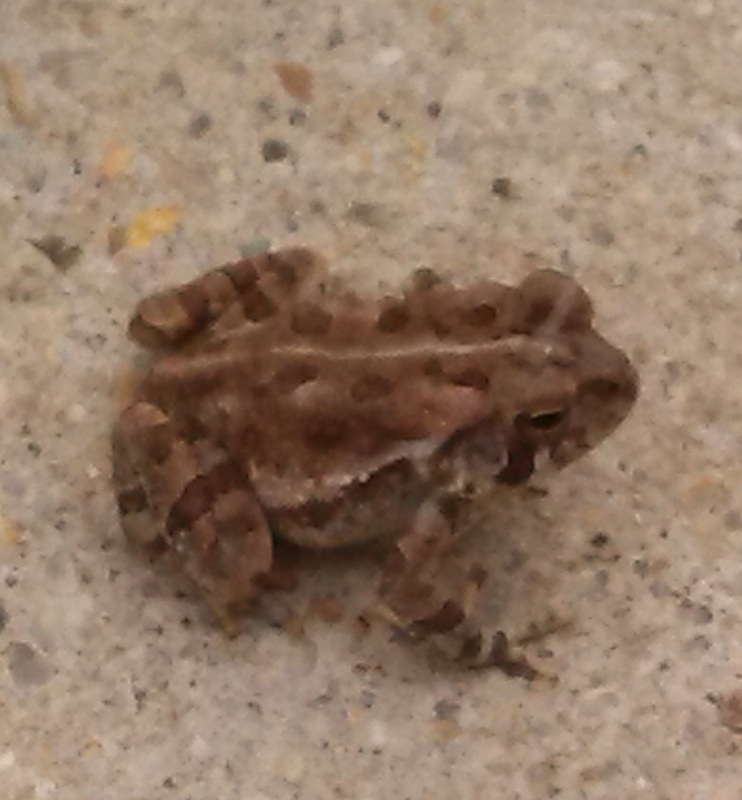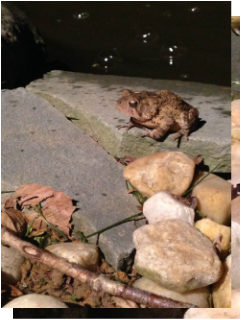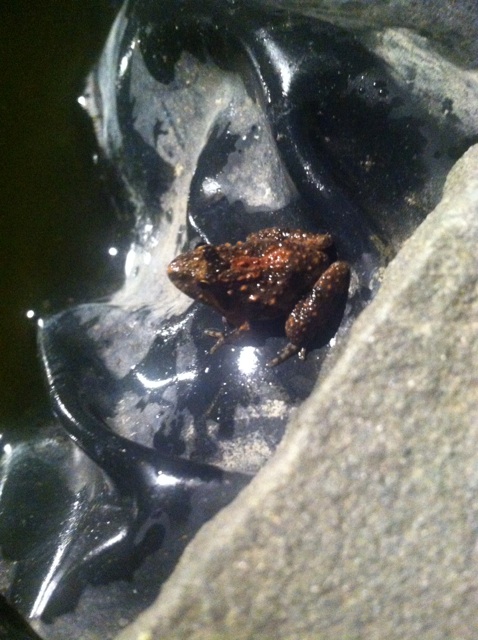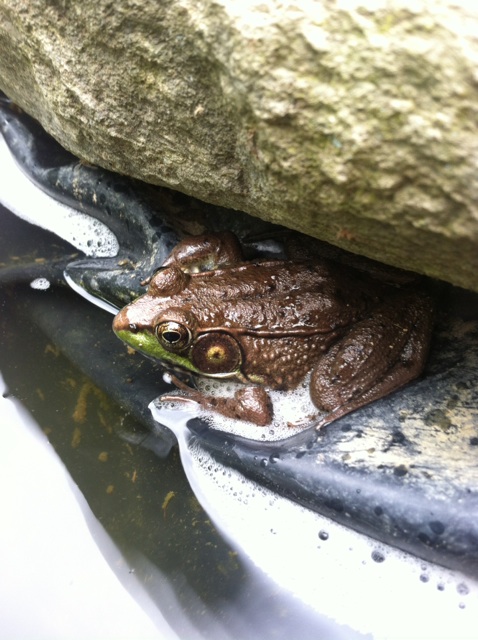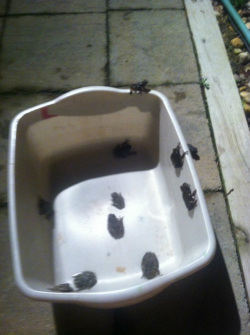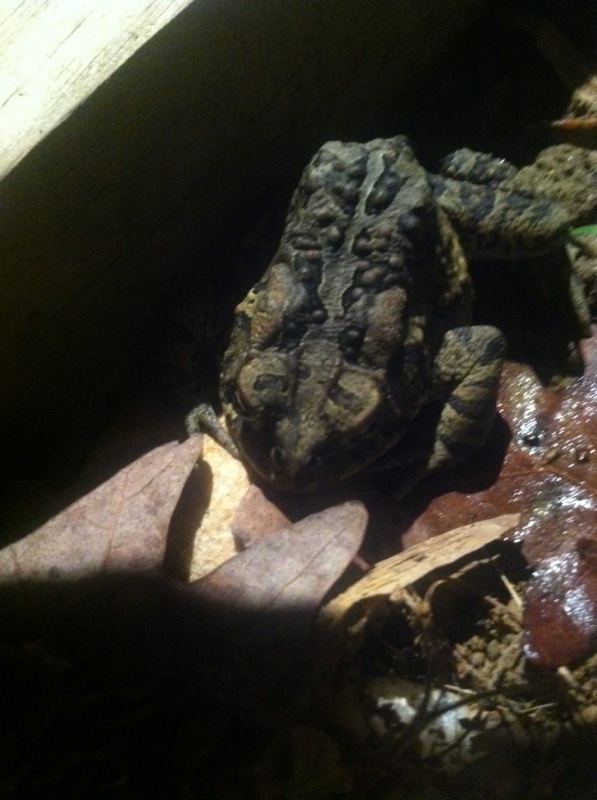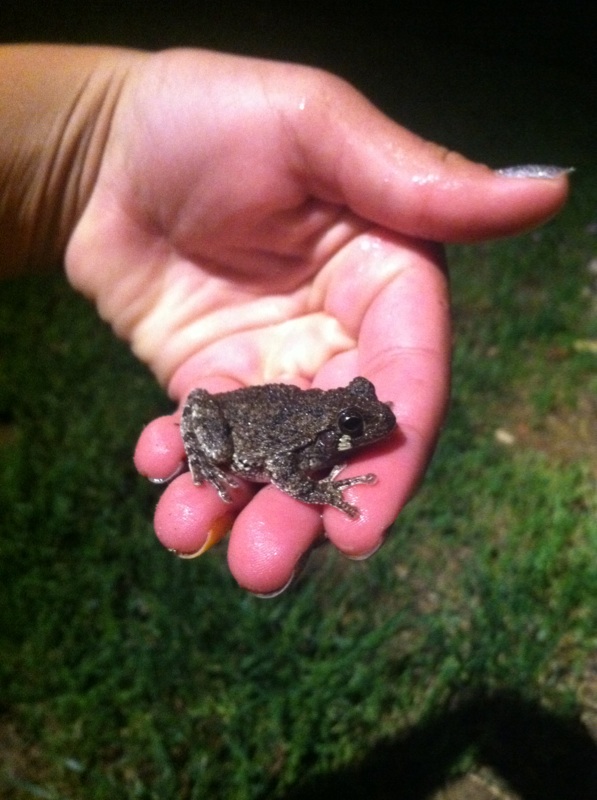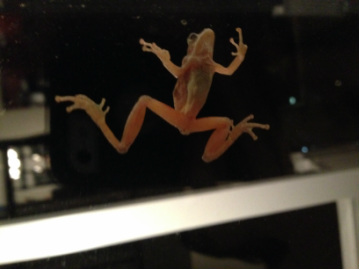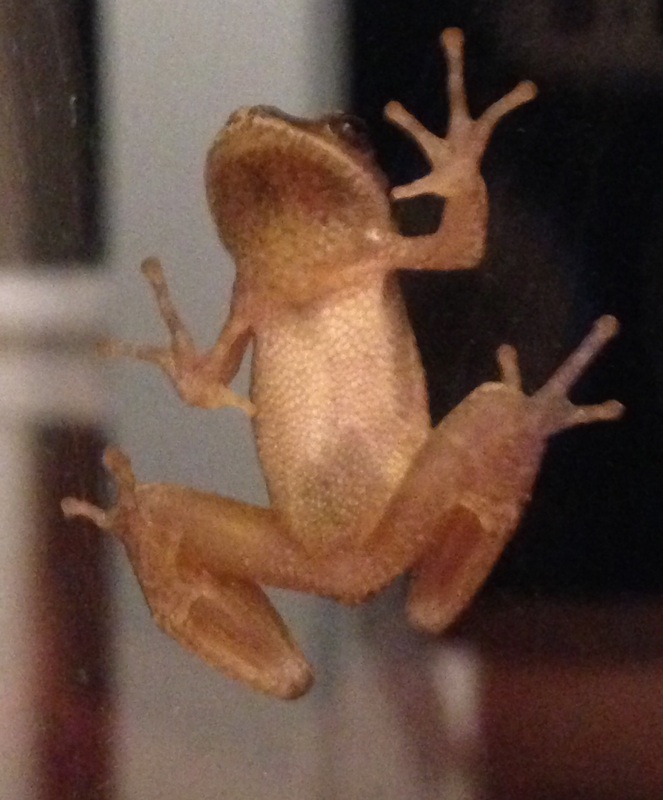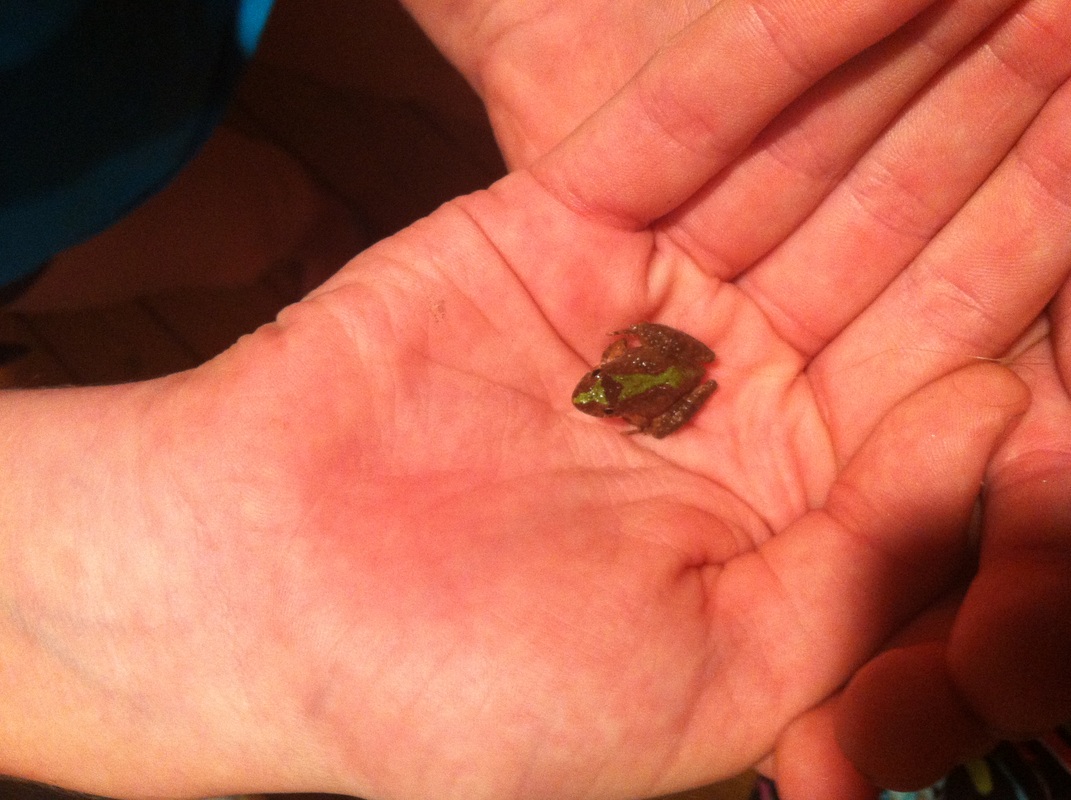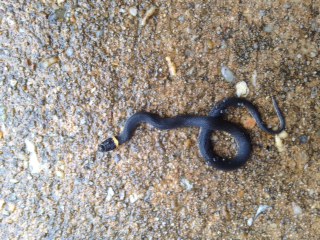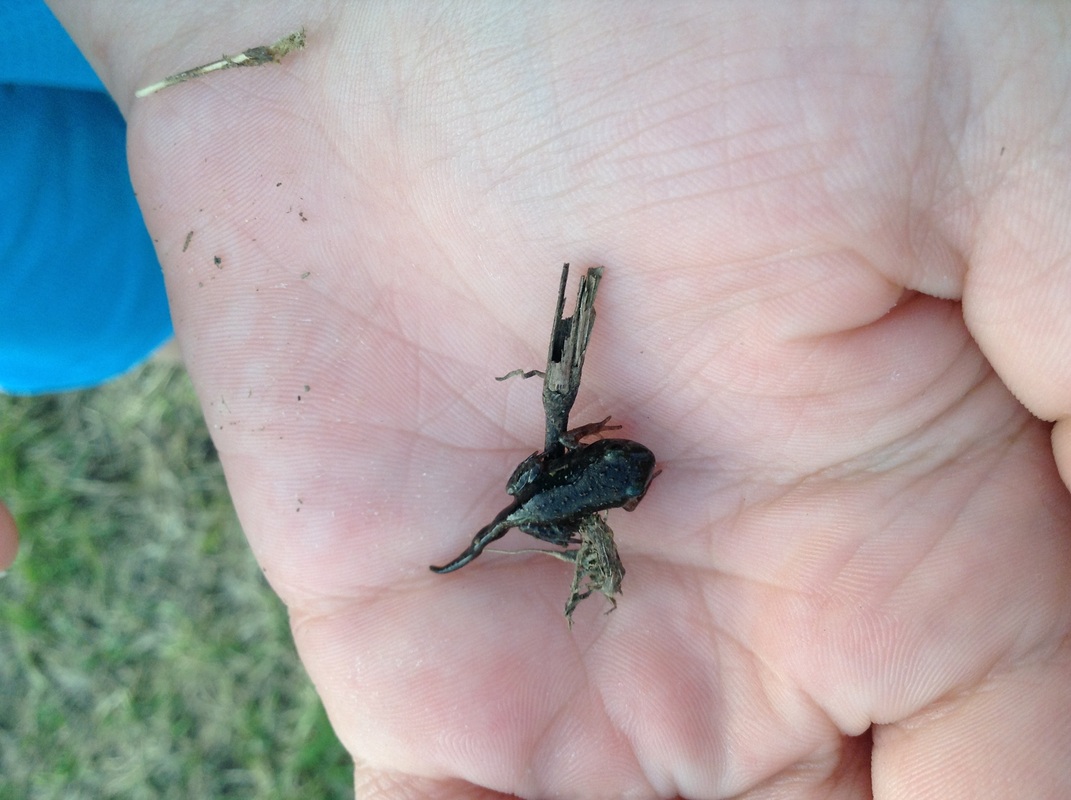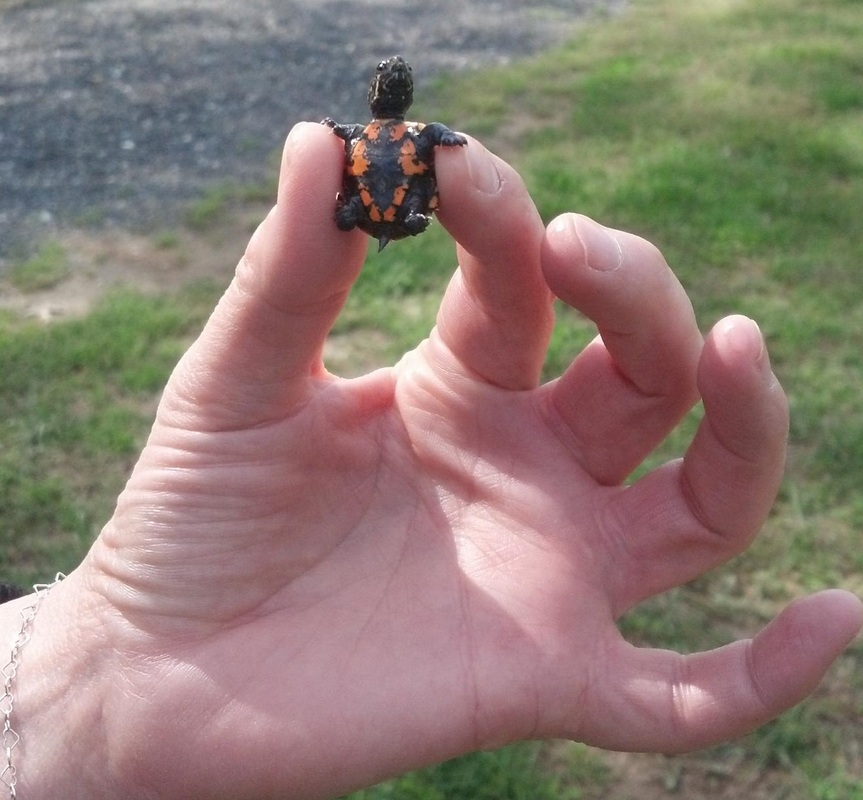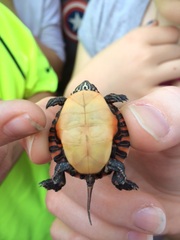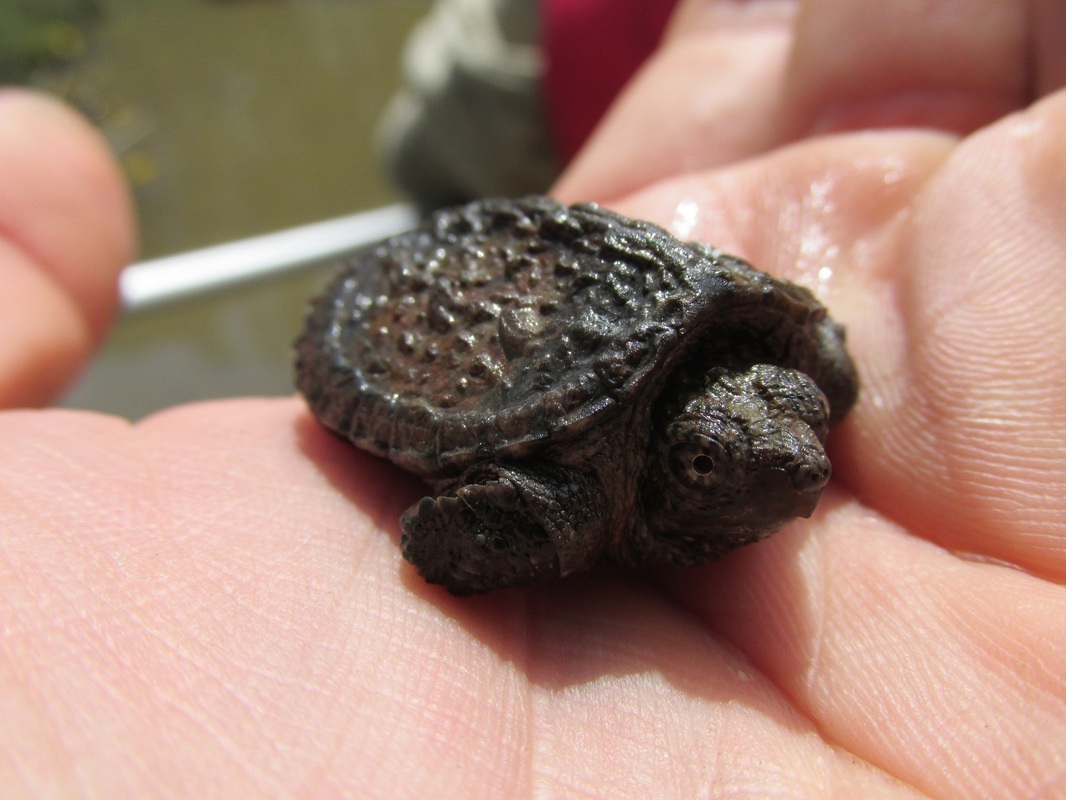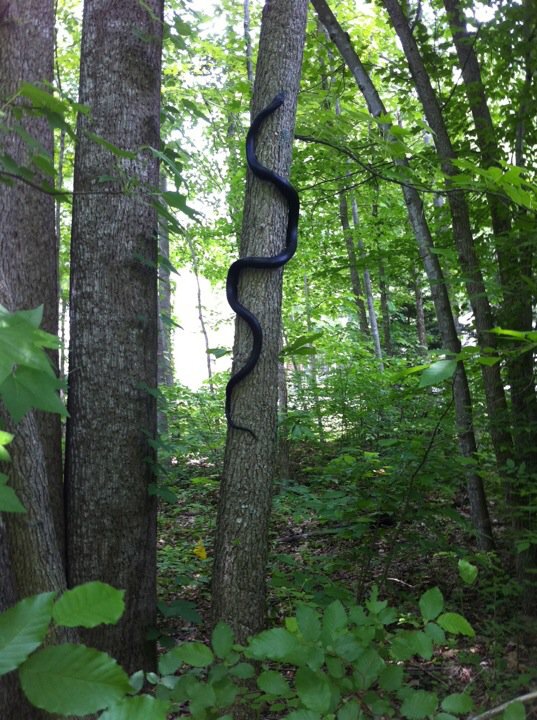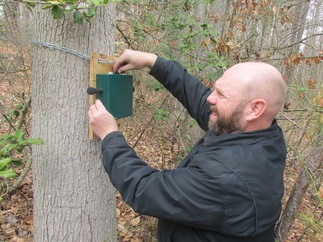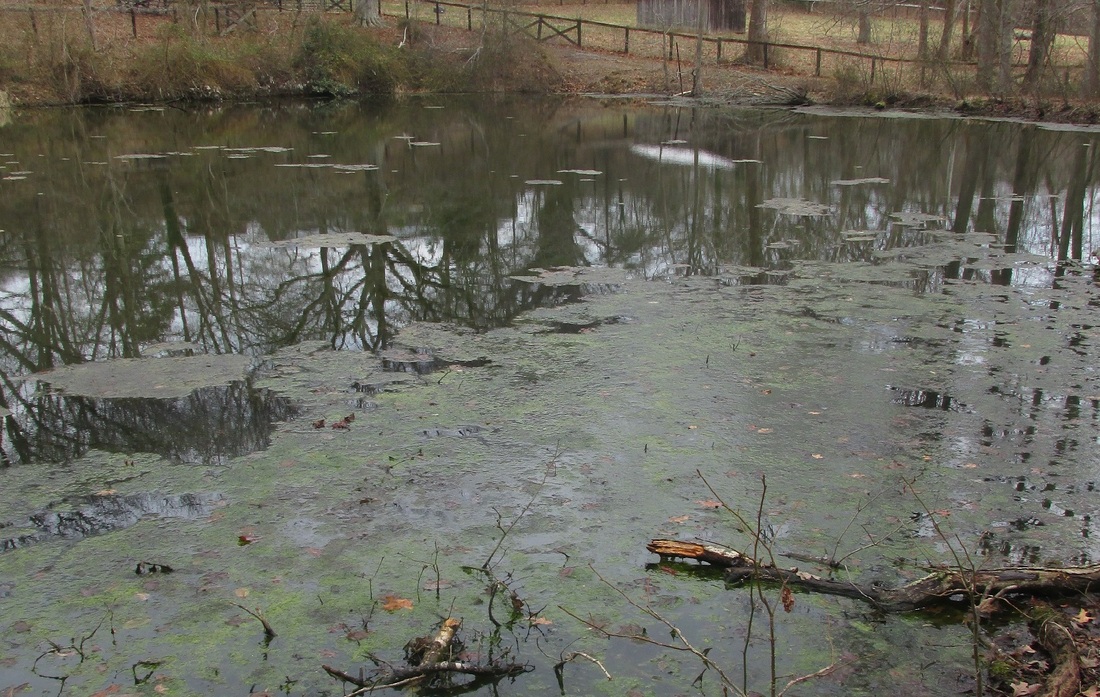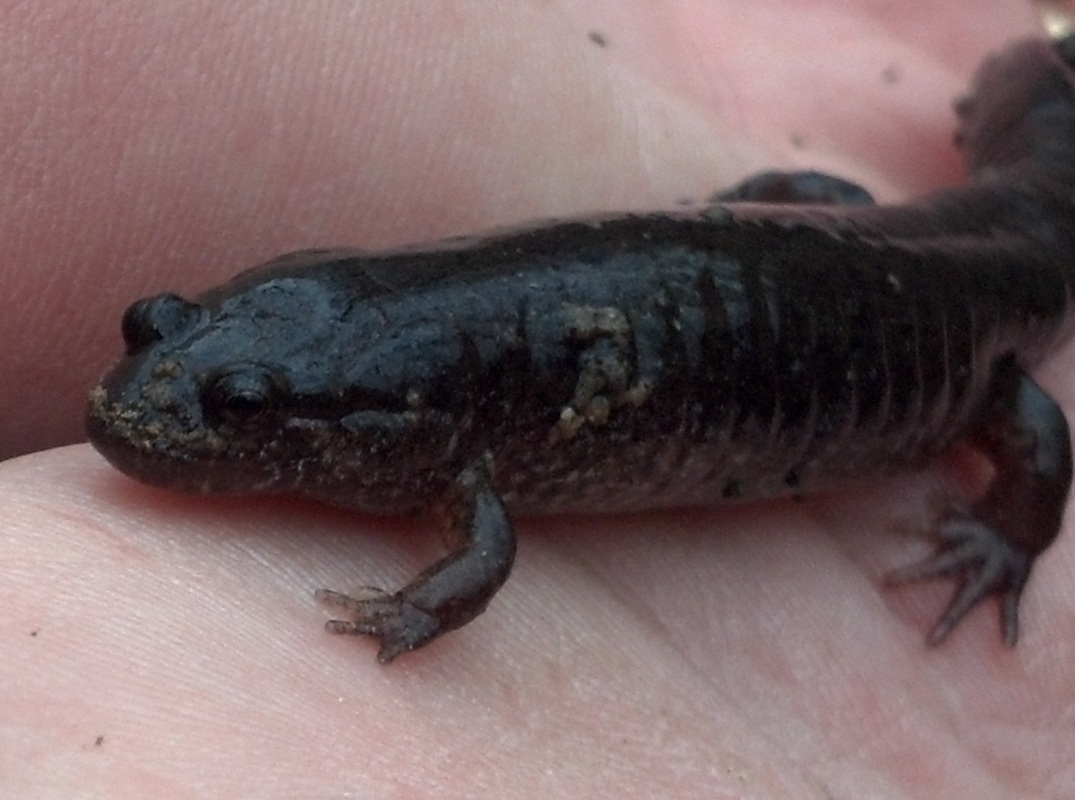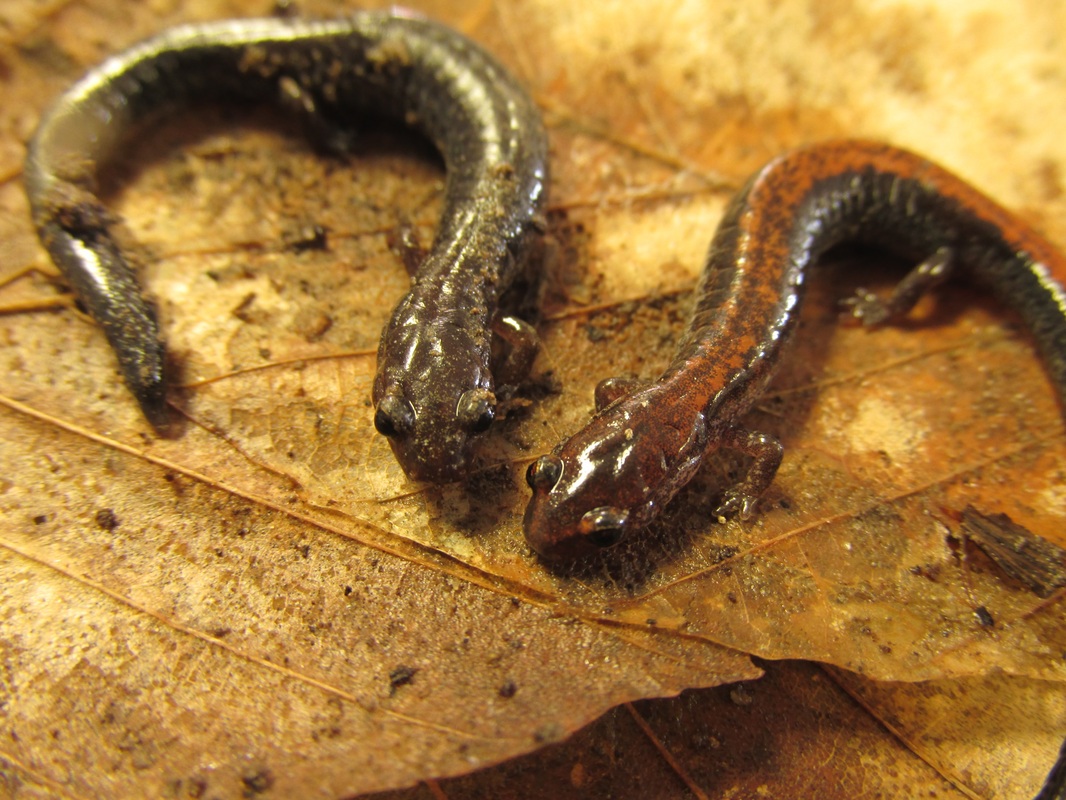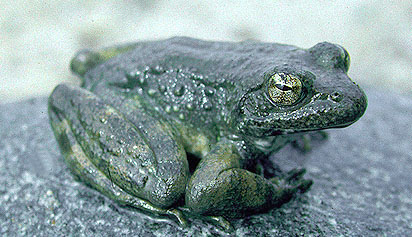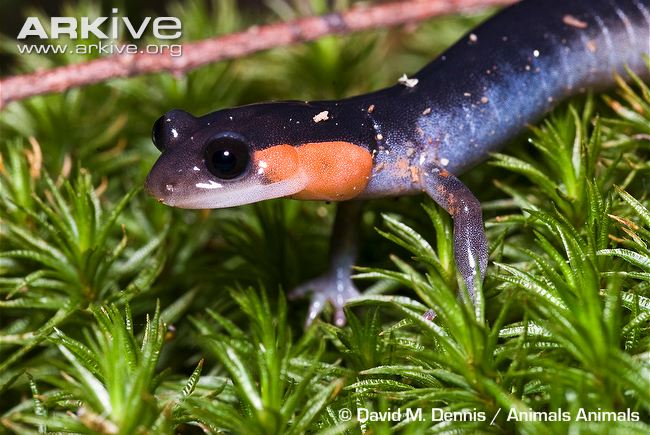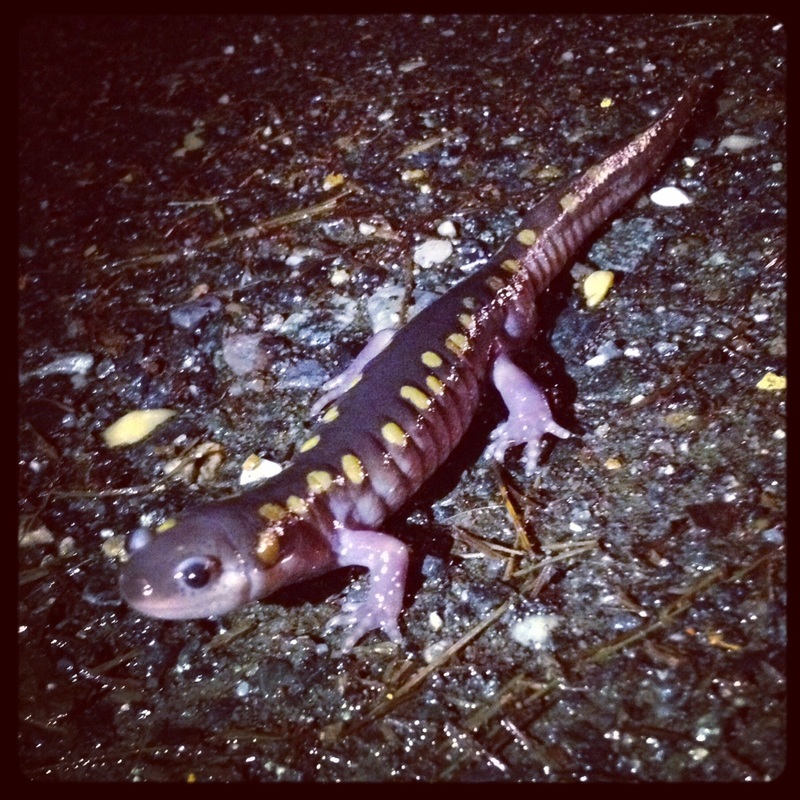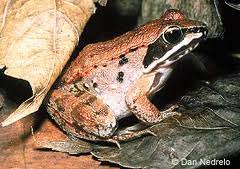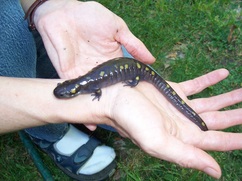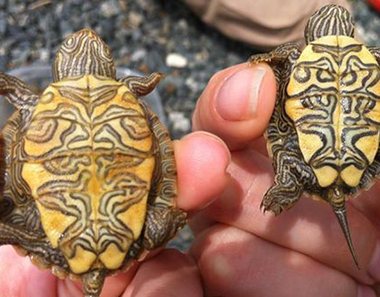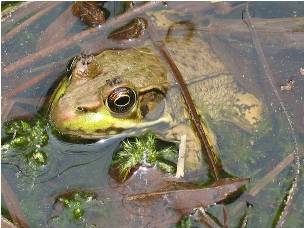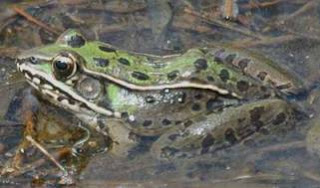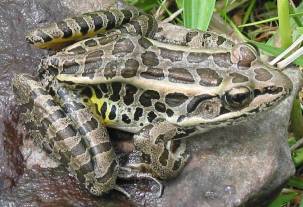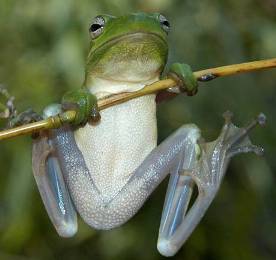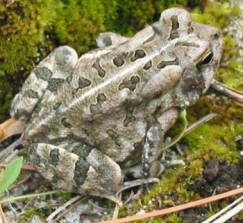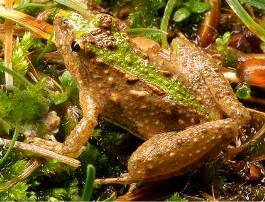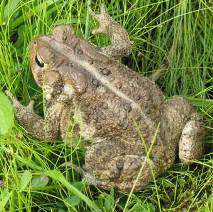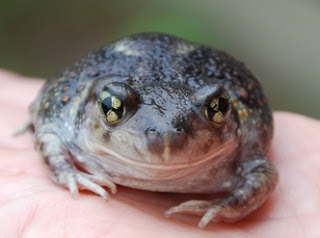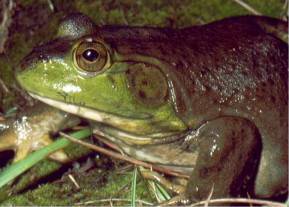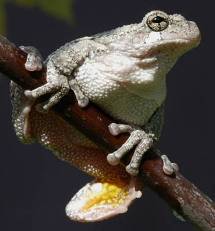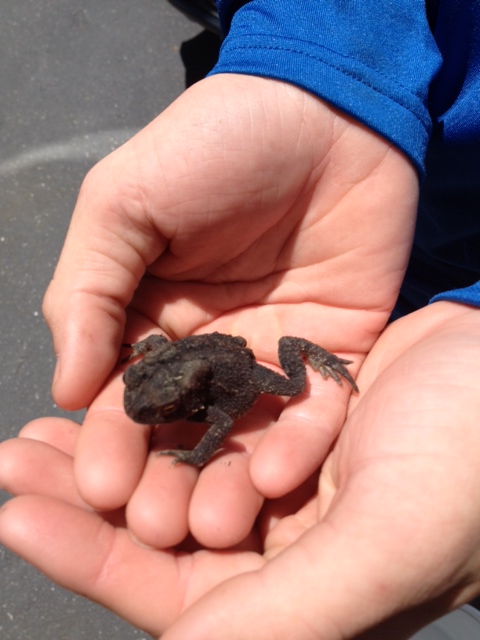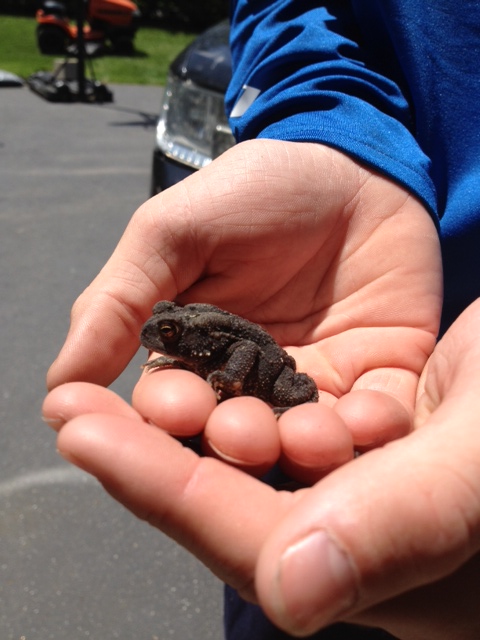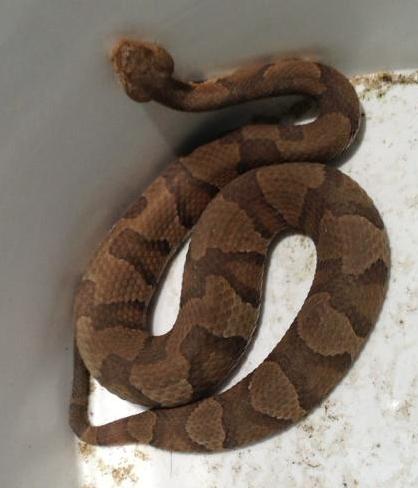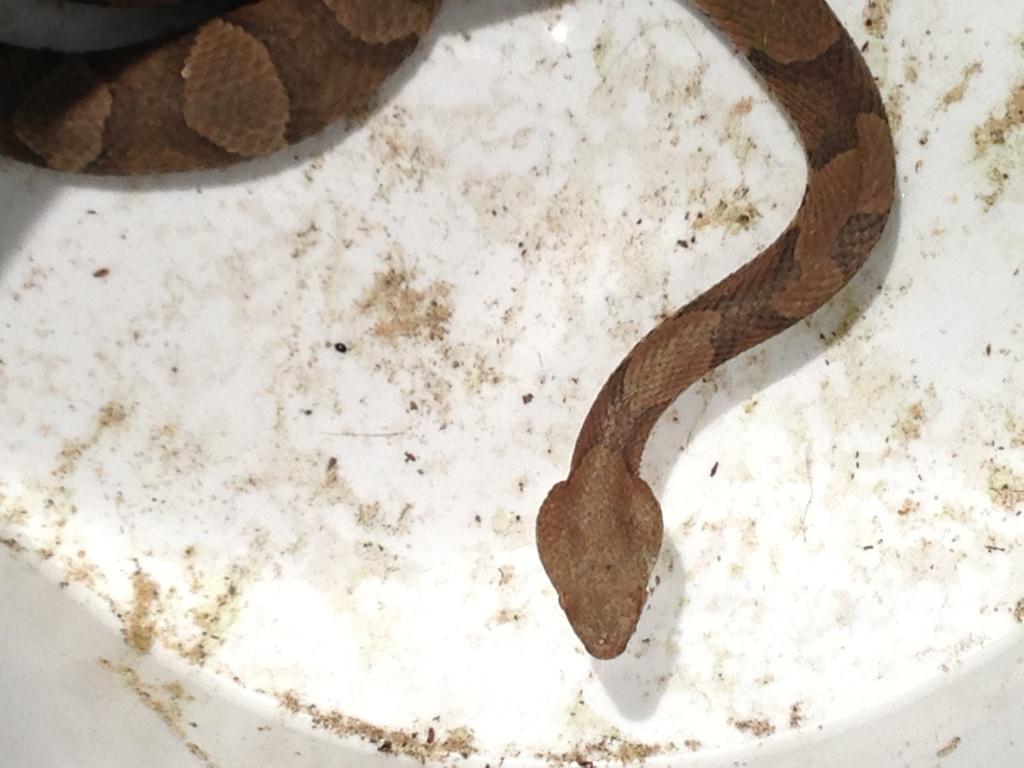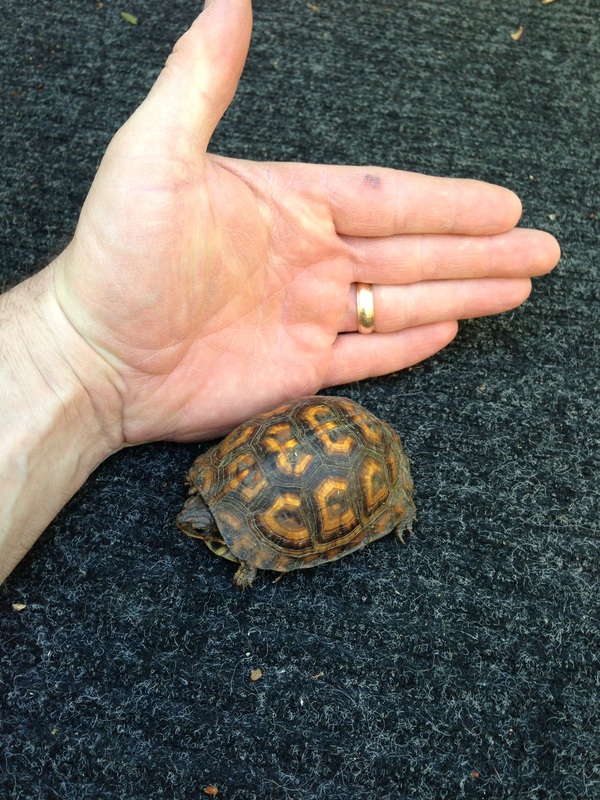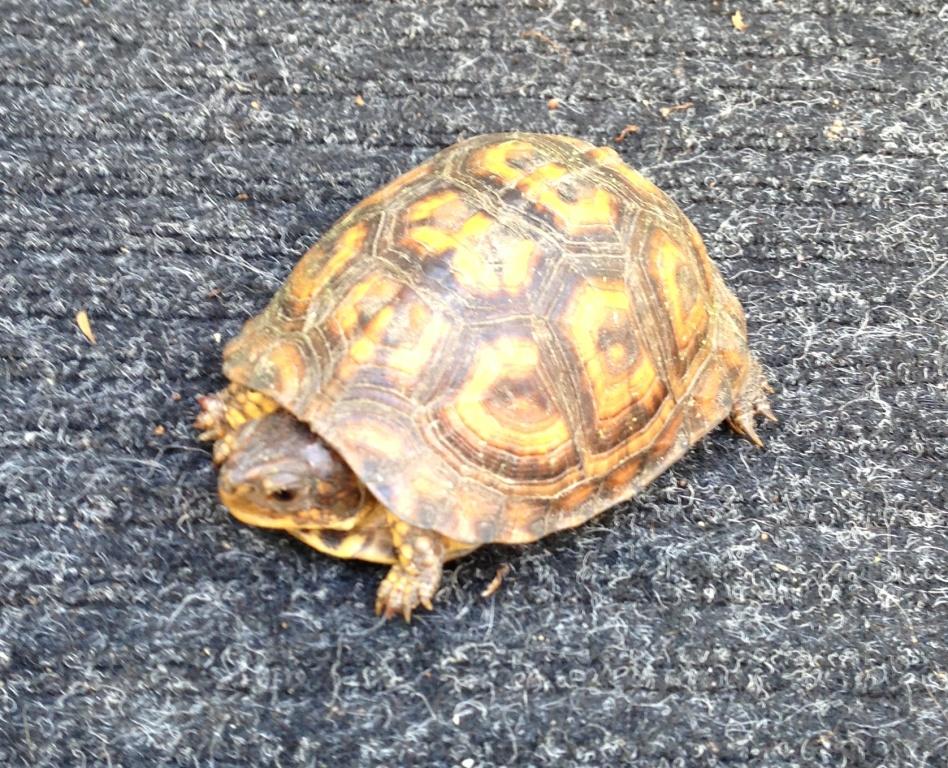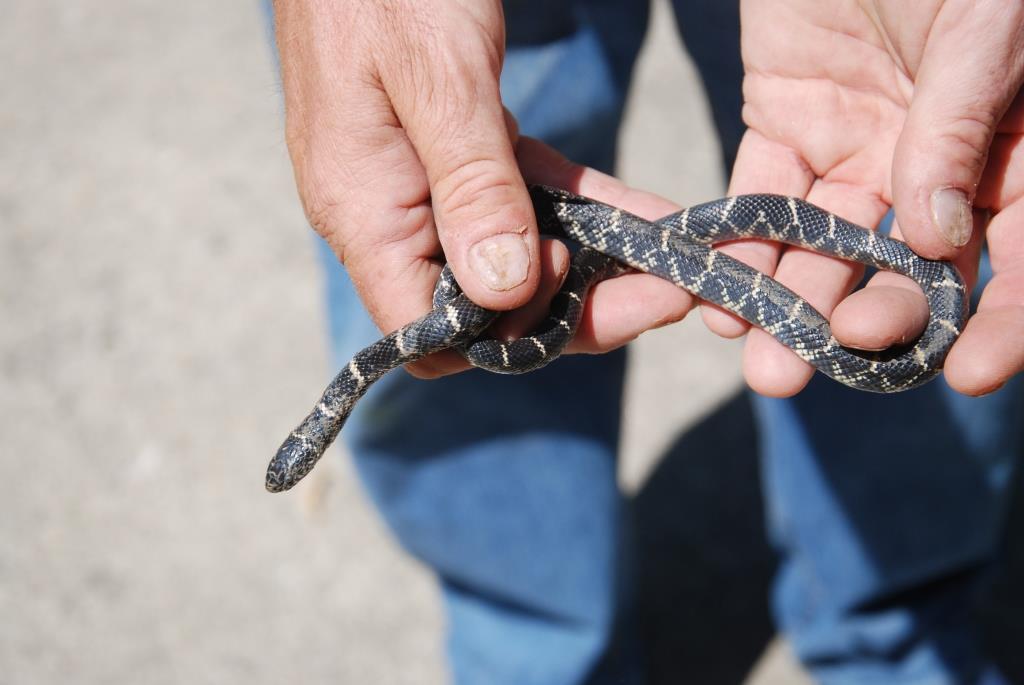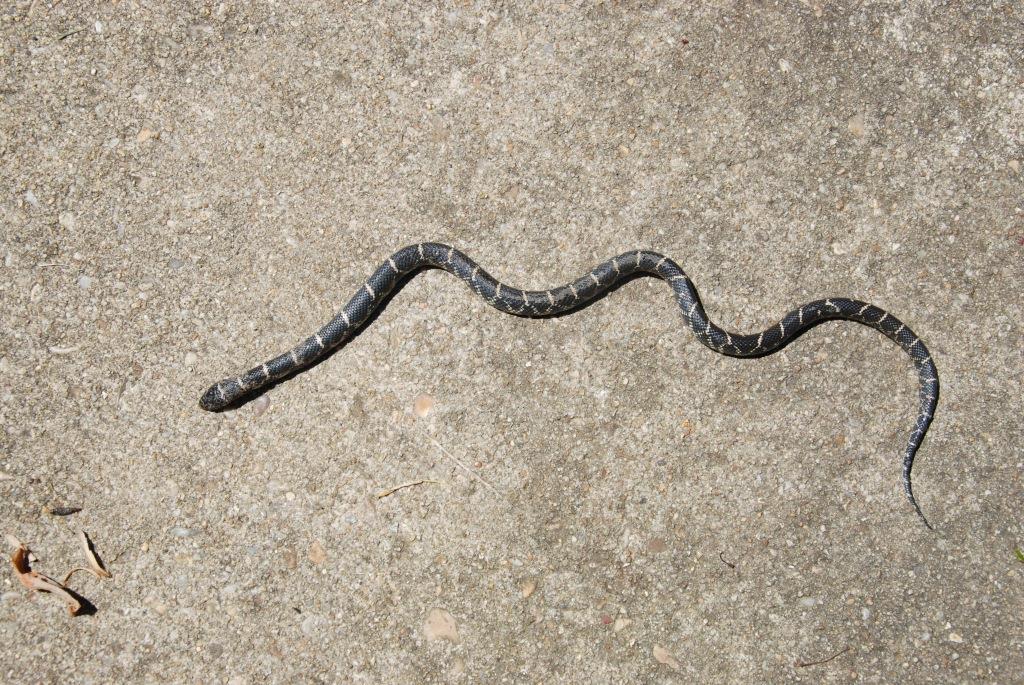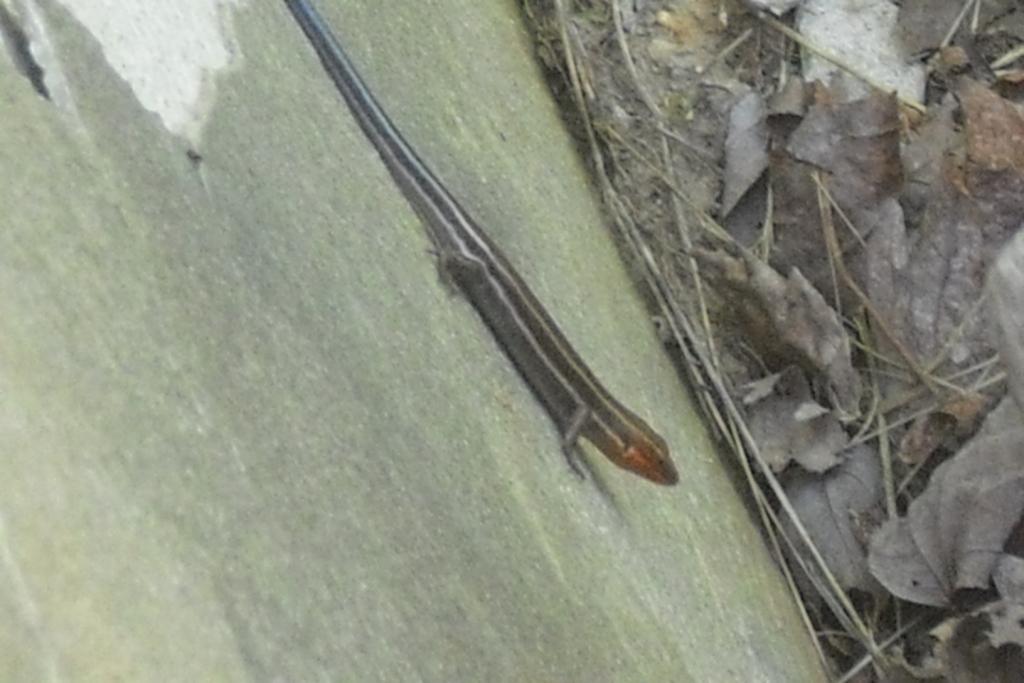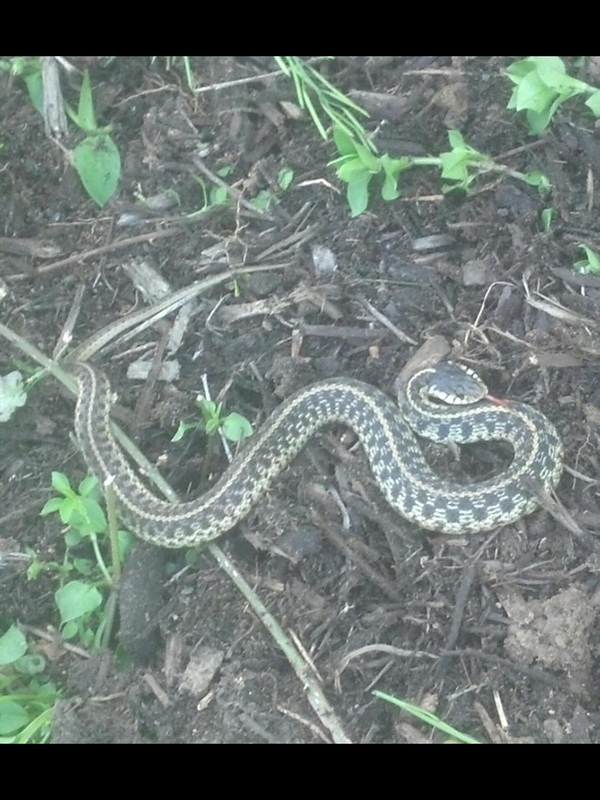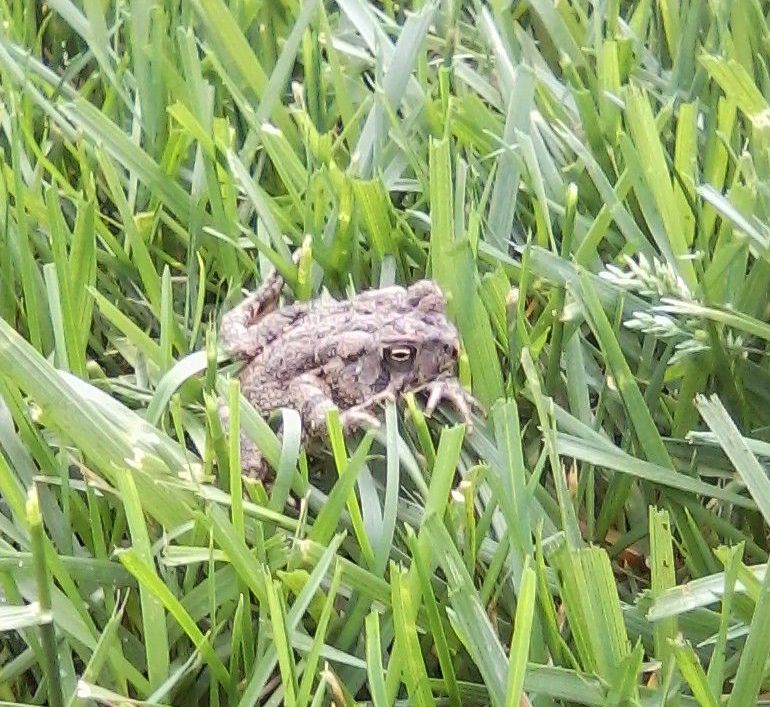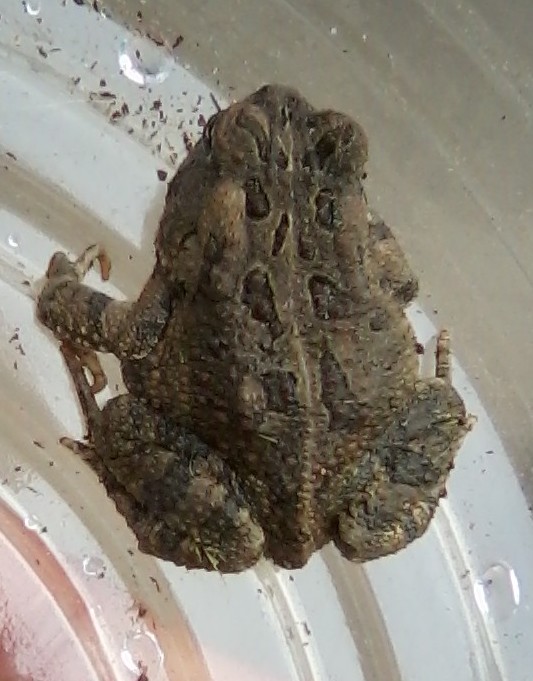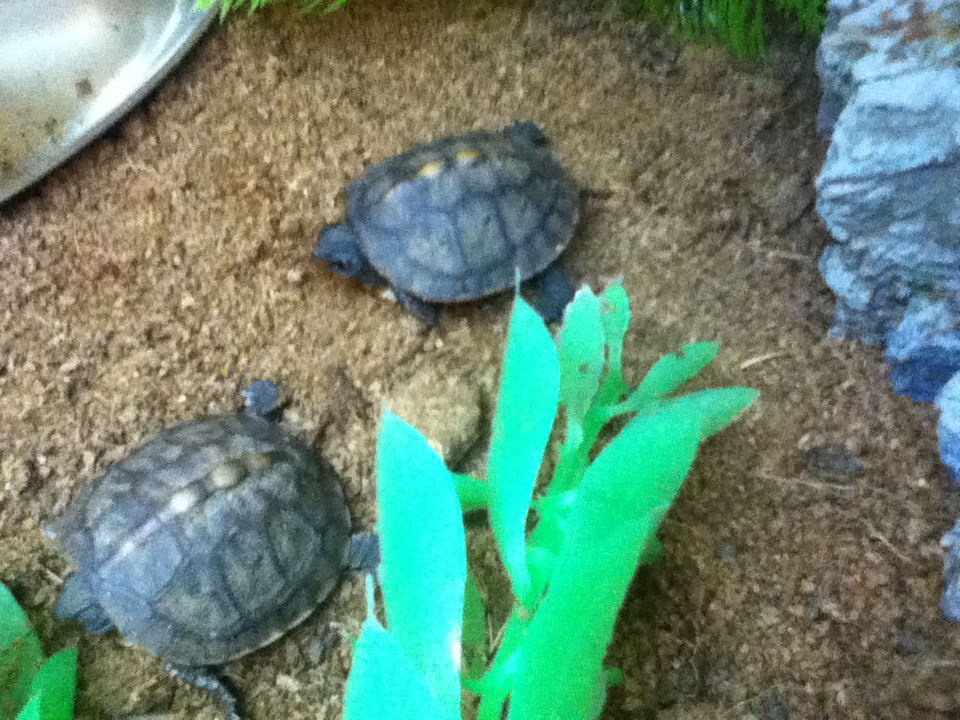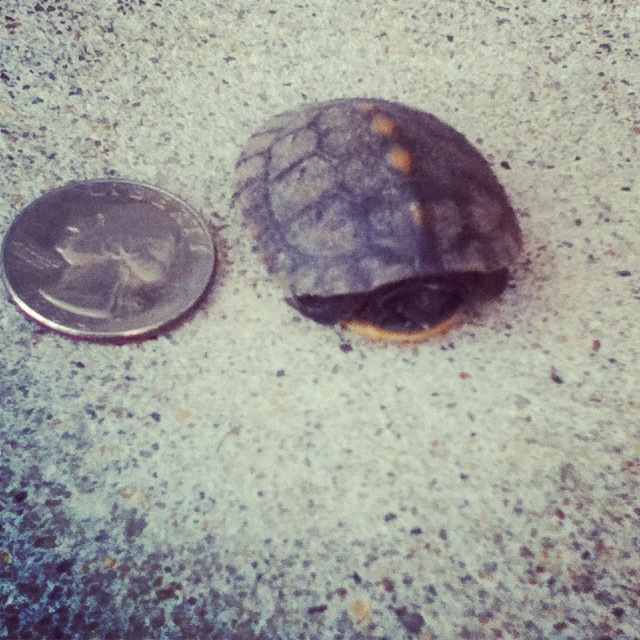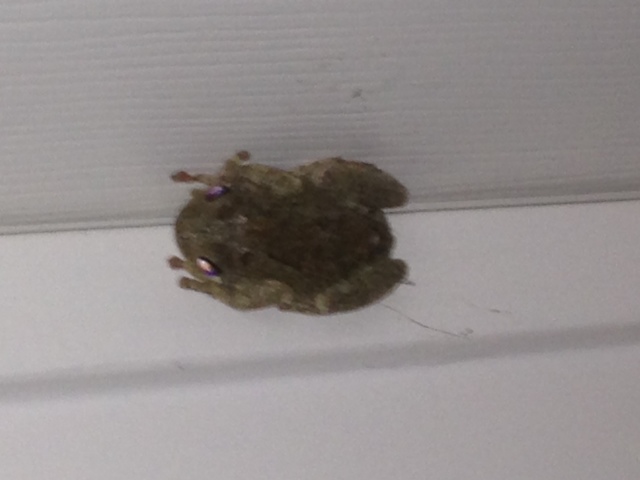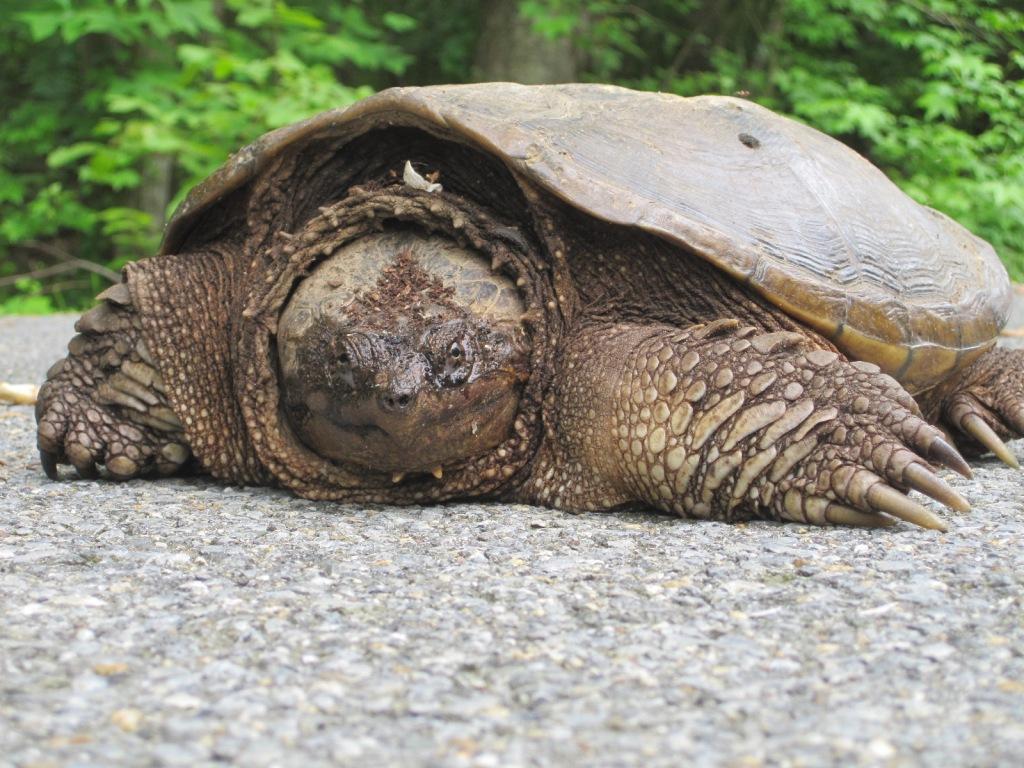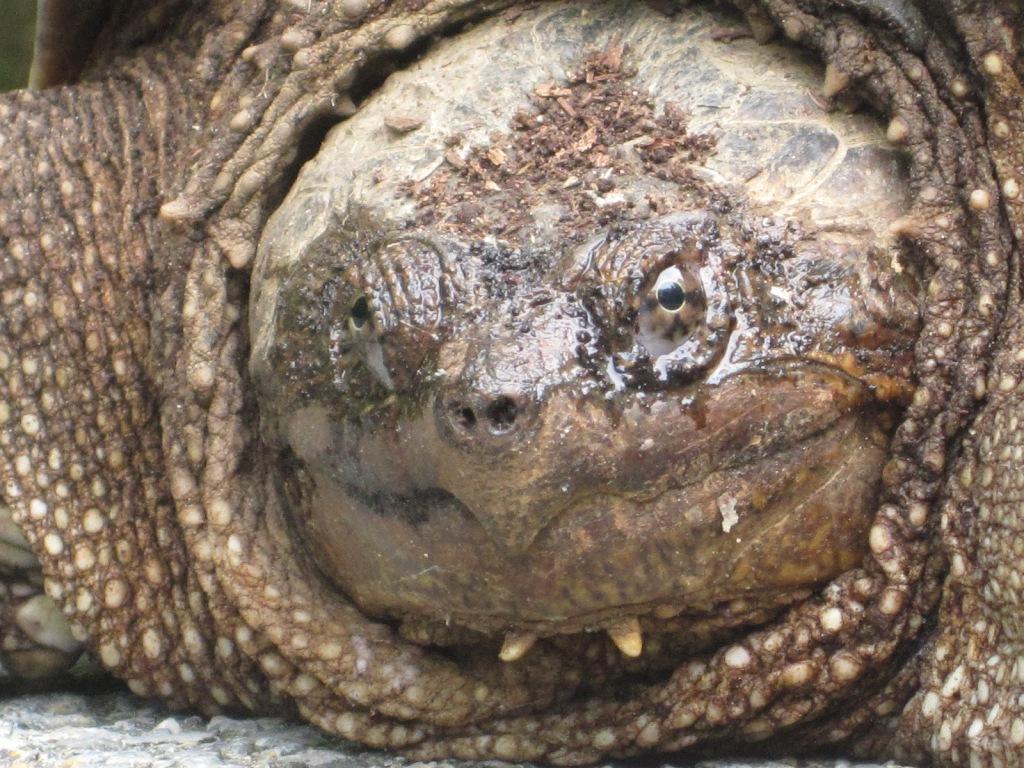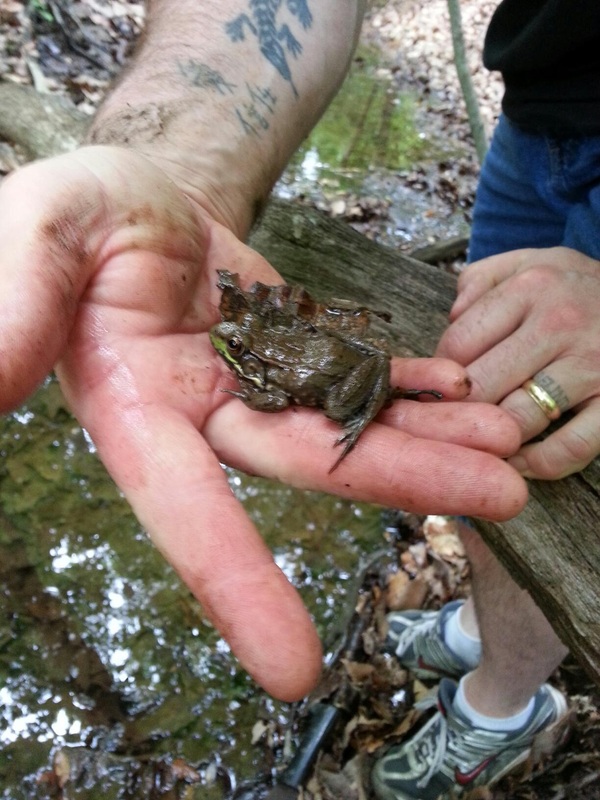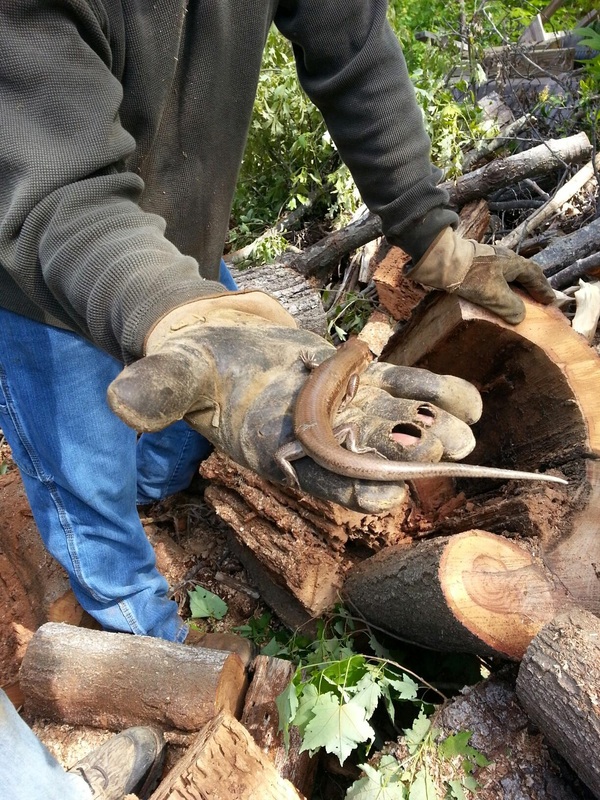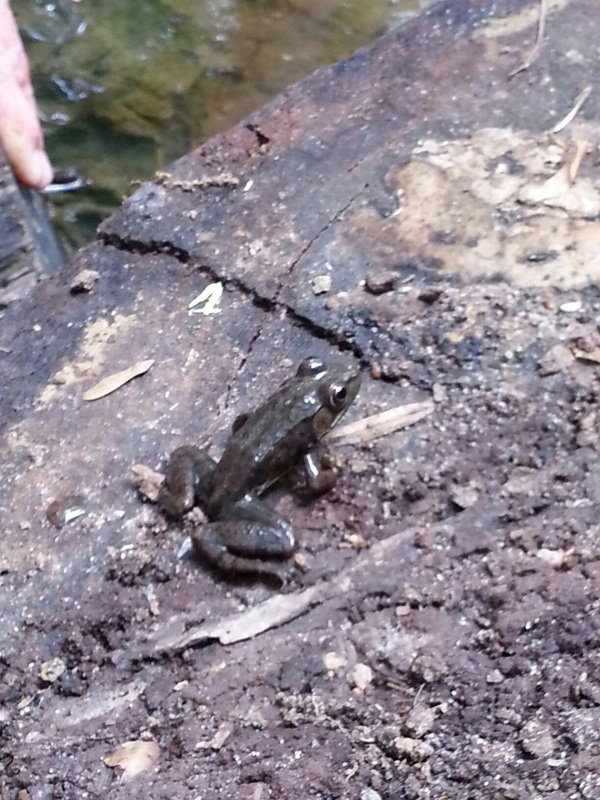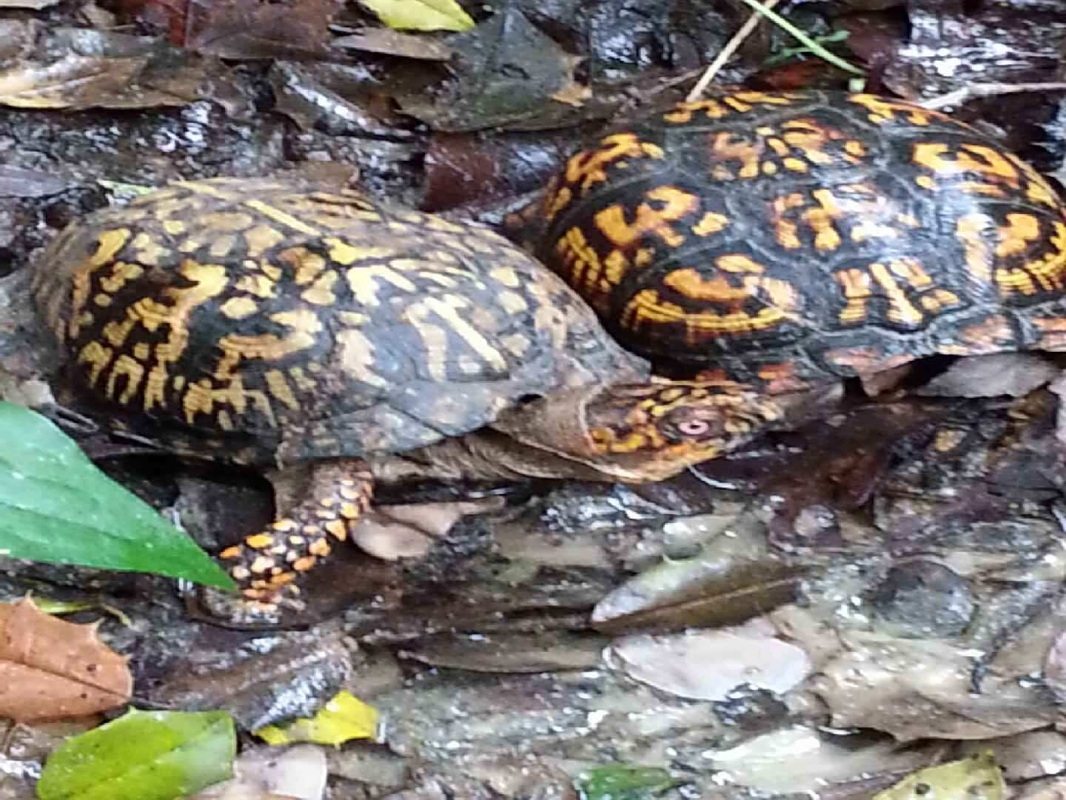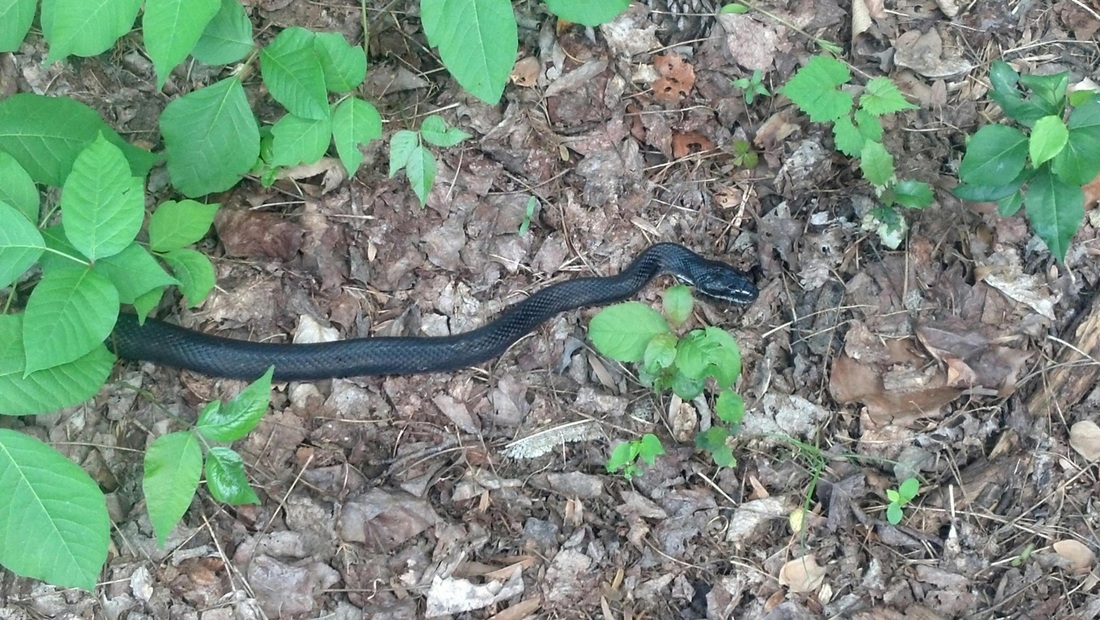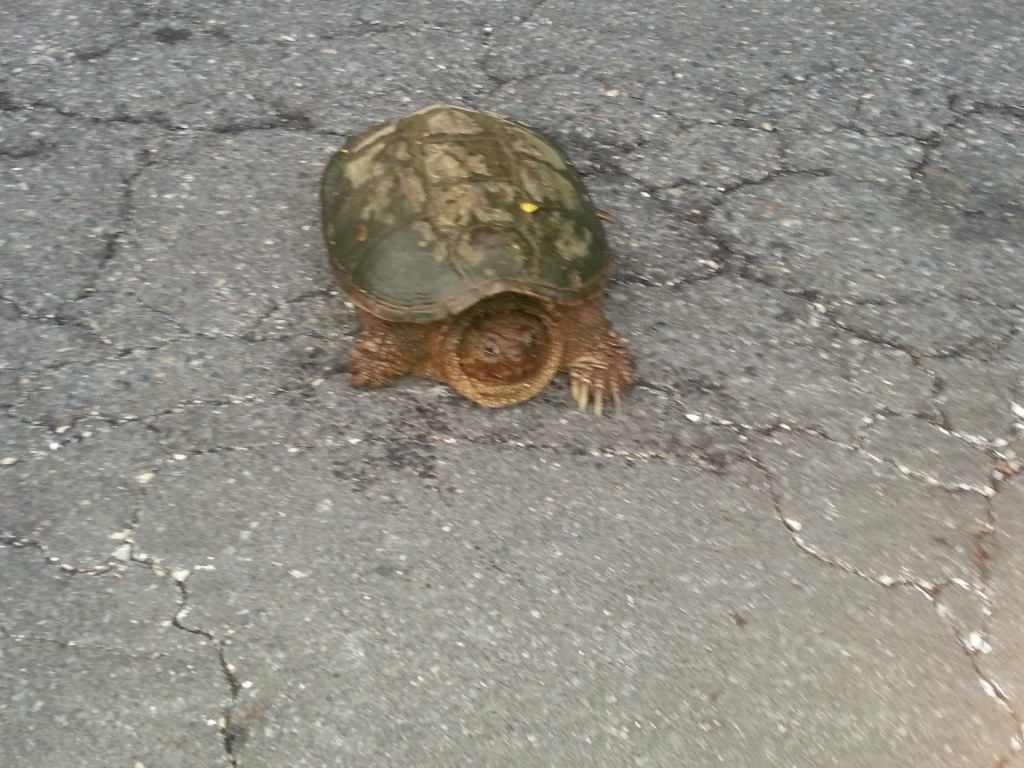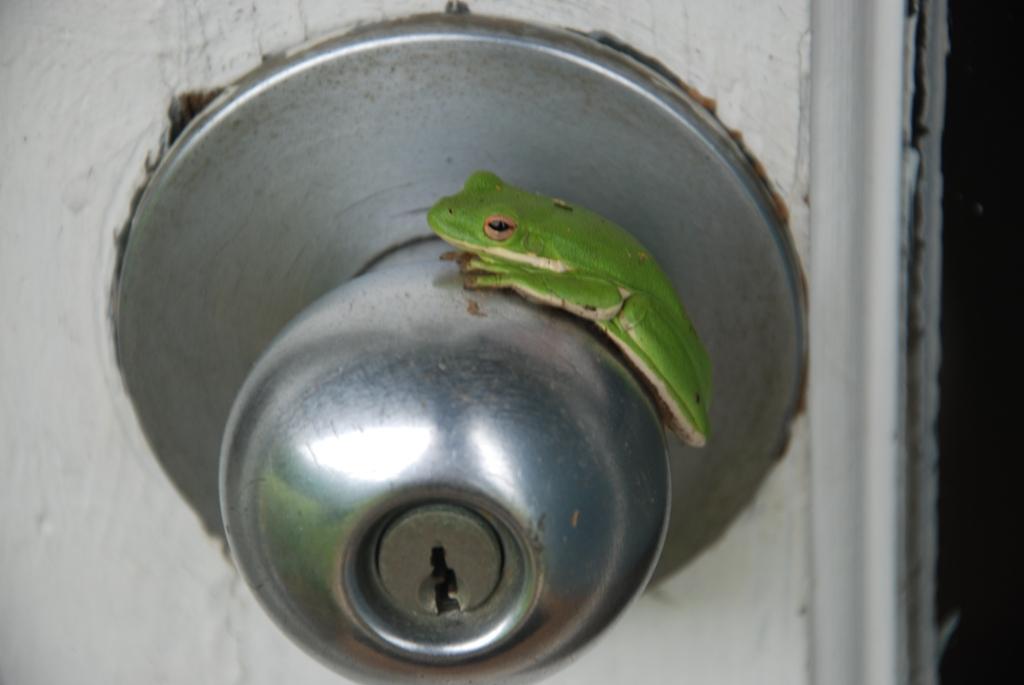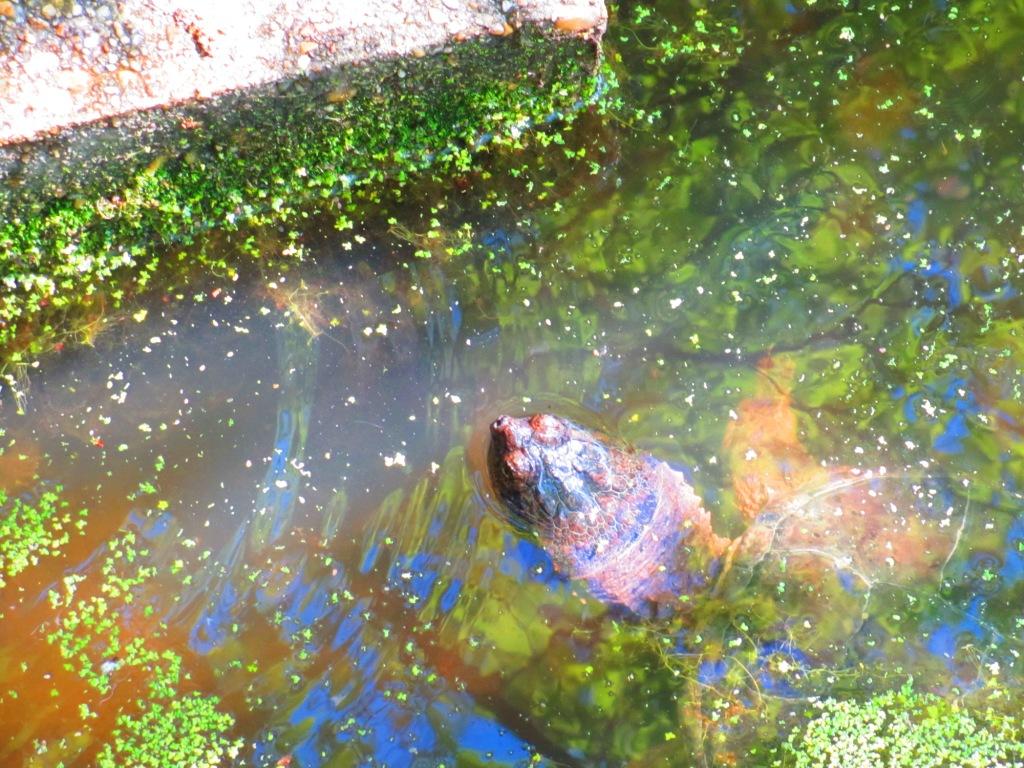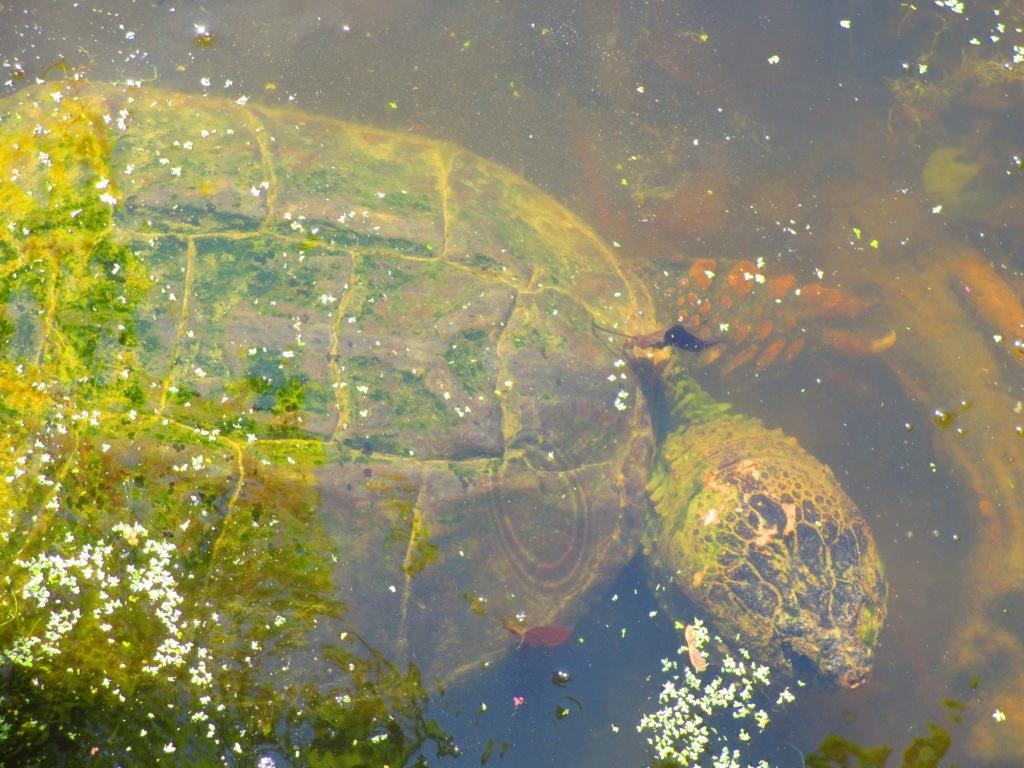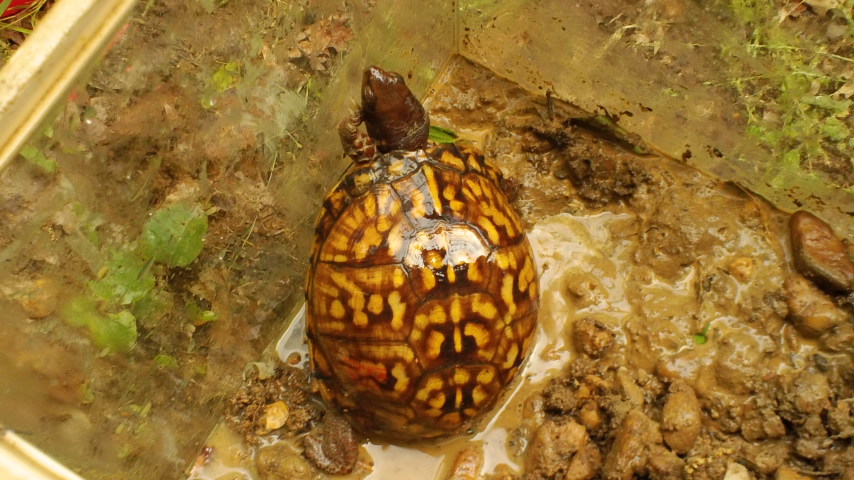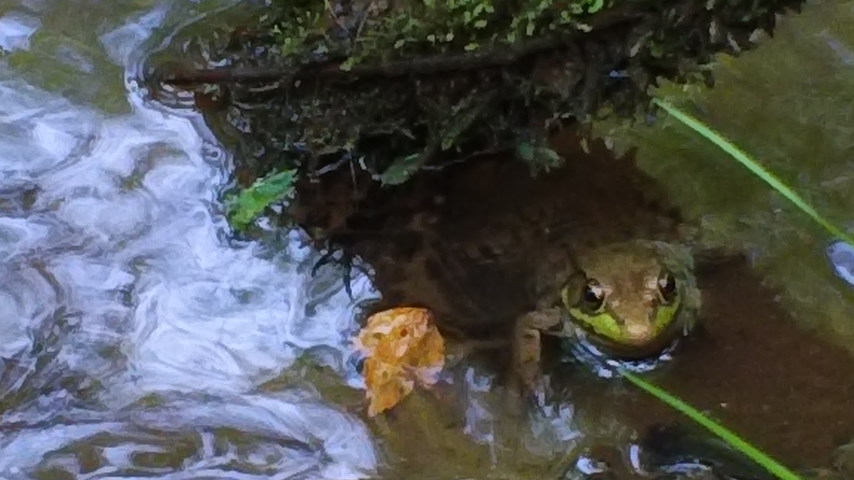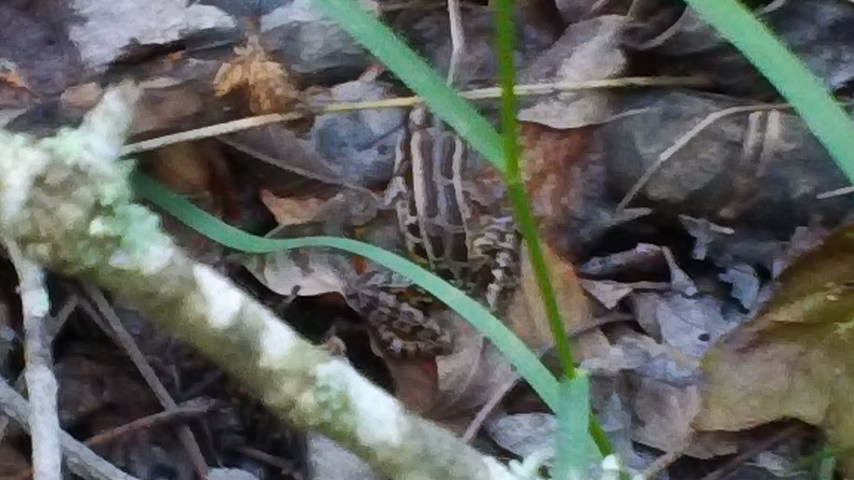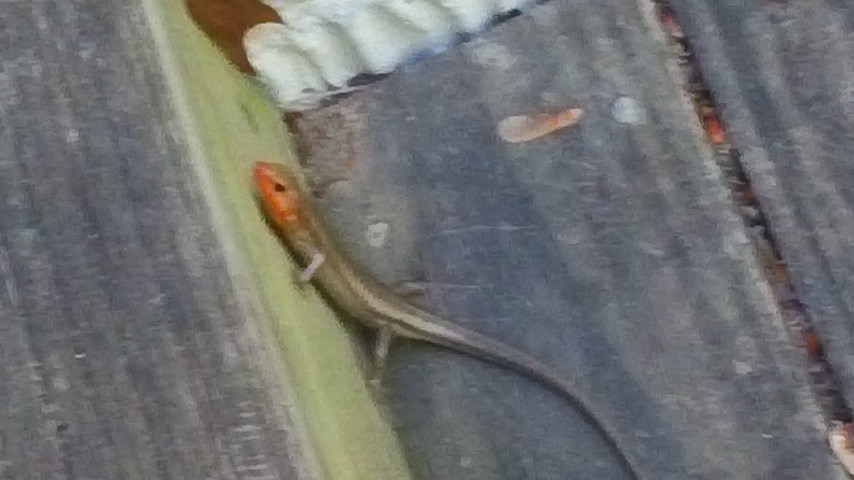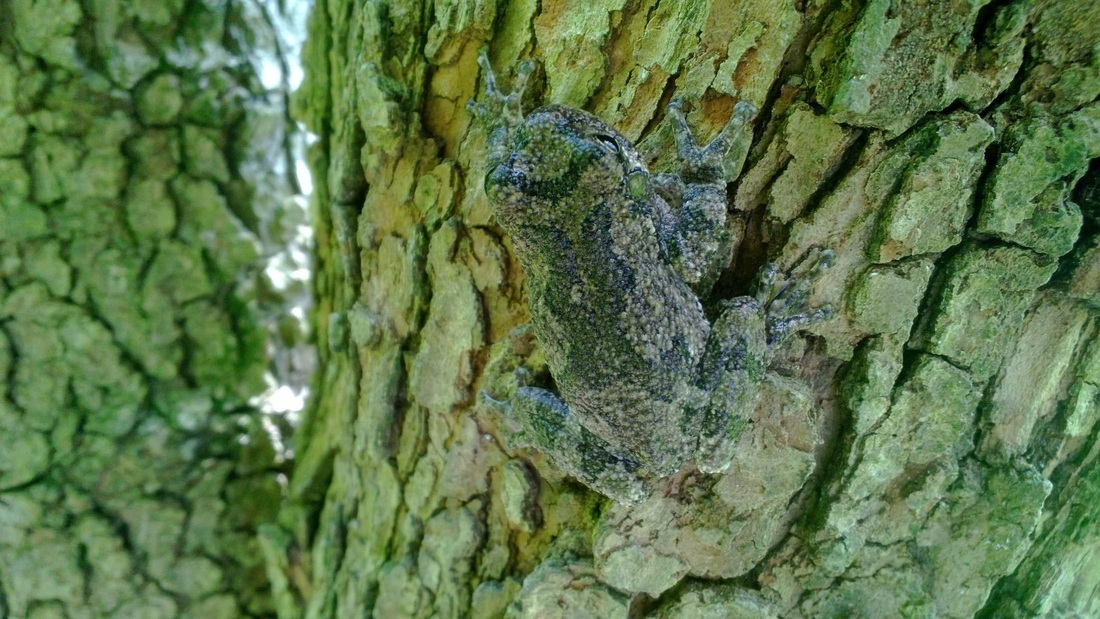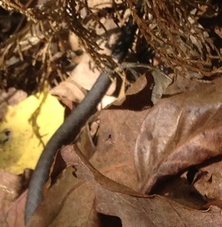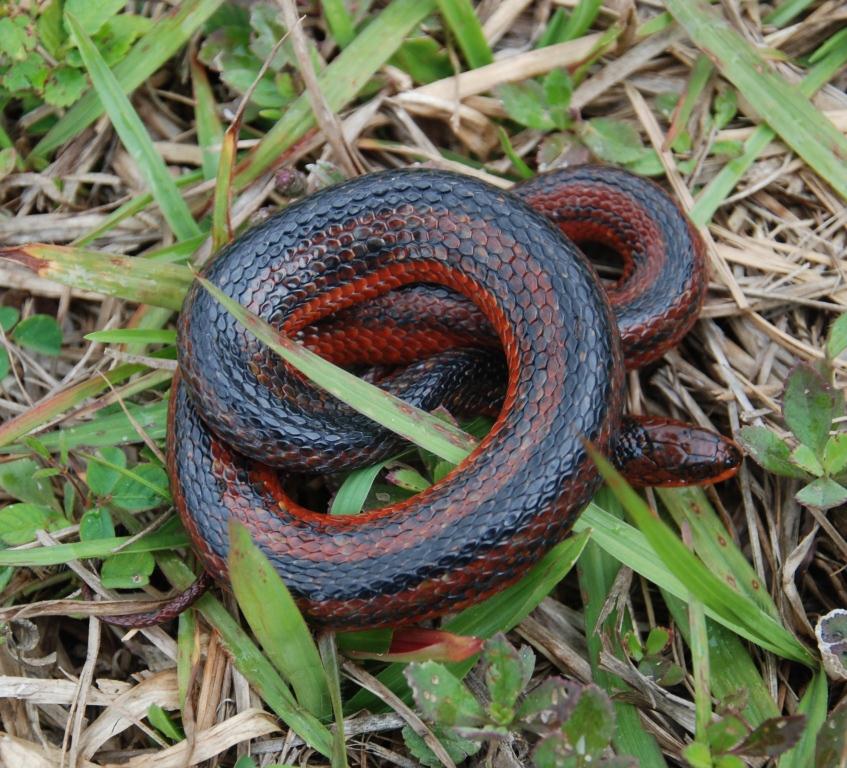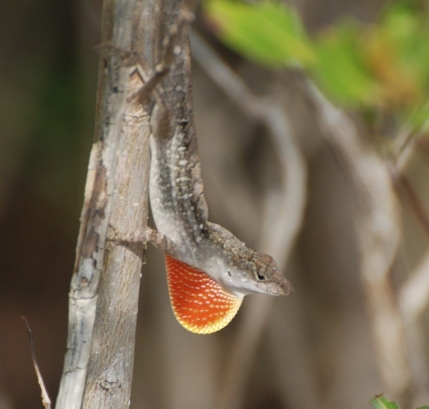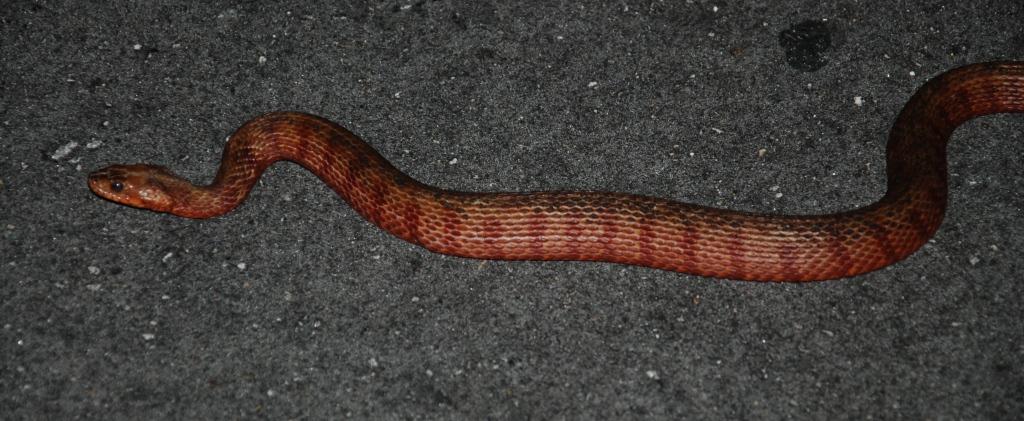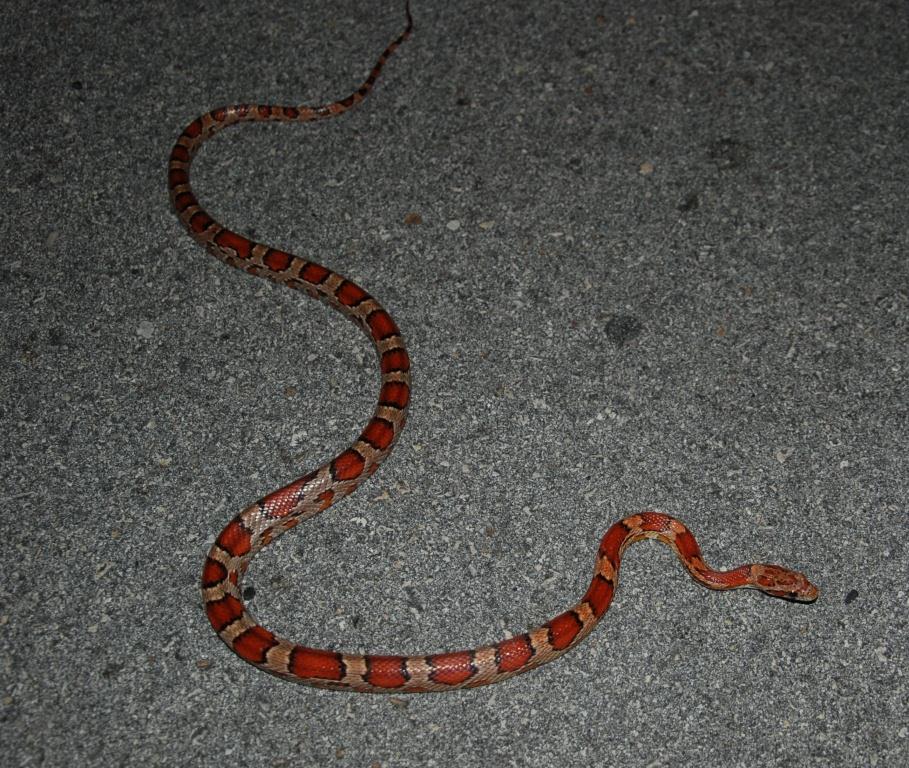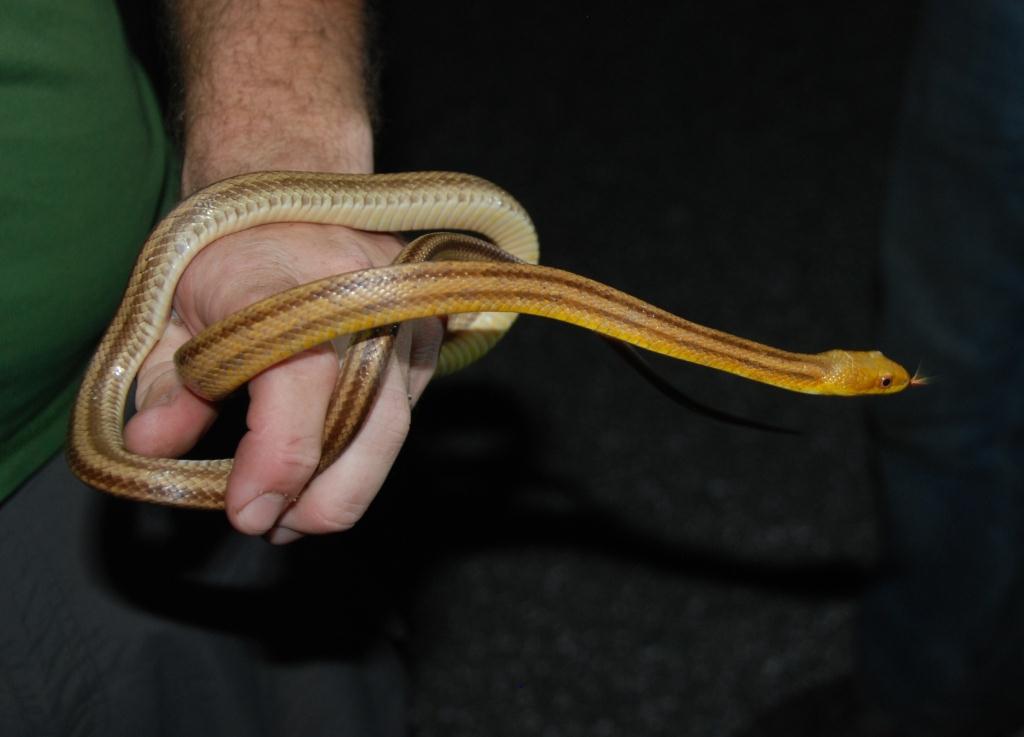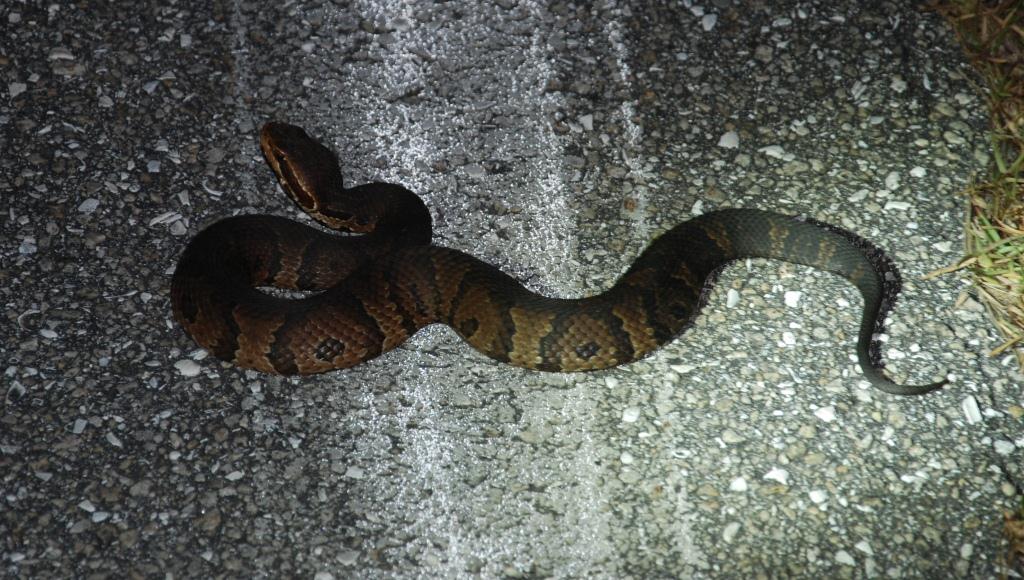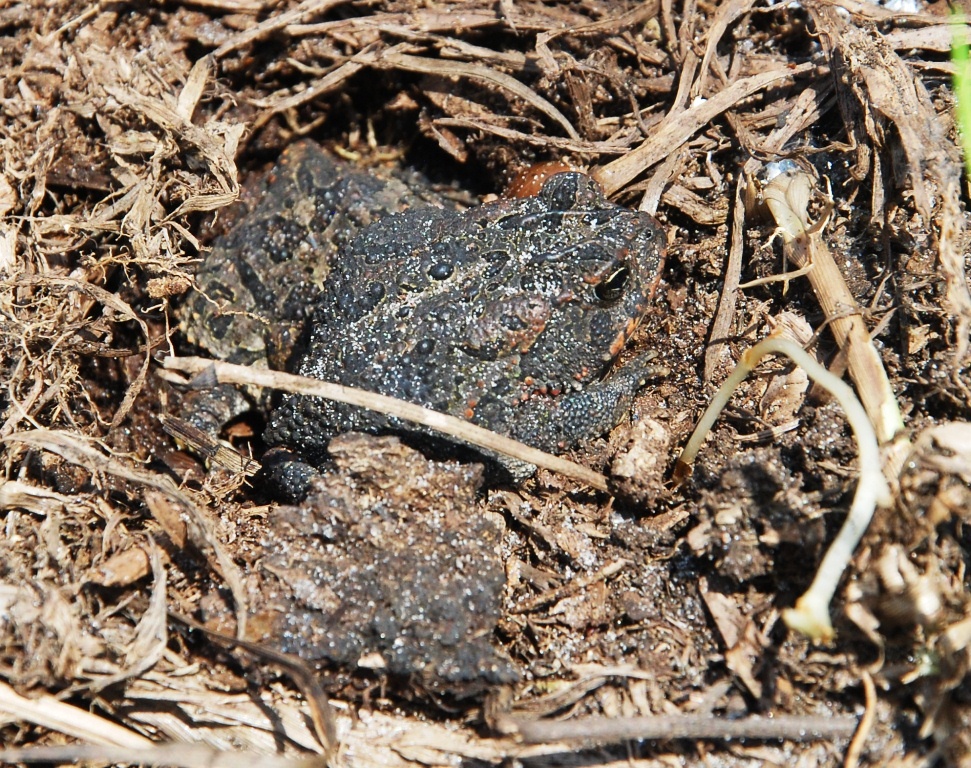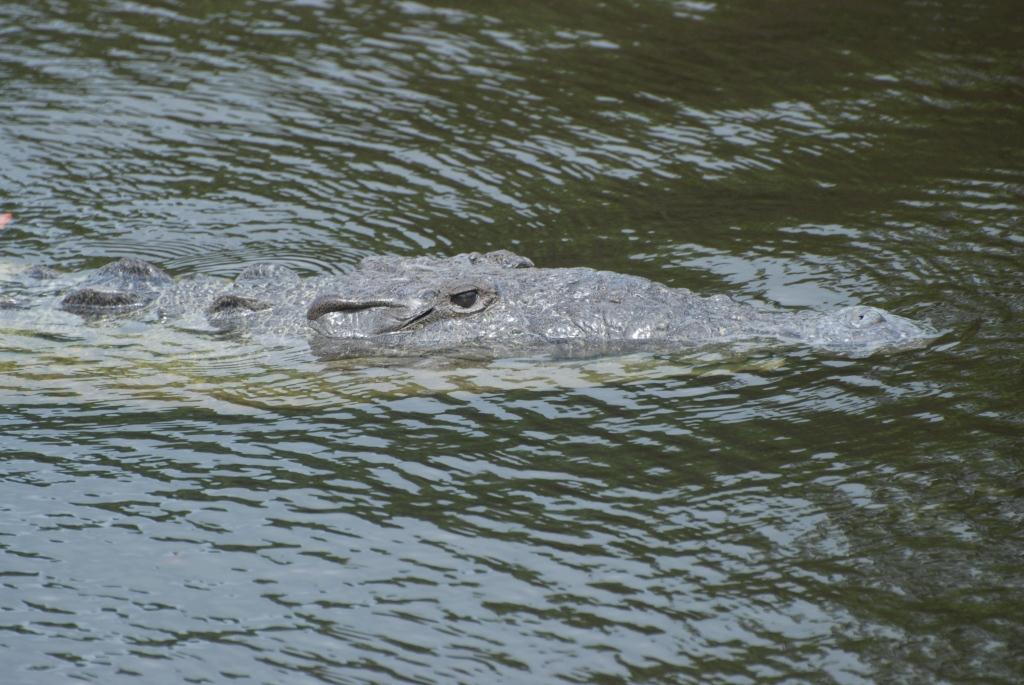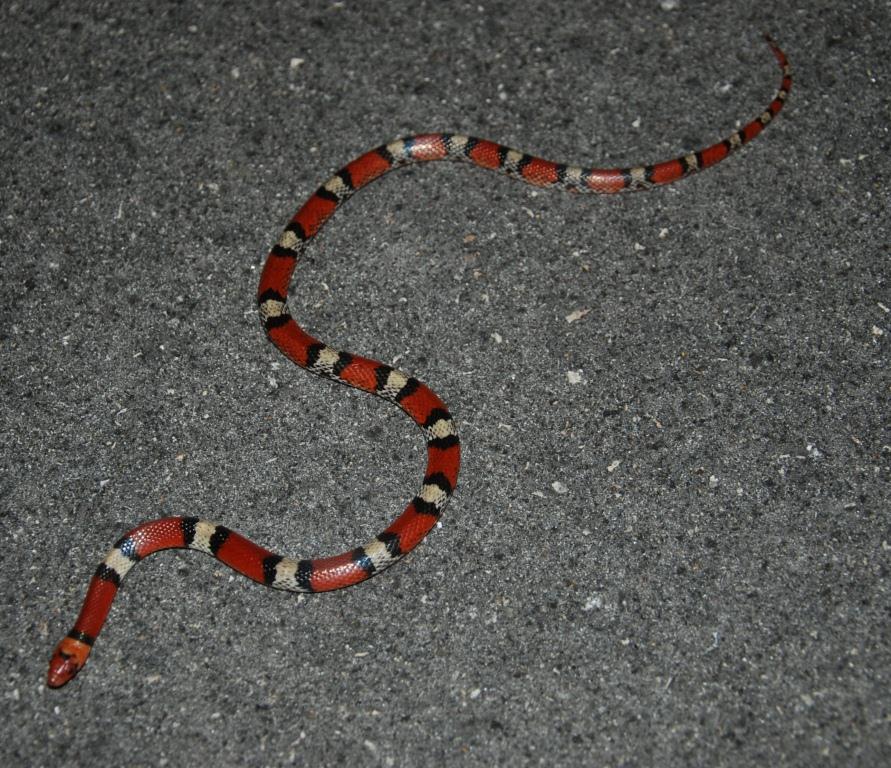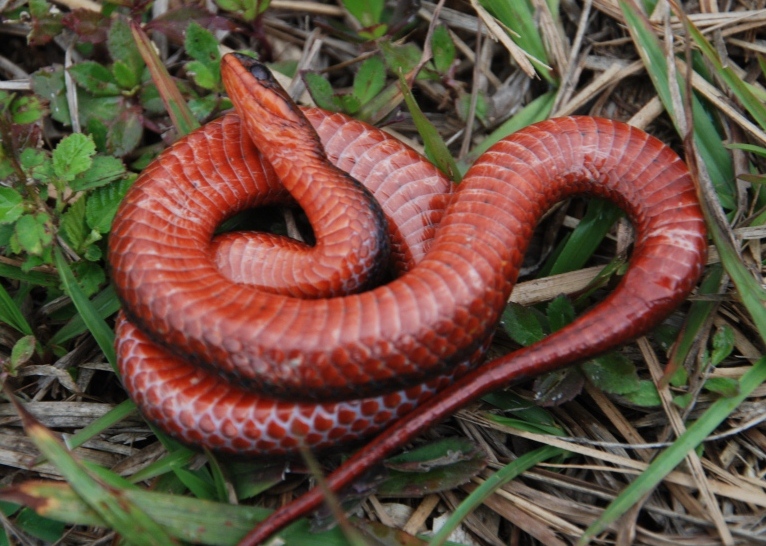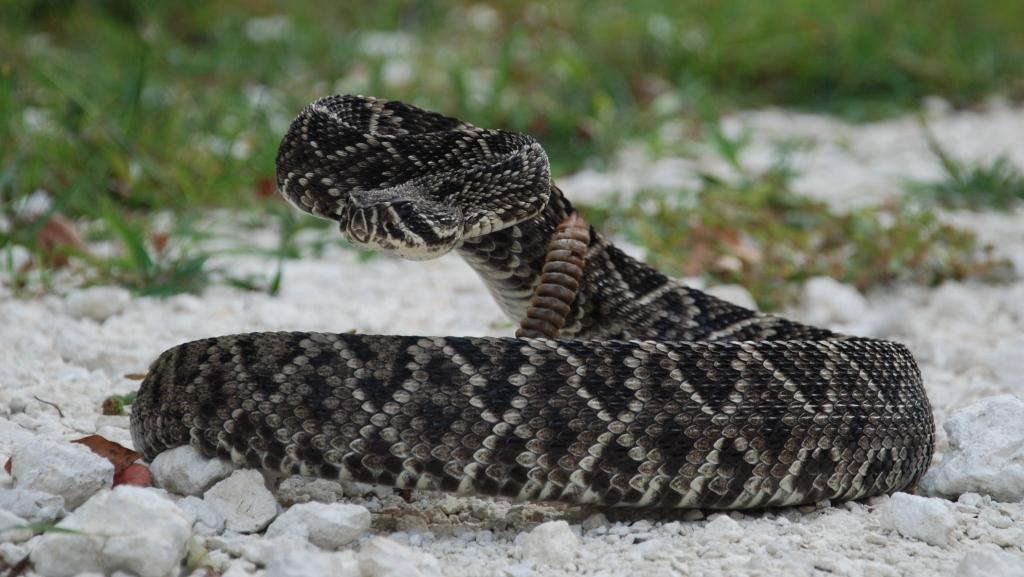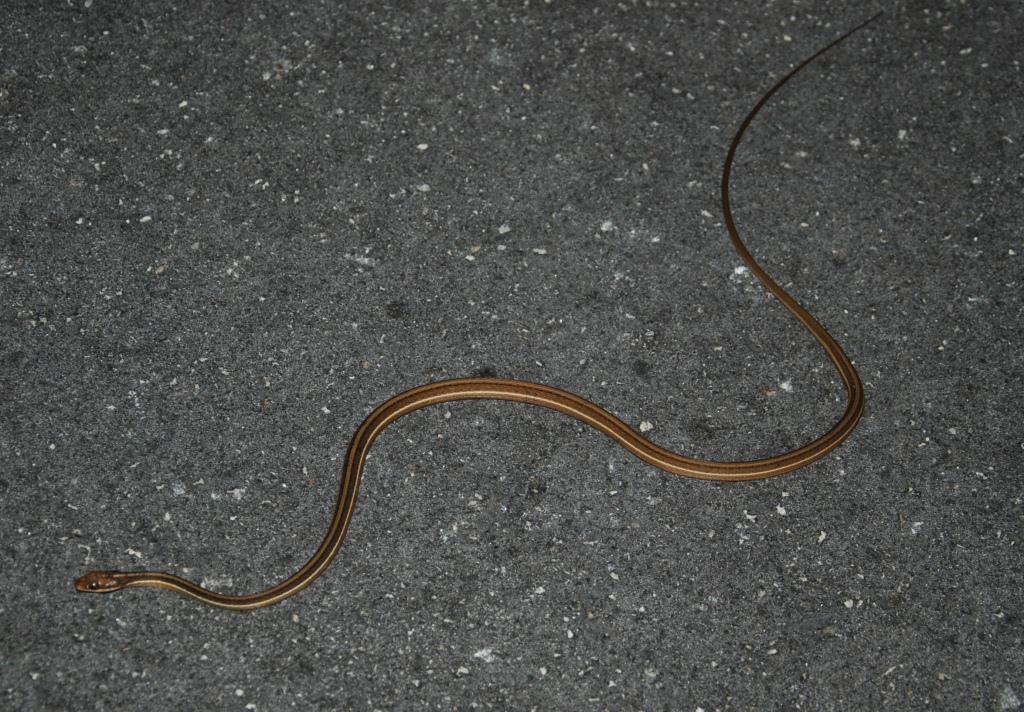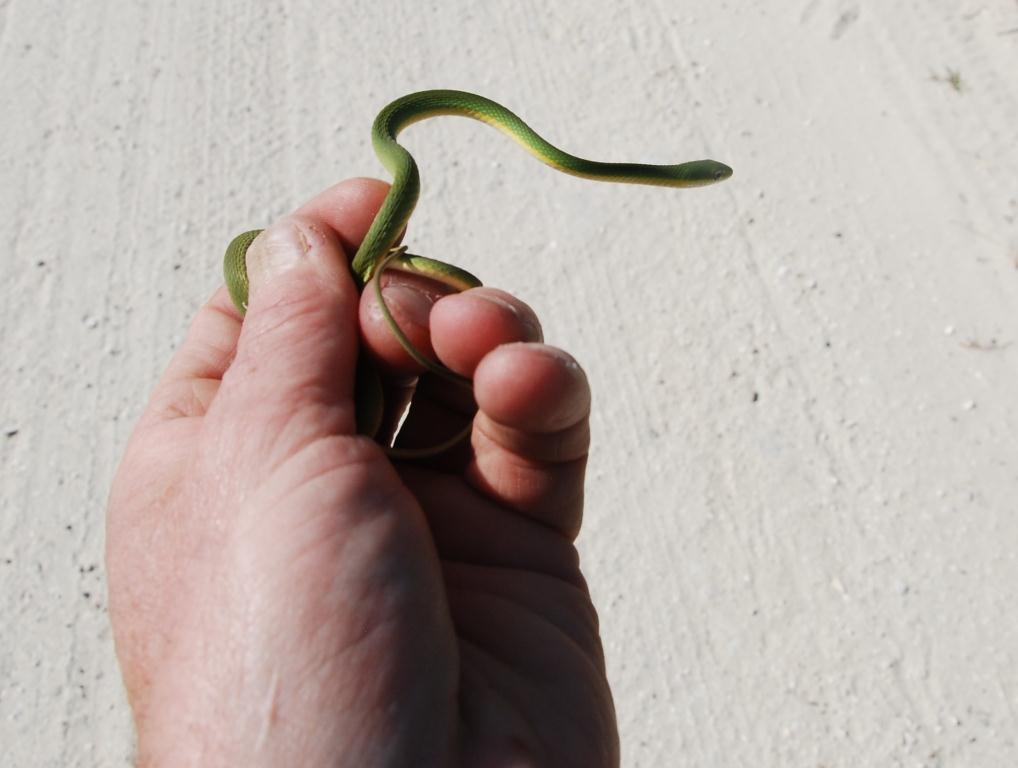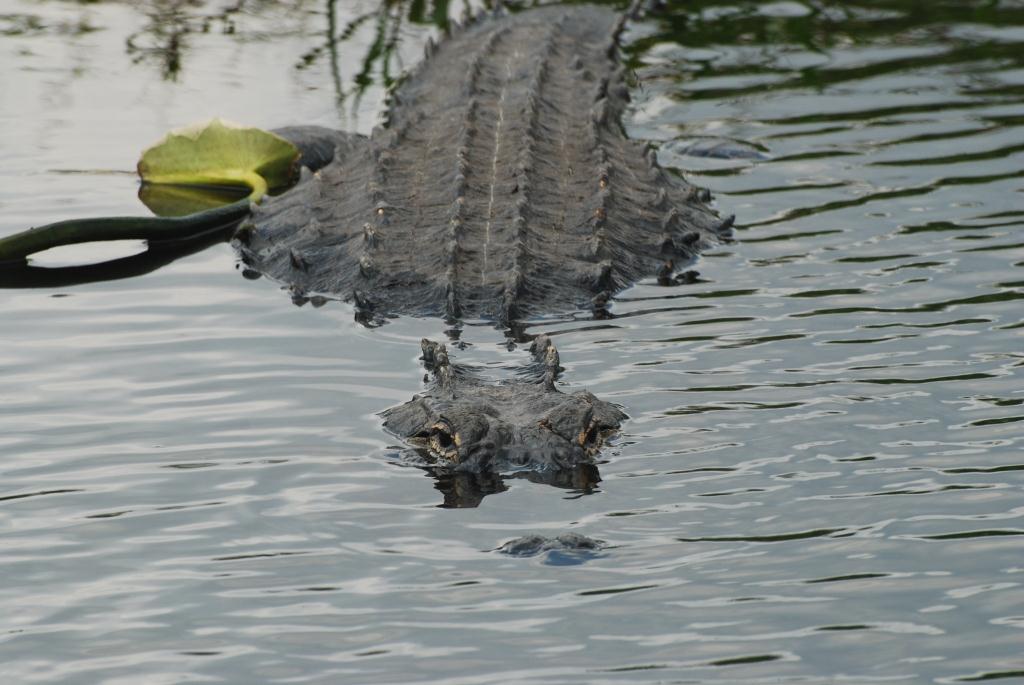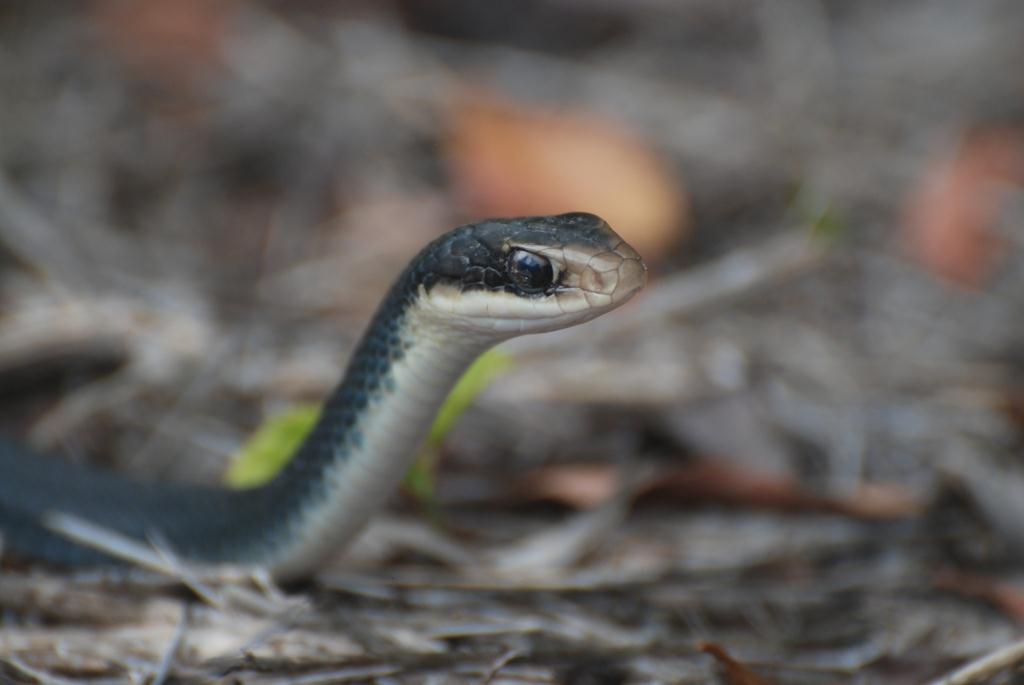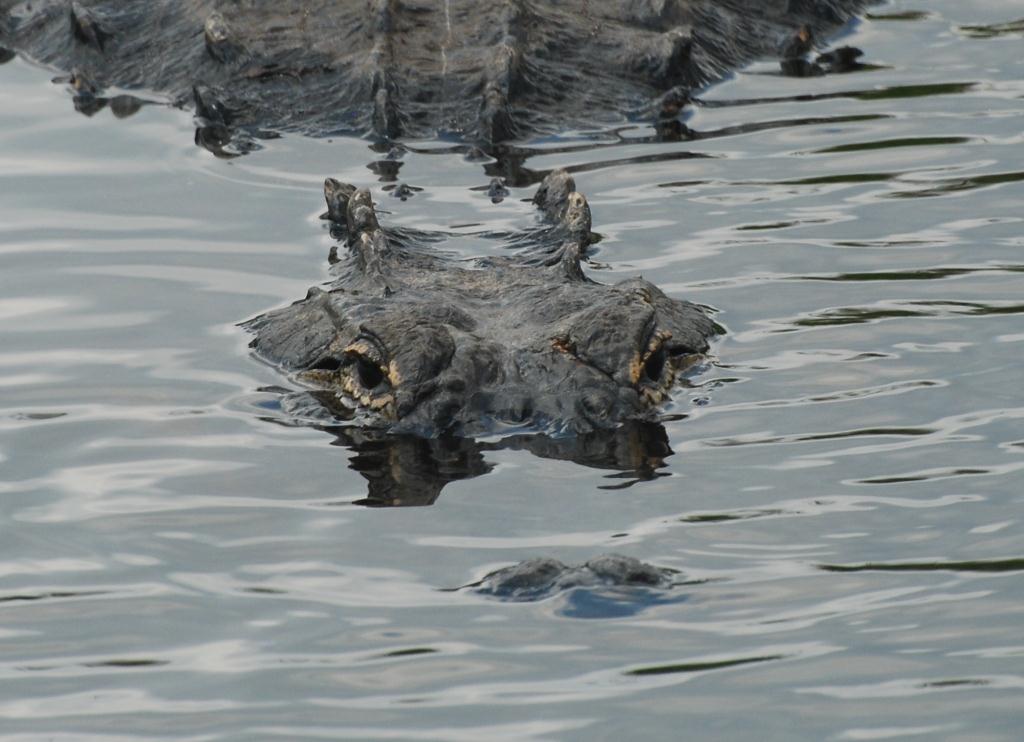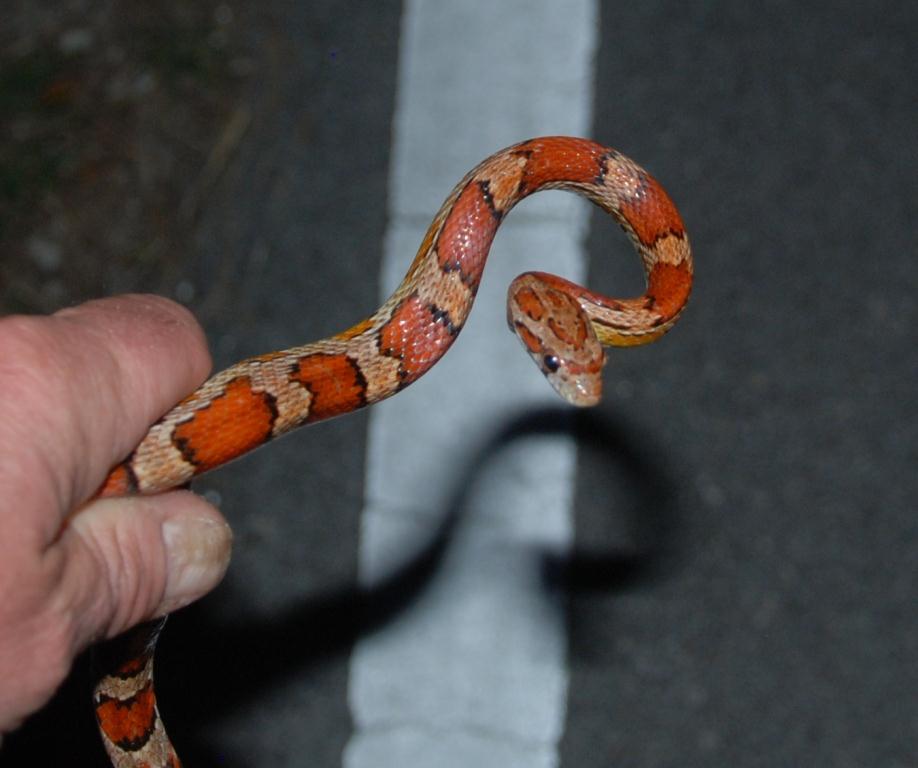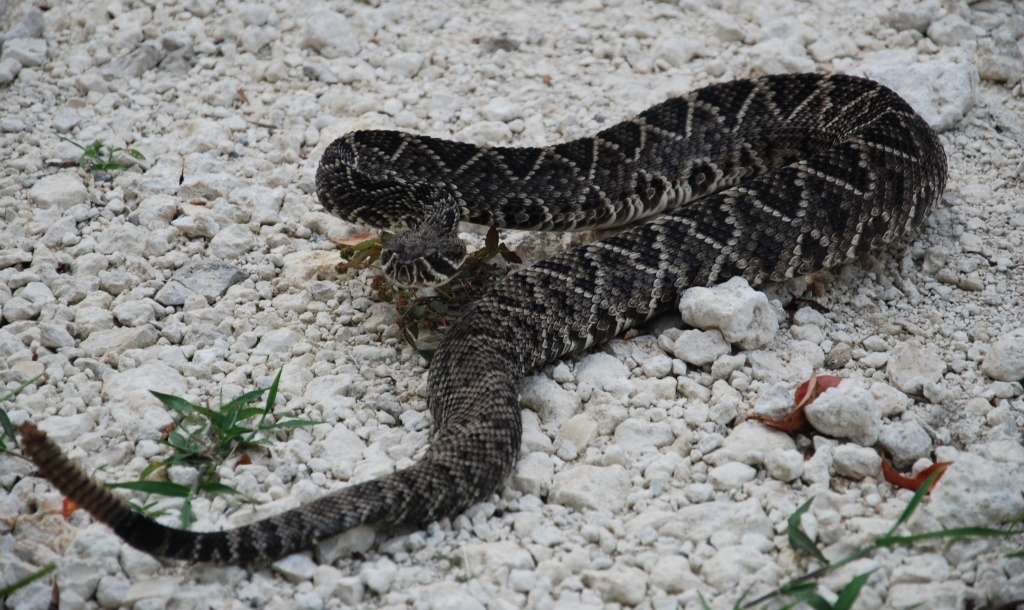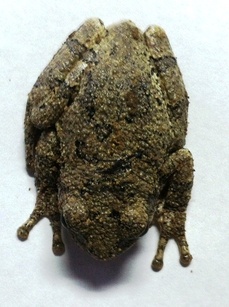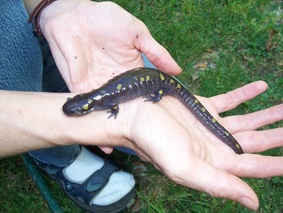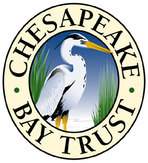 This project was launched with the generous support of the Chesapeake Bay Trust
This project was launched with the generous support of the Chesapeake Bay Trust
This site is a forum for the seventh grade MARA project. Photographs, audio and video recordings, and written accounts of reptile and amphibian observations and ideas for their conservation will be posted here. To visit the blog from the 2011-2012 project please go to: www.calvertfrogblog.blogspot.com
Data Maps 2016!
These are the maps of the herp reports received to date
June 15, 2016
We have been receiving reports via Google Docs and the findings have been mapped out.
Click on the image to see the map for each species. The map will load in a new window. Maps will be updated as additional data is received. Thanks to those classes that have submitted reports!
Click on the image to see the map for each species. The map will load in a new window. Maps will be updated as additional data is received. Thanks to those classes that have submitted reports!
More from our Friends at CMS
Ms. McCleaf's Students are still on Watch!
June 9, 2016
Here are a couple of additional records from Ms. McCleaf's seventh grade students.
Calvert Middle Students rack up the Herp Sightings!
Recent finds from CMS
June 1, 2016
Students from Ms. Campbell and Ms. McCleaf's classes have turned in some awesome recordings and photos of their sightings from the MARA project. A sampling of these submissions can be seen below. More images and recordings will follow....stay tuned!
Green Frog found near Calvert High School
Ms. McCleaf's students submit the first photo of the season!
May 11, 2015
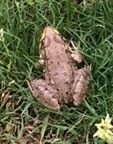 Northern Green Frog Prince Frederick, CW
Northern Green Frog Prince Frederick, CW
The recent rainy weather isn't always great for canoe trips, but it is perfect weather for frogs, as it allows them to venture from ponds and wetlands when they are in search of a meal or simply to find a new habitat.
While not an especially rare species, it's always great to find a Northern Green Frog hopping about. This frog was found near the athletic fields at Calvert High School (Prince Frederick, CW). Thanks for sharing this photo CMS students!
While not an especially rare species, it's always great to find a Northern Green Frog hopping about. This frog was found near the athletic fields at Calvert High School (Prince Frederick, CW). Thanks for sharing this photo CMS students!
Plum Point Students Taking Action!
Students work on projects to raise awareness and improve habitat
May 6, 2016
Mr. Pellock's classes have been working hard to help amphibians. Here are some of their projects that were completed as a part of the MARA unit.
Students in Frederick, Maryland participated in a study of Spotted Salamanders and other vernal pool species in an episode of Aqua-Kids. Adam Frederick, Maryland Sea Grant Education Specialist led a group of students to some salamander habitat earlier this year. An article about the project and a link to a 21 minute video of their adventure can be viewed at the link below.
Turtle Hatching Time
Baby turtles emerging from their nests
October 21, 2015
An alert Mr. Godwin, from our Department of School Facilities, spotted this hatchling Eastern Box Turtle behind the CCPS central office. While many of us have seen adult box turtles in our yards or perhaps crossing roadways, the hatchlings are much harder to find. Young turtles typically emerge from their nests in the late summer or early fall, although many will overwinter in the nest and wait until spring to dig their way out and start their new year.
Snake Sighting
October 21, 2015
Mrs. Slappy from Huntingtown Elementary sent in this photo last month, of an Eastern Gartersnake that she spotted in her yard. Gartersnakes are nonvenomous and beneficial reptiles that are fairly common in Calvert County. Thanks for the update Mrs. Slappy!
And some central Calvert MARA reports...
Mrs. Campbell's class posts their finds
June 17, 2015
Calvert Middle students have been busy making their observations from their backyards and neighborhoods.
Cope's Gray Treefrogs from Broome's Island, NE by Kristina D.
Some North County Sightings
NMS students send some of their observations
June 17, 2015
Students from Mrs. Thames' seventh grade science class have been busy recording their observations from the field. A variety of species were photographed by these observant students. Thanks for submitting your finds to the FrogBlog!
The CMS Frog Police
Watch this seventh grade "docudrama" centered on helping to protect our amphibians
June 16, 2015
Gannon T., Michael F., Gus A., Josh M., and Jake B. from Mrs. Campbell's class, teamed together to create a funny police drama with a message about helping reptiles and amphibians.
Amphibian Awareness goes Airborne!
CMS student take their message to the skies
June 15, 2015
Evan, Baylee, and Austyn from Mrs. Campbell seventh grade science class created an excellent amphibian awareness banner. The students attached their message to a glider, using a creative technique to gain attention for declining amphibians.
Amphibian Outreach!
Mrs. Campbell's students work to inform others about amphibian decline
June 15, 2015
Students from Calvert Middle applied what they learned about population declines in frogs and toads and created some excellent displays on the subject.
Sounds from Broome's Island
Calvert Middle students capture some frog and toad calls
June 15, 2015
Some alert students from Mrs. Campbell's class recorded some great audio of calling frogs and toads from the Broome's Island block. The Cope's Gray Treefrogs can be heard in all three recordings, while Michael F. also picked up some dueling Fowler's Toads.
Taking Action!
PPMS students help spread the word about amphibian decline
May 5, 2015
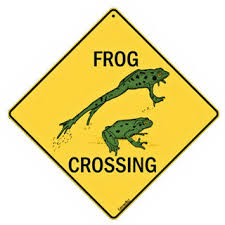
After working on their MARA unit in science class, Abbey and Gabby from Mr. Pellock's class developed a video with an important message about protecting our amphibian populations. We would be interested in posting more student work on the FrogBlog! Check out their video below.
Snapper Sighting!
Large Common Snapping Turtle found in Owings
May 5, 2015
Scott P. from Mrs Thames class at Northern Middle captured some video of a Common Snapping Turtle from a pond behind his house (Lower Marlboro, CE). The turtle was interested in a fish that was offered, but the turtle seemed to have trouble getting to its "free lunch"!
Sights and Sounds of Spring
Herps are on the move!
April 16, 2015
Despite a cold winter and chilly spring, reptiles and amphibians are on the move in Calvert County! On April 7 Ms. Laher from CHESPAX, recorded a nice chorus of Spring Peepers on Sixes Rd. in Prince Frederick (Broome's Island, NW). Just this week, Mr. O'Neill from CHESPAX snapped a photo of an Eastern Mud Turtle, right outside the CHESPAX office (Lower Marlboro, SE). We look forward to receiving audio clips, photos, video and other information from our seventh grade scientists!
Spring Peepers from Broome's Island, NW. Recording by Mrs. Laher
Opportunity for Discovery!
Calling all seventh grade scientists
March 12, 2015
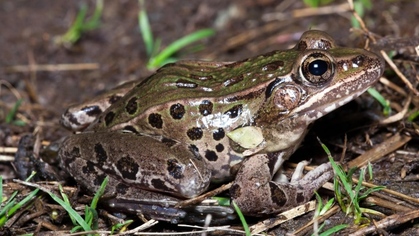 Atlantic Coast Leopard Frog or "Coughing Frog"
(Photo by New Jersey Department of Environmental Protection)
Atlantic Coast Leopard Frog or "Coughing Frog"
(Photo by New Jersey Department of Environmental Protection)
Would you like to help us document a frog species that is new to science? Back in December, we shared an article about the Atlantic Coast Leopard Frog, a species that scientists only recently discovered based upon its unusual call. Sometimes referred to as the "Coughing Frog", this species is nearly identical in appearance to the Southern Leopard Frog, but has a call that is quite different, almost a cross between the call of the Wood Frog and the Southern Leopard frog. Give it a listen below.
In addition to the regular MARA project, we would be interested in receiving recordings (Smartphone or other digital recorders are fine) of any Southern Leopard Frogs, Atlantic Coast Leopard Frogs, or Wood Frogs that you think that you may be hearing. CHESPAX will share them with Mr. Brown and the project scientists to see if this new frog species occurs in Calvert County. This is an opportunity for you to make a real contribution to science and to help establish the range of the Coughing Frog! Click on the Coughing Frog tab to upload your recordings.
A more in-depth article about the discovery can be found at the link below:
Frozen Frogs
Reptiles and Amphibians in the News
January 12, 2015
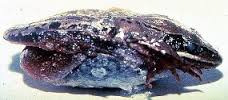 Adaptation to cold allows the Wood Frog, pictured above, to survive a deep freeze. (photo by the National Park Service)
Adaptation to cold allows the Wood Frog, pictured above, to survive a deep freeze. (photo by the National Park Service)
On these cold winter days, one may wonder what becomes of those reptiles and amphibians when winter really sets in and the temperatures drop well below the freezing mark? Some of Calvert County's frogs, such as the Wood Frog, can actually survive the severe cold, thanks to an adaptation that allows them to produce an "anti-freeze" within their cells. During the coldest days of winter, most of the water contained within the Wood Frog's body freezes solid, it's heart stops beating and brain functions stop. Once the weather warms, the frog comes "back to life" and it will begin it's spring chorus as early as February. This adaptation has allowed the Wood Frog to range well up into Canada and Alaska. To learn more about these amazing animals, read the recent article from the Appalachian Mountain Club's Outdoors magazine.
Cold Stunned Sea Turtles
Reptiles and Amphibians in the News!
December 15, 2014
A recent article in the New York Times reports that young sea turtles are stranding themselves on Cape Cod (MA) beaches in unprecedented numbers. Hundreds of turtles, stunned by the cold water in Cape Cod Bay, are washing up on beaches up and down the peninsula. Volunteers are rescuing many of these turtles and delivering them to aquariums, including the National Aquarium in Baltimore, where they can be properly treated and eventually released later next year in warmer water.
We should keep our eyes open along the Chesapeake Bay this winter. Sea turtles will occasionally will become stunned by the cold water and wash up on bay beaches. The hotline for stranded turtles (and marine mammals) is 1-800-628-9944.
To read the full text of the Times article, click the button below.
We should keep our eyes open along the Chesapeake Bay this winter. Sea turtles will occasionally will become stunned by the cold water and wash up on bay beaches. The hotline for stranded turtles (and marine mammals) is 1-800-628-9944.
To read the full text of the Times article, click the button below.
A New Frog Species Discovered!
Atlantic Coast Leopard Frog added to species lists for New York, Delaware, and New Jersey
December 1, 2014
Scientists have recently discovered a new species of frog within some of the most populated areas of the United States. The Atlantic Coast Leopard Frog was recently found in southern New Jersey, Delaware, and in marshes on Staten Island in New York City. The researchers noticed that the call of the frog was quite different from the expected species of Leopard Frogs from those areas.
The discovery highlights the importance of projects such as MARA which aims to identify species of reptiles and amphibians everywhere within the state of Maryland. Who knows what discoveries our seventh grade scientists will make this school year??
An article about the discovery can be found in a recent issue of the Courier-Post (Cherry Hill, New Jersey).
Final Results for 2014
The reports are in!
June 13, 2014
Many thanks to our seventh grade students and teachers who submitted data this season for the Maryland Amphibian and Reptile Atlas project. Clicking on one of the images below will take you to the Scribble Maps web page. The map will show you the blocks where the selected species was observed. The maps may take a few moments to load.
Taking Action!
CMS students Working to Raise Awareness about Amphibian Declines
June 5, 2014
An important part of the seventh grade MARA project is to submit data as a part of the research effort. We also encourage classes to help amphibians by raising public awareness about their decline or to take direct action by improving habitat for these animals. Students in Ms. Miller's class from Calvert Middle School did both of these things and some examples of their work are included below.
First, we have some excellent work using PowerPoint to spread the message about amphibians by Jessica M. and Kayla B. Please click on the links below to download the presentations.
First, we have some excellent work using PowerPoint to spread the message about amphibians by Jessica M. and Kayla B. Please click on the links below to download the presentations.
|
| ||||||||||||
Creating habitat in our backyards can be another way to help.
Several students in Ms. Miller's class created informative posters. Some of these posters are shared below.
And One from the South...
Fence Lizard spotted by Southern Middle teacher
June 5, 2014
The Fence Lizard is less frequently observed in Calvert than the more common, Five-lined Skink. This is a lizard to watch for, especially in the more northerly blocks, where we have few records of this species. Please try to get a photograph, as Ms. McKay of Southern Middle did recently. See the picture below that was forwarded by Mr. Stiffler to the CHESPAX staff.
Some Photographs from the North!
Here are some pictures collected by Northern Middle students
June4, 2014
Some alert seventh graders from Mrs. Thames' classes at Northern Middle have made some great sightings of reptiles and amphibians from their atlas blocks. We welcome these photographs from all of our participating students!
Reports are Coming In!
Students are finding Herps all across the County
June 2, 2014
Our student observations are central to the MARA project. Many of our seventh graders have documented their findings with their cameras and phones. Some interesting observations are posted below. The first set are from Mrs. Campbell's class at Calvert Middle School. The pictures below were taken by Hailey from Broome's Island, NW.
Here are some observations from students at Plum Point Middle School. Students from Mr. Kohan's class had some items to share. First, a great collection of photographs from Sierra B. taken within the Prince Frederick quad.
Hannah P. used the video function on her phone to capture the sounds of a Green Frog and a Cope's Gray Treefrog from the Prince Frederick, NE block.
Students from Mr. Pellock's classes at Plum Point have been making some excellent observations as well.
A Deadly Virus
Reptiles and Amphibians in the News
May 23, 2014
Our seventh grade students are gathering data about the distribution of reptiles and amphibians in Calvert County. Obviously, this helps us to determine where populations of these animals are located, but equally important are data that show where herps are not being found. This is especially true when we consider the diseases that are becoming a serious threat to reptile and amphibian populations.
One potentially devastating virus is the ranavirus (literally meaning "frog virus"). This disease is especially harmful to amphibians in the tadpole or larval stage and can be easily transmitted to other amphibians or to other herps that feed on the dead or dying tadpoles.
A recent article in the Bay Journal discusses this virus that is becoming more prevalent in Maryland and highlights the importance of our work in the MARA project.
One potentially devastating virus is the ranavirus (literally meaning "frog virus"). This disease is especially harmful to amphibians in the tadpole or larval stage and can be easily transmitted to other amphibians or to other herps that feed on the dead or dying tadpoles.
A recent article in the Bay Journal discusses this virus that is becoming more prevalent in Maryland and highlights the importance of our work in the MARA project.
Double Life!
Making a Change
May 21, 2014
To many people, the word "amphibian" refers to something that lives on land or water. However, the correct origin of the word means "double life", in reference to the life cycle of most frogs, toads, and salamanders in which they start life in a tadpole or pollywog stage, swimming like fish in small pond and puddles. These little creatures eventually change into the more familiar form of the frogs or toads that hop or leap about our backyards and natural areas.
This changeover from tadpole to frog is a fascinating one and was recently captured on video and through a photograph taken by Heather H. and Jenna C. from Ms. Nietmanns's class from Northern Middle.
This changeover from tadpole to frog is a fascinating one and was recently captured on video and through a photograph taken by Heather H. and Jenna C. from Ms. Nietmanns's class from Northern Middle.
Tiny Turtle Time
It's Turtle Season!
May 5, 2014
On Friday of last week, there were numerous sightings of baby turtles within Calvert County. Turtles normally hatch out in late summer and early fall each year. Some hatchling turtles will spend the winter in their nest chamber and emerge the following spring to begin to forage for food. The recent heavy rains may have driven these little reptiles from their nests and out into the world!
Keep your eyes open for female turtles who will soon be out on the crawl looking for a place to nest.
Keep your eyes open for female turtles who will soon be out on the crawl looking for a place to nest.
Snakes Alive!
Some Snakes are Climbers
May 2, 2014
Bailey L. from Mr. Pellock's class found this Eastern Ratsnake climbing straight up a tree trunk in Prince Frederick, NE. Ratsnakes are one of the few species that have the ability to make this vertical climb. Ratsnakes feed largely on rodents, but will also ascend into the trees to look for birds as prey.
Amphibian Poetry
Frog and toads featured on The Writer's Almanac!
April 9, 2014
The April 7 broadcast of Garrison Keillor's The Writers Almanac featured several natural history related, literary references. Of particular interest was his reading of Plains Spadefoot Toad written by Tom Hennen. Mr. Keillor's recorded reading of the poem is found below the text.
Plains Spadefoot Toad by Tom Hennen
Toads are smarter than frogs. Like all of us who are not good-
looking they have to rely on their wits. A woman around the
beginning of the last century who was in love with frogs wrote
a wonderful book on frogs and toads. In it she says if you place
a frog and a toad on a table they will both hop. The toad will
stop just at the table's edge, but the frog with its smooth skin
and pretty eyes will leap with all its beauty out into nothing-
ness. I tried it out on my kitchen table and it is true. That may
explain why toads live twice as long as frogs. Frogs are better at
romance though. A pair of spring peepers were once observed
whispering sweet nothings for thirty-four hours. Not by me.
The toad and I have not moved.
Plains Spadefoot Toad by Tom Hennen
Toads are smarter than frogs. Like all of us who are not good-
looking they have to rely on their wits. A woman around the
beginning of the last century who was in love with frogs wrote
a wonderful book on frogs and toads. In it she says if you place
a frog and a toad on a table they will both hop. The toad will
stop just at the table's edge, but the frog with its smooth skin
and pretty eyes will leap with all its beauty out into nothing-
ness. I tried it out on my kitchen table and it is true. That may
explain why toads live twice as long as frogs. Frogs are better at
romance though. A pair of spring peepers were once observed
whispering sweet nothings for thirty-four hours. Not by me.
The toad and I have not moved.
Can Salamanders Help with Climate Change?
Interesting Article from the New York Times
April 9, 2014
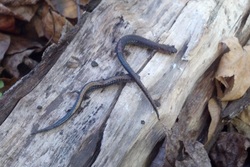
There was an interesting article on the potential role of woodland salamanders in helping to slow climate change in yesterday's (April 8, 2014) New York Times Science section. According to the article, salamanders prey upon tiny organisms such as beetle larvae, springtails and other invertebrate animals that serve as "shredders" of leaf litter. As the small invertebrates feed upon the fallen leaves in a forest, they tend to release carbon and methane into the atmosphere. When the number of these tiny creatures are held in check by the salamanders that prey upon them, there is a greater amount of carbon that can be held in the leaf litter and eventually be taken up by the soil, rather than being released into the atmosphere. Carbon and methane are two of the primary gases that are driving global climate change.
A link to the full article can found by clicking the button below:
A link to the full article can found by clicking the button below:
"Like an Old Man Snoring"
Pickerel Frog recorded on Broome's Island
April 4, 2014
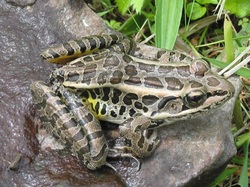 Pickerel Frog (photo by MD DNR)
Pickerel Frog (photo by MD DNR)
Andy Brown, the Senior Naturalist for the Calvert County Natural Resources Division is the county coordinator for the MARA project. Since 2014 will be the last year of the project, Mr. Brown has been working hard to fill in the gaps in the data from each of our 39 atlas blocks in Calvert County.
One species that remains somewhat elusive is the Pickerel Frog. This species calls fairly early in the season and its low call, which reminds us of someone snoring can be easy to miss without some extra effort.
Last week's rainy conditions seemed perfect for finding pickerel frogs, so Mr. Brown set up the SongMeter 2 "froglogger" in some prime habitat just off of Broome's Island Rd (Broome's Island, CE).
The frogs did not disappoint as you will hear by listening closely to the recording below (the call is more easily heard if you use headphones). You will also hear a couple of Spring Peepers along with the occasional "chuckle" of Southern Leopard Frogs in the background.
We encourage our seventh grade classes to set up their loggers to see what other discoveries can be made for the MARA project!
One species that remains somewhat elusive is the Pickerel Frog. This species calls fairly early in the season and its low call, which reminds us of someone snoring can be easy to miss without some extra effort.
Last week's rainy conditions seemed perfect for finding pickerel frogs, so Mr. Brown set up the SongMeter 2 "froglogger" in some prime habitat just off of Broome's Island Rd (Broome's Island, CE).
The frogs did not disappoint as you will hear by listening closely to the recording below (the call is more easily heard if you use headphones). You will also hear a couple of Spring Peepers along with the occasional "chuckle" of Southern Leopard Frogs in the background.
We encourage our seventh grade classes to set up their loggers to see what other discoveries can be made for the MARA project!
Spring is Springing!
Some recent sounds from the field
April 2, 2014
Step outside on an April evening and you are very likely to hear the sound of spring. If you have a pond, a wetland, or even a large puddle somewhere near your home, you have a great opportunity to hear the evening choruses of our local frogs and toads.
Mrs. Sturge from the Department of Instruction captured these Spring Peepers and Wood Frogs with her phone this week from her yard in Broome's Island, NE.
Mrs. Sturge from the Department of Instruction captured these Spring Peepers and Wood Frogs with her phone this week from her yard in Broome's Island, NE.
We would welcome your recordings and photos for the Calvert Frogblog! Please send them to:
[email protected]
Spotting Salamanders
Maryland's "other" Amphibians
April 2, 2014
Much of the work in our seventh grade MARA unit focuses on frogs and toads, these animals are often easier to locate because their spring choruses alert us to their presence. The salamanders often go undetected because of their silence and their secretive nature; typically burrowing into the forest floor or hiding under logs or other cover.
As we saw on our post on March 14, some species will move on cool rainy nights from the forest to their breeding ponds. We sometimes find them when working in our yards or gardens and the discovery of these elusive animals can be a delight.
CHESPAX Secretary, Mrs. Laher recently found these salamanders in her backyard (Prince Frederick, NW) while doing some spring cleaning.
As we saw on our post on March 14, some species will move on cool rainy nights from the forest to their breeding ponds. We sometimes find them when working in our yards or gardens and the discovery of these elusive animals can be a delight.
CHESPAX Secretary, Mrs. Laher recently found these salamanders in her backyard (Prince Frederick, NW) while doing some spring cleaning.
We are missing some of the common salamander species from many of our atlas blocks so be sure to get out there and start spotting salamanders for MARA!
Encyclopedia of Life!
Podcast on a rare Frog
March 26, 2014
A great resource for life science classes is the Encyclopedia of Life, an online collection of databases, photographs, videos, and podcasts that allow students to connect with authentic science about the biology of our planet. As we begin to look at resources such as podcasts as "texts" as a part of disciplinary literacy, EOL may serve as a valuable educational tool. Podcast topics range from unusual plants, to whales and venomous snakes. The podcasts are about 5 minutes in length and include written transcripts of the entire program.
The podcast below focuses on research being conducted on the Foothill Yellow-legged Frog, a species that appears to be in decline in its native habitat near San Francisco, largely because of the damming of rivers and creeks in the region. The scientists in the podcast discuss the importance of bio-diversity in a healthy frog population and provide a window into the world of real-world science.
The podcast below focuses on research being conducted on the Foothill Yellow-legged Frog, a species that appears to be in decline in its native habitat near San Francisco, largely because of the damming of rivers and creeks in the region. The scientists in the podcast discuss the importance of bio-diversity in a healthy frog population and provide a window into the world of real-world science.
Salamander Science!
Why are there so Many Salamanders in the Smokies?
March 19, 2014
Many of our seventh grade teachers are currently teaching concepts related to evolution and the impact of environmental change on the development of species. The extremely high diversity of salamanders in Smokies is the direct result of environmental change and then, geographic isolation, resulting in the evolution of one of the richest amphibian populations on the planet.
The video linked below was developed by middle school students at the Great Smoky Mountain Institute in Tennessee. Their musical approach to salamander evolution is a fun way to illustrate this concept and serves as a preview to the "Herp Unit"!
The video linked below was developed by middle school students at the Great Smoky Mountain Institute in Tennessee. Their musical approach to salamander evolution is a fun way to illustrate this concept and serves as a preview to the "Herp Unit"!
They're Baaack!
Herps are on the move in Southern Maryland!
March 14, 2014
It has indeed been a long and cold winter! The brief warm spell earlier this week was enough to trigger a response and bring some of our local amphibians out of hibernation. Observers around Calvert County reported numerous choruses of Spring Peepers and Wood Frogs. Spotted Salamanders were also observed moving toward their spring breeding ponds.
CHESPAX staff member Mr. O'Neill observed several spotted salamanders moving across his driveway in Huntingtown (PFNW) on Wednesday night and recorded a great chorus of Spring Peepers and Wood Frogs from his pond. Take a minute to listen to a fine chorus of frogs from this season.
CHESPAX staff member Mr. O'Neill observed several spotted salamanders moving across his driveway in Huntingtown (PFNW) on Wednesday night and recorded a great chorus of Spring Peepers and Wood Frogs from his pond. Take a minute to listen to a fine chorus of frogs from this season.
Students Taking Action!
California High School Students Work to Protect
Desert Tortoise Habitat
March 7, 2014
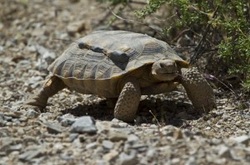
We recently learned of a project from southern California that involves high school students in the improvement of habitat for the threatened Desert Tortoise. This species has declined dramatically due to habitat loss, contact with Off Road Vehicles, and disease. The video (7:31) produced by these students, highlights the work that they have accomplished in protecting this tortoise of the Mojave Desert.
Does Road Salt Harm Amphibians?
Maryland Department of Natural Resources Issues Report
February 26, 2014
Another snowy day here in Calvert County! As the plows and salt trucks clear the highways to make for a safer ride for people, one may wonder about the impact of all of that salt (aka sodium chloride) on water quality for animals in local waterways. A report published by the Maryland Department of Natural Resources (MD DNR) last April, suggests that the volume of road salt that is being used may indeed be harmful for aquatic creatures, including amphibians.
According to the report, amphibians in particular are affected by the salt, as they have some difficulty regulating the concentration of salt within their bodies. Those amphibians that breed in the stormwater ponds such as those found on our school yards may be especially at risk, as the salt tends to accumulate in these habitats over time. Based on Maryland Biological Stream Survey data, the number of salamander species found in Maryland streams is lower with increasing chloride concentrations (see graph below). No salamanders were found in streams with chloride concentrations above 440 mg/L, and no more than two species were found in any streams with chloride concentrations higher than 190 mg/L.
Spotted Salamanders have shown particular declines at 145 mg/Liter of chloride concentrations. Some species such as Green Frogs may grow abnormally when there are high concentrations of salt.
According to the report, amphibians in particular are affected by the salt, as they have some difficulty regulating the concentration of salt within their bodies. Those amphibians that breed in the stormwater ponds such as those found on our school yards may be especially at risk, as the salt tends to accumulate in these habitats over time. Based on Maryland Biological Stream Survey data, the number of salamander species found in Maryland streams is lower with increasing chloride concentrations (see graph below). No salamanders were found in streams with chloride concentrations above 440 mg/L, and no more than two species were found in any streams with chloride concentrations higher than 190 mg/L.
Spotted Salamanders have shown particular declines at 145 mg/Liter of chloride concentrations. Some species such as Green Frogs may grow abnormally when there are high concentrations of salt.
For the full report click on the button below
Snapshots in Time: A Citizen Science Opportunity
February 10, 2014
A layer of ice remains on the ponds and wetlands during this unusually cold Calvert County winter. But the days are beginning to lengthen and spring cannot be too far away. In fact, within a couple of weeks, it is likely that some of our amphibians will emerge from their winter hiding places and make their way to spring breeding ponds.
A national organization known as the Orianne Society is interested in your observations of our earliest seasonal breeders, the Wood Frog and the Spotted Salamander. The group is interested in determining the impact of global climate change upon animals whose movements are so closely tied to temperature and precipitation.
For classes that wanted to get an early introduction to data collection before the start of the MARA unit, check out the link to the Snapshots in Time page below.
A national organization known as the Orianne Society is interested in your observations of our earliest seasonal breeders, the Wood Frog and the Spotted Salamander. The group is interested in determining the impact of global climate change upon animals whose movements are so closely tied to temperature and precipitation.
For classes that wanted to get an early introduction to data collection before the start of the MARA unit, check out the link to the Snapshots in Time page below.
MARA Project featured in Wildlife Acoustics Newsletter!
January 30, 2014
Our seventh grade project was again highlighted in the Wildlife Acoustics newsletter. The article describes the work being done by our seventh grade scientists and how we are using authentic technology in our research.
Reptiles and Amphibians in the News
Towson University Students work to protect Endangered Maryland Turtle
November 14, 2013
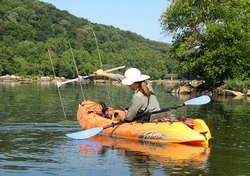
The Northern Map turtle is a rare species in Maryland. Found mainly in the Susquehanna River drainage, the turtle is threatened by waterfront development as well as problems with eroding shorelines and other habitat losses.
A team of university students and their professor are working with the local community to protect this reptile through scientific research coupled with a public awareness campaign.
To learn more about the project check out the article released by the University.
A team of university students and their professor are working with the local community to protect this reptile through scientific research coupled with a public awareness campaign.
To learn more about the project check out the article released by the University.
Seventh Grade MARA Project Highlighted in Wildlife Acoustics Newsletter!
October 19, 2013
Our seventh grade MARA project was recently featured in an article in the Wildlife Acoustics online newsletter. Wildlife Acoustics manufactures the Song Meter 2 (FrogLoggers) that we use to record night time sounds of calling frogs and toads.
St. Mary's Students incorporate STEM solution to Save Salamanders!
June 17, 2013
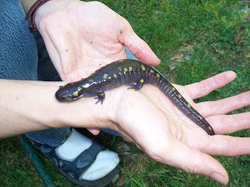
Some may remember our March 21 post about a salamander breeding pond in St. Mary's County being destroyed by ATV riders. Some high school students in St. Mary's devised a solution to protect these vernal ponds at the Elms Environmental Education Center. An article in The Enterprise recounts this great story of students taking action and applying STEM solutions to protect amphibians.
The Results are In!
We have your data compiled below
June 12, 2013
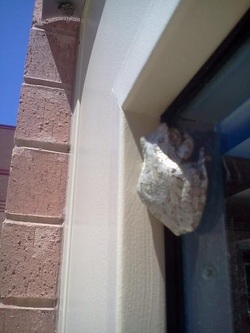
Thank you for your work in collecting data for the Maryland Amphibian and Reptile Atlas project. We have used the Scribble Maps site as a way to represent the species observed by our seventh grade students. Please click on the buttons to view the maps for each species.
Northern Green Frog |
Southern Leopard Frog |
Pickerel Frog |
Green Treefrog |
Fowler's Toad
Eastern Cricket Frog |
American Toad
Eastern Spadefoot |
American Bullfrog |
Cope's Gray Treefrog |
Sounds from down South!
Great frog chorus from Cove Point
June 10, 2013
Mr. Roth and Mr. Crowley sent a fantastic clip of frog and toads sounds from Cove Point, SE. There are bullfrogs, Fowler's Toads, Cope's Gray Treefrogs, Eastern Cricket Frogs and probably some other species as well. Click the button below to hear the recording. Note that this is a video file loaded on YouTube and is 7:07 in length.
Box Lunch!
A Lucky Day for a local Box Turtle
June 6, 2013
Mr. Harten from CHESPAX was bringing some old strawberries out to the compost pile at King's Landing Park (Lower Marlboro, SW). He saw a box turtle hanging out nearby and wondered whether the turtle would like a strawberry. Click on the button to see the video.
Some sightings from NMS Students
June 3, 2013
Mrs. Nietmann's class had some interesting reports from the last few days. Bobby P. from Prince Frederick, NW found this little American Toad while out cutting the grass.
A nice chorus of Green Treefrogs along with some Cricket Frogs and perhps some other species were recorded by Lauren D. in Lower Marlboro, NE.
More from Mr. Klapper
Mr. Klapper's yard continues to amaze!
May 28, 2013
Mr. Klapper of Southern Middle may have the best herp habitat in his own backyard (Solomons,NE)! He has already submitted great pictures of frogs, lizards, turtles, and snakes. Over the long weekend Mr. Klapper found another Eastern Box Turtle, but also a Northern Copperhead, our only venomous species in Calvert County. It is important that our students learn to recognize this species and keep a respectful distance. In the U.S., many bites from venomous snakes occur when people are attempting to capture these animals.
Snake Season
Serpents are on the Move
May 28, 2013
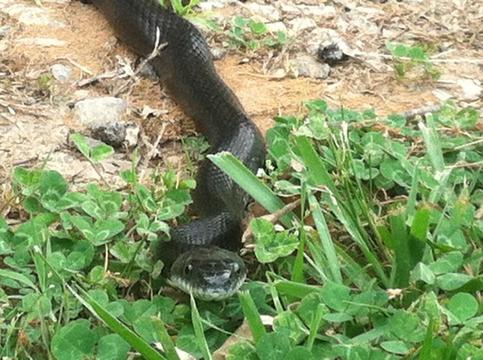
Eastern Ratsnake on the prowl.
As the temperatures slowly creep up, the snakes begin to crawl out! This was evidenced by recent sightings of two Calvert County constrictors (snakes that squeeze their prey).
The Eastern Ratsnake (left) was sighted by the CHESPAX staff today at King's Landing Park (Lower Marlboro, SE). The photograph was taken by Mrs. Daubon of CHESPAX.
The Eastern Kingsnake seen below is a less frequently encountered species in Calvert County. This one was found in a yard in Owings (North Beach, CW). The photographs were taken by Mr. Harten of CHESPAX.
The Eastern Ratsnake (left) was sighted by the CHESPAX staff today at King's Landing Park (Lower Marlboro, SE). The photograph was taken by Mrs. Daubon of CHESPAX.
The Eastern Kingsnake seen below is a less frequently encountered species in Calvert County. This one was found in a yard in Owings (North Beach, CW). The photographs were taken by Mr. Harten of CHESPAX.
And From the North!
A couple of reptiles spotted by Mrs. Thames' students from NMS
May 24, 2013
A Five-lined Skink and an Eastern Gartersnake were photographed by Jonathan W. and Caitlyn K. this past week. The gartersnake is in a defensive pose, trying to appear larger and more threatening. The snakes are non-venomous, but like most wild snakes, will bite if handled.
The Reports are Pouring in!
Sights and Sounds from mid-County!
May 23, 2013
As the weather warms up the reptiles and amphibians are on the move! Here are some great sound clips collected by students in Mrs. Campbell's class of Calvert Middle School.
This first clip is from Brandon H. who grabbed this fantastic chorus of Green Treefrogs in Prince Frederick, SW. There are at least four other species that can be heard on this track including Fowler's Toads, Cope's Gray Treefrogs, American Bullfrogs, and some Northern Green Frogs (2:30).
Click to set custom HTML
Levi S. from Prince Frederick, SW who collected sounds from several Cope's Gray Treefrogs (:48).
Click to set custom HTML
Courtney W. from Broome's Island, NE got these nice clear sounds of a Northern Green Frog (:48)
Brian Y. of Prince Frederick, SW had this incredible dueling chorus of Fowler's Toads and Cope's Gray Treefrogs (:20).
Click to set custom HTML
Timmy H. of Prince Frederick, SE captured some Cope's Gray Treefrogs with a couple of Fowler's Toads chiming in (1:02).
Click to set custom HTML
Next we see some images of a Fowler's Toad taken by Angel A. in Prince Frederick, SW. The toad was seen shortly after the grass was cut in Angel's yard. As mentioned in an earlier post, toads are great natural insect pest controllers that keep the bugs off of your lawn!
Here are some pictures by Ashley F. who found some baby box turtles in Broome's Island, NE. The baby box turtles are not seen nearly as frequently as the adults. Great find Ashley!
Finally, we have a picture of a Cope's Gray Treefrog taken by Taryn T. in Broome's Island
Snapping Turtles: On the Road
Sightings of Snappers continue
May 23, 2013
This Common Snapping Turtle was found near the entrance to King's Landing Park (Benedict, NE) by Mrs. Daubon of CHESPAX. Keep your eyes open for these great reptiles (but please keep your fingers away!).
Recent Sightings!
Here are a few pictures sent in from around the county and beyond!
May 21, 2013
Some alert teachers passed along some interesting photos of their observations outside of their classrooms.
This first set is from Mr. Klapper of Southern Middle School who made a few observations in his backyard in Solomons, NE.
This first set is from Mr. Klapper of Southern Middle School who made a few observations in his backyard in Solomons, NE.
As mentioned in earlier posts, both Common Snapping Turtles and Green Treefrogs were expected to be on the move soon. Both of these species were seen in the last couple of days. The snapping turtle was observed by Mrs. Thames of Northern Middle in the Deale, SW block. The Green Treefrog greeted Mr. Harten when we was opening the CHESPAX office (Lower Marlboro, SE) this morning!
Reptiles and Amphibians in the News!
Frogs, Salamanders and Climate Change
May 20, 2013
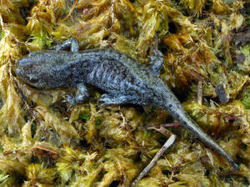
Mole Salamander
An article from Saturday's issue of Science Daily discussed the problem of global climate change for frogs and salamanders in the southeastern United States. The periods of extended droughts associated with a changing climate causes important breeding ponds to dry up and reduce the survival of tadpoles and salamander larvae in the region.
The increase of powerful tropical storms and hurricanes can be harmful as well. These major rain events result in the introduction of fish from adjacent ponds into vernal pools which are critical to the survival of salamanders. Hungry fish will prey upon the eggs and developing larvae of salamanders, including the Flatwoods Salamander, a federally threatened species. To read the full article click on the link below.
The increase of powerful tropical storms and hurricanes can be harmful as well. These major rain events result in the introduction of fish from adjacent ponds into vernal pools which are critical to the survival of salamanders. Hungry fish will prey upon the eggs and developing larvae of salamanders, including the Flatwoods Salamander, a federally threatened species. To read the full article click on the link below.
Mr. Klapper finds a Snapper!
May 16, 2013
Mr. Klapper from Southern Middle School was on a field trip to West River (Deale, NW) when he spotted a Common Snapping Turtle hunting around an algae covered pond. You may soon observe large female snapping turtles crossing over land to find a suitable place to lay their eggs. If you see one of these fantastic turtles, snap a picture, but keep your distance and respect the powerful jaws of Calvert's largest freshwater turtle!
Toad-ally Awesome!
May 15, 2013
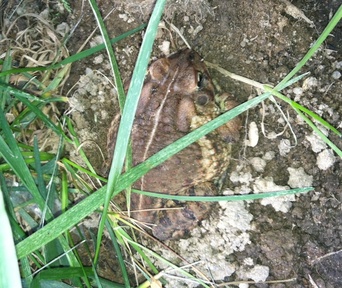
American Toad
Mrs. Nietmann from NMS found this nice American Toad in the Prince Frederick, SW block. Toads do a great job of pest control around our gardens and lawns.
Some Southern Sightings
May 15, 2013
Mr. Klapper from Southern Middle School sent some pictures of observations from the southern end of the county.
Watching the Watchers!
Sometimes the Frogs Come to You
May 9, 2013
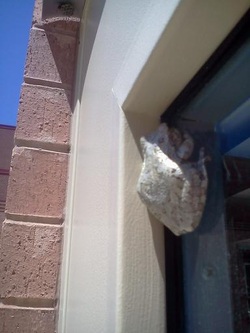
The students in Ms. McLeaf's class at Calvert Middle School (Prince Frederick, CW) were working on the seventh grade MARA unit in class today. They discovered that they were being watched by this little critter, a Cope's Gray Treefrog! They sent a picture of this seldom seen, but frequently heard tree frog.
Snakes Alive!
Gartersnake makes an appearance at MCMS
May 8, 2013
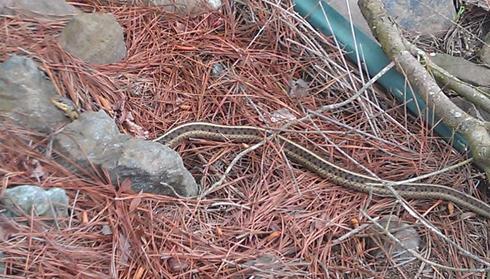
This Eastern Gartersnake was spotted along the bluebird trail at MCMS (Solomons, NW).
Mr. Hendrix's students were out checking bluebird boxes at Mill Creek Middle School (Solomons, NW) when this nice Eastern Gartersnake decided to check out the class! This is a great find for the MARA project. Please keep those pictures and sound files coming!
Reptiles and Amphibians in the News!
A nice write up of the MARA project!
April 29, 2013

The Baltimore Sun ran an interesting piece last month about the purpose of the MARA project. If you read on to the second page there is a mention of our seventh grade project in Calvert County!
Some Herps from outside of Maryland
April 24, 2013
Mr. Harten from CHESPAX recently took a trip to Florida for vacation. He visited some areas around the Everglades to see what kind of reptiles and amphibians he could find down there. Click on the pictures to see a larger image.
Three of these species can also be found in Calvert County. Do you know which ones?
Two of our middle school mascots are also found below, can you name them??
Three of these species can also be found in Calvert County. Do you know which ones?
Two of our middle school mascots are also found below, can you name them??
More Herps from Mill Creek Middle!
March 22, 2013
Mr. Hendrix students from Mill Creek Middle School (Solomons, NW) captured some great sounds on the FrogLogger on March 12. We can definitely hear Spring Peepers and Southern Leopard Frogs on the recording. What do you hear?
Click to set custom HTML
Reptiles and Amphibians in the News!
Salamander Habitat destroyed in St. Mary's County
March 21, 2013
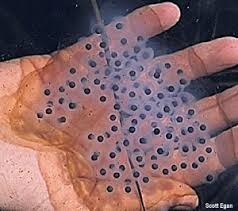
Important breeding ponds for spotted salamanders were destroyed by an A.T.V. rider at The Elms Environmental Education Center in St. Mary's county. These temporary pools are vital to the survival of spotted salamanders and wood frogs.
This article from The Enterprise describes the incident in more detail.
This article from The Enterprise describes the incident in more detail.
Reptiles and Amphibians in the News!
Scientists Discover Reasons Behind Snakes' 'Shrinking Heads'
March 20, 2013
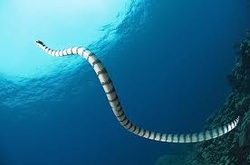
This interesting article discusses the evolution of a species of sea snake's "tiny" head as an adaptation for capturing fish on the sea floor bottom. Although not a Calvert County species (these snakes live in Australia and southeast Asia), they are interesting snakes and may possess the most potent venom of any snake in the world!
More Herps!
March 14, 2013
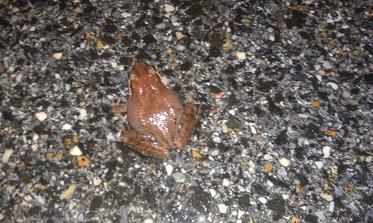
Mr. Hendrix from Mill Creek Middle School found this wood frog early in the morning at MCMS (Solomons, NW). Wood frogs are one of the first species of the season to start calling.
A FrogLogger deployed in the wetland near the canoe launch on the Patuxent River at King's Landing Park (Lower Marlboro, SE) caught these spring peepers warming up for their evening chorus. Give them a listen on the player below.
A FrogLogger deployed in the wetland near the canoe launch on the Patuxent River at King's Landing Park (Lower Marlboro, SE) caught these spring peepers warming up for their evening chorus. Give them a listen on the player below.
First Herp of the Season!
March 11, 2013
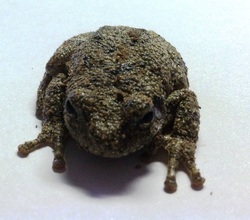
CHESPAX Secretary Liz Laher and her husband Bruce were working in their garden (Prince Frederick, NW) on Sunday (3/10) when they unearthed this beautiful little Cope's Gray Treefrog! This was the first herp of the season for the Calvert County Public School's MARA project.
Reptiles and Amphibians in the News!
Solar-powered Salamanders?
February 28, 2013
This article discusses research indicating that Spotted Salamander larvae (tadpoles) are able to use energy from the sun through a symbiotic relationship with an algae that grows upon their eggs. The young salamanders actually absorb some of the algae within their own cells and this provides extra fuel for more rapid development.
Read more at: http://www.newscientist.com/article/dn23090-zoologger-the-first-solarpowered-vertebrate.html
Click to set custom HTML
